

Weather in Spain in July: Everything You Need to Know
By: Author Hannah Cooper
Posted on Last updated: February 8, 2024

The weather in Spain in July is famously and infamously hot. Some love it, others find it unbearable.
While the average temperature in Spain in July can rise high above 30°C (86°F) in some areas, the northern region remains pleasantly cool. Furthermore, the Mediterranean coast and both island archipelagos are moderated by sea breezes.
This guide scrutinizes the July weather in Spain across all regions. It’ll help you figure out where to go (and where not to go) in July in Spain.
A Quick Overview of the Weather in Spain in July
After the splendid weather in Spain in June , July pushes into scorching conditions. Heat blankets the whole country. As well as high temperatures, you can expect sunny skies, bathtub-warm seas, and minimal rainfall.
July in Spain (along with August) is the peak of the tourism season. This coupled with the high temperatures means that these two months are the worst time to visit Spain for many people.
- Average Temperature : Temperatures in Spain in July tend to sit around 30°C (86°F) in the southern/central locations and may see highs exceeding 35°C (95°F). The northern regions are far milder with highs of 25°C (77°F).
- Precipitation : July is one of the driest months in the country with southern and central regions seeing minimal rainfall. Northern Spain expects 48 mm.
- Sea Temperature in Spain in July: The Mediterranean waters fluctuate between 20°C (68°F) and 30°C (86°F) on average.
July in Spain invites you to slip into a summer frock, spread a towel on sunkissed sand, and indulge in lengthy siestas under a wide-brim hat. When you’re not topping up your vitamin D, you can trot around cobblestone old towns and duck into a museum for a dose of culture – and air conditioning.
The weather in Spain in July is fierce and it really can be uncomfortable. Outdoorsy pursuits are still possible but you will need to arrange these around the midday sun.
The sun sets late so you can anticipate sipping sangria and cerveza into the wee hours after a siesta. There, you’re practically a Spaniard.
Barcelona is a city that is alive year-round, but you will find it packed to the brim during the summer months.
Barcelona: Balmy Urban Beauty
The hot Barcelona weather of July is cooled by the city’s coastal location in the evening. Days are spent wandering around parks and beaches with ice cream and stopping for iced coffee whenever the heat takes its toll.
Bear in mind that the typical attractions on a Barcelona itinerary are overwhelmed as the city swells with summer tourists. Be sure to plan ahead and secure skip-the-line admission tickets to avoid standing and sweating in long lines.
- Average Temperature : Free your shoulders and enjoy warm temperatures of around 29°C (84°F).
- Precipitation : Rainfall averages out at around 20mm.
- Sea Temperature : Coastal areas invite exploration with refreshing sea temperatures around 20°C to 25°C (68°F to 77°F).
- Activities : Make the most of the beaches of Badalona and enjoy a refreshing dip in the Mediterranean Sea. Head to hilly parks for beautiful views over the city – take advantage of the long days and climb up Montjuïc and Park Güell in time for the sunset. You can also take a day trip to Lloret de Mar and other Costa Brava seaside towns .
Northern Spain: Cool as a Cucumber
Northern Spain is refreshingly and reliably cool in comparison with all other regions. I can still feel pretty hot come July but far more agreeable to those sensitive to the heat or children.
Besides the verdant greenery, the beauty of the northern regions is the relative absence of crowds. Summer does bring throngs of holidaymakers to the Bay of Biscay beach resorts but it’s calmer than the southern coast. Enjoy comfortable temperatures cycling along the seafront and getting out on the trails.
- Average Temperature : Enjoy comfortable averages of 24°C (75°F) during the day and a cooling 16°C (61°F) at night.
- Precipitation : An average of eight drizzly days equals around 48 mm in July.
- Sea Temperature : Starting at 19°C (66°F) at the beginning of July it will hit 21°C (69°F) by the end.
- Activities : Sip wine in the vineyards of La Rioja and Galicia. Tackle a shorter segment of the Camino de Santiago. Kick back on La Concha Beach (one of the 12 Treasures of Spain ) or hop aboard a harbor cruise. While away the hottest parts of the day in the Guggenheim Museum of Bilbao.
You’ll no doubt be seeking shade and relaxing al fresco at dinnertime in Spain in July.
Málaga and the Costa del Sol: Inferno Central
Málaga and the Costa del Sol are two of the most popular vacation destinations in Spain in July. The city is a fine base as you’ll find a pleasing mix of amenities, cultural sights, nightlife, and beaches. Plus, the best day trips from Málaga take you to stunning natural sights.
It’s nigh impossible to escape the crowds but you can always find a spot for your towel on the Costa del Sol beaches . But – you’ll need to share the sand with large groups and little ones.
- Average Temperature : It’s rare to wake up to anything less than 30°C (86°F).
- Precipitation : One day of rainfall sees precipitation of 2 mm.
- Sea Temperature : The Mediterranean waters will top out at a lovely 25°C (77°F).
- Activities : Prioritize seeing outdoor sights in the morning and afternoon. The Alcazaba and Gibralfaro are two unmissable things to do in Málaga but they may take their toll in July. Remember to factor in a siesta before sitting down to a late supper.
You’ll find that between 3-6pm, hardly anyone is outside in Spain in July, especially in hot places.
Valencia in June: Hot, Hot, Hot Weather in Spain in July
The weather in Valencia in July picks up from where it left off at the end of June. The daily average creeps up and the chance of rain is low. It’s too hot to be out in the sun around midday but the city is packed with curious museums that fuse old and new. The green parks and beaches in Valencia beckon for R&R.
The perk of choosing Valencia over Màlaga is that it’s generally calmer than these busier resorts of the Andalucia region.
- Average Temperature : Daytime highs will reach 31°C (88°F) while cooler days and evenings drop to 20°C (68°F).
- Precipitation : July is the driest month of the year in Valencia with rainfall of 11 mm and usually only one wet day.
- Sea Temperature : Comfortable average temperatures of 25°C (77°F) put a daily dip in the Mediterranean on the agenda.
- Activities : Make the most of the efficient bus and train travel in Spain and get out of the city to small towns and historic sites. Of all the day trips from Valencia , the Caves of San Jose are ideal on a hot summer day.
Retiro Park comes to life in summer in Madrid.
Madrid in June: Dry as a Bone
The weather in Madrid in July is blistering. Whatever the temperature, it may feel even hotter due to the dry climate.
There are lots of galleries and cool spots to see in Madrid, although realistically you’ll want to plan to be closer to the coast at this time of year. Consider touching down at Madrid Airport , spending a night or two in the wonderful city, and heading neater the water.
- Average Temperature : The weather in Madrid in July averages 32°C (90°F). Heatwaves can push that upwards to 40°C (104°F) at times.
- Precipitation : 10 mm will affect three days on average. You might still want to pack a brolly to use as a parasol in the parks of Madrid.
- Activities : Spend days pottering around the distinct neighborhoods in Madrid . Pick up pastries and loll under the trees in Retiro Park. Make the most of the extended daylight hours by going out late to dine and spending a night cruising the tapas bars.
Alicante: Breezy Seaside Weather in Spain in July
Much as Valencia, Alicante ticks all the boxes with warm, dry days that are moderated by sea breezes. However, that means everyone wants a share of the seaside resort and the nearby Costa Blanca beaches do fill up. It’s not quite as busy as the Costa del Sol to the south.
- Average Temperatur e: Daytime temperatures hover around 28-30°C (82-86°F) but drop in the evenings. The sea breeze is always welcome.
- Precipitation : Rain is scarce and Alicante sees a monthly average of 4 mm.
- Sea Temperature : The average is an inviting 23°C (74°F) although it has been known to get as high as 27°C (80°F) which is crazy yet true.
- Activities : Enjoy the beaches in Alicante and get acquainted with this small yet charming city. A boat ride to Tabarca Island is one of the top things to do in Alicante in summer.
Alicante is a wonderful beach town with lots to explore and wonderful beaches to cool off at during July.
Almería: Desert Elegance
The July weather in Spain across Andalucia is hot and Almería is no different. Much as with Màlaga, this seaside city is cooled by the breezes and welcomes a temperature drop at night.
What does make Almería different is that the city experiences a desert climate and that can make the city feel very dry at times. It’s not advisable to visit the Tabernas Desert in summer when temperatures climb and really you’d be best saving this specific area for another season.
- Average Temperature : The average daily maximum will top out at 32°C (90°F) although Almería generally yields temperatures in the high 20s.
- Precipitation : As the driest month in most Andalucia towns, the rainfall average for July is 2 mm. Barely a drop.
- Sea Temperature : Like Màlaga, the water is a reliable 25°C (77°F) on average.
- Activities : Head out of the city to the Cabo de Gata Níjar Natural Park for a mix of hiking, kayaking, and beaching. Partake in an evening walking or food tour when the wind picks up. Visit the nearby caves and shelters used during the Spanish Civil War.
Seville: Sizzling Summer Weather in Spain in July
The weather in Seville in July is hot and arid. As with Madrid, the city is located inland and is not cooled by coastal breezes. The city may be too hot for some travelers and families with elderly relatives or little children should take care.
On the other hand, Seville’s sunshine-filled days mean the Moorish buildings sparkle all day and there’s no excuse not to indulge in a lunchtime vino de naranja.
- Average Temperature : On a cold day you’re looking at 20°C (68°F). On a hot one, you’ll wake up to 36°C (97°F).
- Precipitation : 1 mm in this dry, hot month.
- Activities : Consider booking a hotel with a swimming pool to maintain your cool. Go for a cruise along the Guadalquivir River. Sign up for such day trips from Seville as Parque Nacional de Doñana and the port city of Cádiz.
Seville is one of the hottest places in Spain in July, but there is still plenty to explore, just be sure to avoid going out during the hottest parts of the day (this is what siestas were invented for!).
Ibiza: Carefree Days on the Sand
Ibiza’s warm high-season temperatures call for late mornings, lazy afternoon siestas, and dancing into the night. Ibiza beach clubs bridge the gap between those looking for an upbeat ambiance without the intensity of nightclubs.
Avoid the crowded resorts by picking up a rental car from Ibiza Airport and heading north and holing up in a boutique resort on the cliffs.
- Average Temperature : Highs tend to reach 30°C (86°F).
- Precipitation : July is the driest month for Ibiza and sees only 3 mm.
- Sea Temperature : As with Alicante, the sea fluctuates between 23-37°C (74-80°F).
- Activities : The superclubs of Ibiza are in full spring come July. If you’re looking to let your hair down, you can party until dawn in Ibiza Town and Sant Antoni. Take a boat trip to the neighboring island of Formentera.
Hiking in Lanzarote is a fun thing to do when visiting, just be sure to start as early as possible to avoid the hottest part of the day if you’re visiting in July.
Canary Islands: Tropical Delight
Closer to the African continent than the European, the eight Canary Islands are the warmest places in Spain in winter . Temperatures rise during summer but not to extremes and the islands enjoy cooling breezes.
These volcanic islands are very popular with Spanish tourists as well as other Europeans and do fill up fast. Look beyond Tenerife, Fuerteventura, Gran Canaria, and Lanzarote for quieter conditions on La Palma, La Gomera, El Hierro, and La Graciosa.
- Average Temperature : With averages of 28°C (82°F) these subtropical islands are perfectly pleasant for summer sunshine.
- Precipitation : In general, nada! Although islands in the northern parts of the islands may receive a little as a result of trade winds.
- Sea Temperature : Spend all day floating in the Atlantic waters that stay around 22°C (72°F).
- Activities : Go stargazing at Mount Teide in Tenerife. Summer yields the clearest conditions and warm evening temperatures. Surfing is a year-round activity in the Canaries but summer brings calmer conditions making it the right time to enroll in lessons. Explore the subtropical national park forests of Garajonay (La Gomera) and Taburiente (La Palma).
Beach sunsets are pretty spectacular in Spain regardless of the time of year. It’s just special in July because the days are so long!
What Else Is Happening in Spain in June?
Besides checking out the weather in Spain in July, you’ll want to research events and festivities relating to tradition and pop culture.
- Mad Cool Festival : This major music festival is held over a weekend in July in Spain’s capital. It attracts Spanish and international pop artists with this year’s line-up including Dua Lipa, Bomba Estéreo, The Killers, and Sum 41. Hotels in Madrid do fill up and you’ll need to plan ahead whether or not you attend the festival/
- Festas do Apóstolo : The Feast Day of Saint James the Apostle, the patron saint of Galicia, is held in Santiago de Compostela. It usually runs for two days at the end of the month. Activities include concerts, theater, and ceremonial incense burning and bonfires. This is typical of the famous festivals in Spain in honor of national, regional, and local patron saints.
- Granada International Festival of Music and Dance : This festival consumes the entire city and sees a fusion of classical music, ballet, flamenco art, and traditional Spanish dances.
Best Places In Spain To Visit In July: 7 Top Destinations

There are countless choices when it comes to the best places in Spain to visit in July. Then again, what would you expect of one of Europe’s top summertime vacation destinations? Yep, a whopping 10.5 million people visit this country in any normal July. They come for the scorching sunshine, the good vibes, the history, the culture – the list goes on and on and on.
Want to join them? We can hardly blame you. There are some seriously alluring destinations in the mix, from sierra towns painted in blazing white to island destinations where the waves roll into wide beaches for the surfers.
Our guide to the best places in Spain to visit in July aims to whittle that long list of potential places down to a bite-sized seven options. We’ve gone for an eclectic mix, what with cityscapes and rugged coastlines, hidden highland villages and Basque Country culinary hubs alike. Happy travels…
Table of Contents
Costa Brava

Dubbed the rugged coast for its rock-ribbed veneer and endless coves and pebble inlets, the Costa Brava trumps all the other costas that run the length of the Spanish Med. It’s replete with cracking beaches and beach towns, which don’t have the ridiculous levels of development you get further south. But it’s also got oodles of culture and style.
Yep, the gateway to the Costa Brava is no other than the big city of Barcelona . That’s a bucket-list-buster if there ever was one. Hit the Gothic Quarter to wander ancient alleys and shop in art galleries under the gaze of La Sagrada Familia church . Strut your stuff down Las Ramblas to people watch on one of Europe’s most iconic boulevards.
When it’s time to ditch the city streets, we can recommend heading north to the small town of Sant Martí d’Empúries or Platja de Riells, which come fringed with powdery arcs of sand. Even more dramatic are the pine-ringed beaches of Platja de Santa Cristina and Cala Rovira – the best that Catalonia has if you want our humble opinion!
Canary Islands

Here’s seven destinations for the price of one! Yep, the Canary Islands are a whole chain of rocks in the Atlantic Ocean that offer something a bit more exotic than the mainstay places of mainland Spain. They’re actually closer to Morocco than to the Costa del Sol – the flight down on its own is usually about 4.5 hours!
What’s great about the Canaries in July is that it’s not actually peak season. Most people look to this distant archipelago for their dose of winter sun. That means it hits its most expensive and busiest point in the middle of the winter months. Come July, the crowds aren’t as bad as they are in Malaga and Marbella et al. What’s more, temperatures tend to be a bit more bearable than they are in the Mediterranean – you’re looking at consistent mercury levels in the low 20s C (around the low 70s F).
The real decision here will be what Canary Island to visit. We’ve got a bit of a soft spot for the rugged landscapes of Lanzarote out east. It’s a place carved up by volcanic lava and dotted with cool surf towns like Caleta. However, others might like the hiking that’s on offer on Tenerife , the white-sand beaches of Fuerteventura, or the more off-the-beaten-path villages of little El Hierro.
San Sebastian

San Sebastian is the jewel of northern Spain. It’s only a stone’s throw form the French border and showcases the cream of Basque Country culture through its unique cuisine (a type of small-dish tapas that’s known as pintxos), architecture, and day-to-day life.
But we think it’s worth a place among the best places in Spain to visit in July simply because of where it is. Seriously, the setting is fantastic. You’ve got the ultra-green foothills of the Pyrenees mountains to the south and east. There are the gleaming waters of the Bay of Biscay to the north, beaches arched like scythes of golden sugar around them.
The proximity of all that nature has made San Sebastian a doozy for surfers and hikers. What’s more, the midsummer is a top time to hit the water if you’re a beginner on the board and the trails up high look great when the wildflowers are blooming. Back in the town itself, you’ll want to stay somewhere around the bustling Plaza de la Constitución, which is the heart of the old town at the eastern end of the famous urban beach.

Granada is one of the most enthralling cities in all of Andalusia. We love it because it has one foot in the sierras; the wild, sometimes-snow-topped Sierra Nevada, where bald peaks beckon hikers and forests thick with the scents of oleander and thyme roll down to empty valleys. To put it another way: It’s not your usual sand, sea, sun romp to the Costa del Sol.
But before you head out to explore the ridges of the greater region, be sure to set aside some time for Granada itself. The glorious Alhambra complex tops the town. That fuses arabesque architecture from the Middle Ages with elaborate gardens and Christian iconography to create what’s certainly one of the most amazing sites in Spain.
The city that spreads below that is a rambunctious mix of student town and historic center. It’s a place where tiny cerveceria (beer bars) linger down the alleys and where enticing tapas bars spill out onto the street corners.

The Festival of San Fermín brings the legendary bull run to Pamplona in early- to mid-July (6 th -14 th ). It’s often seen as something of a bucket-list right of passage for backpackers, having been eulogized by Hemingway and inspired many a work of art and literature. Whatever you think, you’ll want to be careful – the running of the bulls has claimed 15 lives since 1924!
Thing is, Pamplona is pretty wonderful even if you don’t make it for the iconic chasing bovines. The capital of Navarre province, it’s a historic hill town surrounded by fortification walls that were built in the 1500s. It sports one massive cathedral and streets of hauntingly elaborate Basque Country architecture.
Oh, and it’s on the Camino de Santiago, arguably the most famous pilgrimage route in Europe. Join that for an experience of a lifetime. It goes east into the snow-capped Pyrenees and west all the way to Galicia and the holy city of Santiago de Compostela.

Gaucín might just be the most handsome village you’ve never heard of. One of the fabled pueblo blanco (white villages) of Andalusia, it clutches the top of the dusty Sierra de Grazalema like a wisp of cloud. It’s far enough away from the bustling beaches of the Costa del Sol to retain its rustic charm, too – it’s about 45 minutes’ drive up a zigzag road from the port of Estepona.
There are only about two main streets in pint-sized Gaucín. They weave around a bluff of rock that forms the center of the city, the stone-built Castillo del Águila rising overhead as a reminder of just how old the whole place is.
You can split your time here between sleepy pursuits and energetic activities. For the former, there are plaza-side bars like La Fructuosa and Del Zorro taverna where you can settle in for long lunches of Spanish tapas in the shade. For the latter, the reserves of the Sierra Bermeja and Parque Natural Los Alcornocales beckon with hiking paths and waterfalls and more.

It should hardly come as a surprise that Majorca makes it onto our list of the best places in Spain to visit in July. The island has established itself as perhaps the top holidaying mecca in the whole country. Leaving Ibiza to the partiers and Menorca to the retirees, it’s risen among the Balearic chain as a versatile spot that can cater to all types of travelers.
After jetting into Palma de Mallorca, where you should certainly spend some time gazing at the great UNESCO cathedral, the whole island is your oyster. Most folks will head to the southwestern shore, where resorts like Magaluf pump with life and charming towns like Port d’Andratx have stylish yacht clubs and villas.
We like the mountains, though. Cue the Serra de Tramuntana . These rugged, sculpted rises of rock are now an official UNESCO reserve. They host charming villages like Soler and Fornalutx, where you can escape just a few degrees of coastal heat and enjoy orange juices fresh from the local citrus orchards. They’re also filled with hiking paths that connect lonely beaches and panoramic summits alike.
The best places in Spain to visit in July – our conclusion
It’s no easy task, pinning down the best places in Spain to visit in July. There are just so many awesome destinations in the home of tapas and twisting flamenco dancers . Options exist on the Med and on the Atlantic. There are mountain villages with access to hiking trails. You’ve got sand-peppered coast towns that like to party . The options really are endless. Our offering includes something from a whole range of different categories, no matter if you’re after Arab history under the sierras or wild nights somewhere in the Balearic Islands.
Reece is the creator and editor of Travel Snippet. He has visited more than 38 countries over a 10-year period. His travels have taken him through the majestic mountains of Italy, into the cities of central Europe, across the islands of Indonesia, and to the beaches of Thailand, where he is currently living. He is passionate about travel and shares his expertise by providing the best travel tips and tricks to help you plan your next adventure.
Related posts
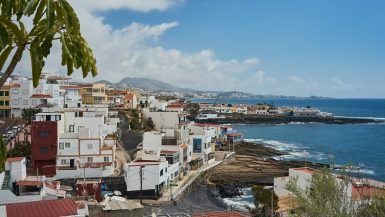
How To Travel Between Canary Islands: The Ultimate Guide

The 5 Best Fuerteventura Surf Spots For Beginners

Whale Watching In Tarifa: Best Time, Prices, & Tour Operators
July in Spain: Weather, What to Pack, and What to See
Spain in July can best be summed up in two words: hot and happening. Warm weather throughout the country makes the famous beaches seem more appealing than ever, and as part of peak tourist season, many popular destinations throughout Spain will be packed to the brims.
That being said, there's a lot to love about visiting Spain in July. The month sees fascinating cultural festivals and events happening throughout the country, and if anything, the soaring temperatures just give you an excuse to include the beach on your travel itinerary. Here's everything you need to know before heading to Spain in July, from weather specifics to the events you won't want to miss.
Spain Weather in July
Temperatures are on the high side throughout Spain in July, but can be more or less bearable depending on where in the country you are. Down south, Andalusia is famous for its scorching summer temperatures, especially in inland cities such as Seville and Córdoba , with average highs in the 80s and 90s, and lows generally in the 60s. The same generally tends to be true for central areas such as Madrid , while northern Spain is much milder, seeing averages in the 70s.
Rain throughout Spain in the summer is relatively rare, though northern areas especially can be prone to the occasional light shower or quick thunderstorm. Sunshine is plentiful, swimming conditions are excellent throughout the country, and humidity tends to be on the low side.
What to Pack
If blending in with the locals (or just not looking quite so touristy) is your goal, dressing for summer in Spain can be tricky. You'll want to be comfortable, obviously, but what you may see as summer clothing staples, in many cases, will scream "not from here" when you wear them in Spain (we're looking at you, t-shirts and flip flops).
The Spanish tend to dress quite fashionably, so think in terms of casual-chic pieces made with light, breathable fabric that won't have you suffocating as you explore the country. A solid pair of sandals will come in handy, but keep in mind that locals don't usually wear flip-flops beyond the beach. And when it comes to sun protection, you'll definitely want to throw a bottle of sunscreen (it's expensive in Spain) and a cute pair of sunglasses into your bag as well.
July Events in Spain
Art—both of the visual and performance variety—is the name of the game when it comes to July events in Spain. When you're not sightseeing or relaxing on the beach, be sure to add one of these fascinating events to your itinerary.
- PHotoESPAÑA (Madrid, June 5–September 1, 2019): Spain's largest photography exhibition, featuring works by talented photographers from all over the world.
- Festival de Granada (June 21–July 12, 2019): A world-class performing arts festival, with extravagant spectacles taking place in such legendary venues as the Alhambra.
- Grec ( Barcelona , June 26–August 31, 2019): Theater, dance, music, and circus come together to form this colorful festival lasting all summer long.
- Madrid Orgullo (June 28–July 7, 2019): Spain's largest gay pride event, with a full week of events celebrating love and diversity.
- Córdoba Guitar Festival (July 4–13, 2019): An epic musical celebration offering performances by some of the best guitar players in every genre imaginable, as well as classes and workshops.
- Sanfermines (Pamplona, July 6–15, 2019): Though most famous for its legendary bull run , this centuries-old celebration also features street parties, parades and more. Bullfighting is deeply rooted within global historic traditions. But today, local public opinion leans against the tradition. Though the site includes information for tourists interested in attending the events, TripSavvy trusts its readers to make their own decisions on the ethics of bullfighting as an attraction.
- Benicassim (July 18–21, 2019): An unassuming seaside town in Valencia hosts this eponymous music festival, with Lana Del Rey and the Kings of Leon among this year's headliners.
- Heineken Jazzaldia (San Sebastian, July 24–28, 2019): Spain's oldest jazz festival (and one of the oldest in all of Europe to boot), which features performances by icons such as Diana Krall and Joan Baez this year.
July Travel Tips
- July is the peak of peak season for tourism in Spain. Book your accommodation as early as possible, as hotels tend to fill up quickly (and prices rise to meet the increased demand).
- On that same note, keep in mind that more people will inevitably equal longer lines. Buy tickets for popular attractions, such as the Sagrada Familia in Barcelona and the Alcazar in Seville, online in advance when possible so you don't have to waste time waiting in lines the day of.
- Though August tends to be the month of choice for Spaniards heading on vacation, some choose to go in July. This means that many small businesses may close up shop for a few weeks in the summer while their owners and employees take a much-needed break.
August in Spain: Weather, What to Pack, and What to See
September in Spain: Weather, What to Pack, and What to See
The Best Time to Visit Spain
Plan the Perfect Trip to Spain
Where to Go in July in Spain
Top 15 Events in Spain in August
June in Spain: Weather, What to Pack, and What to See
The Very Best of Spain's Cities, Regions, Food, and Drinks
Best Cities to Visit in Spain in November
Barcelona in October: Weather, What to Pack, and What to See
Where to See a Bullfight in Malaga, Ronda, or the Costa del Sol
September in Los Angeles: Weather, What to Pack, and What to See
October in Europe: Weather, What to Pack, and What to See
October in Spain: Weather, What to Pack, and What to See
The 10 Best Traditional Festivals to Experience in Spain
July at Disney World: Weather, What to Pack, and What to See

Spain in July: Weather, Activities, & More
If you’re yearning for sizzling days framed with sun, vibrant festivities, and a bumping nightlife, you’ll definitely enjoy Spain in July. It falls in the middle of the summer and Spain’s peak season, which means hot weather, plenty of crowds, and tons of activities.
As the peak of summer, July promises an explosion of colors, energy, and cultural richness. Whether beach-bumming on its southern shores or exploring the historical sights of the mainland, there’s always something to steal your attention in Spain.
Continue reading for a breakdown of Spain’s weather in July and how the most popular regions differ in temperature.
Note: While you’re at it, check out the best cities to visit in Spain when planning your next adventure.
Climate & Weather in Spain in July
Spain is a large country known for its diverse climates that change from temperate to Mediterranean, depending on where in the country you are. Surrounded by both the Atlantic Ocean and the Mediterranean Sea, you’ll find differences in climate and temperature.
Hispania experiences intensely hot summers and mild winters. July, being the hottest month, embodies the full force of summer. You can expect soaring temperatures, endless sunshine, and a festive atmosphere throughout the country.
The usual temperature for the middle of summer ranges between 77 – 86°F (25 – 30°C) in the day. This is the norm across the mainland and near the south. But note that temperatures can climb to above 95°F (35°C). The north of Spain is far milder, often two to four degrees lower than the rest of the country.
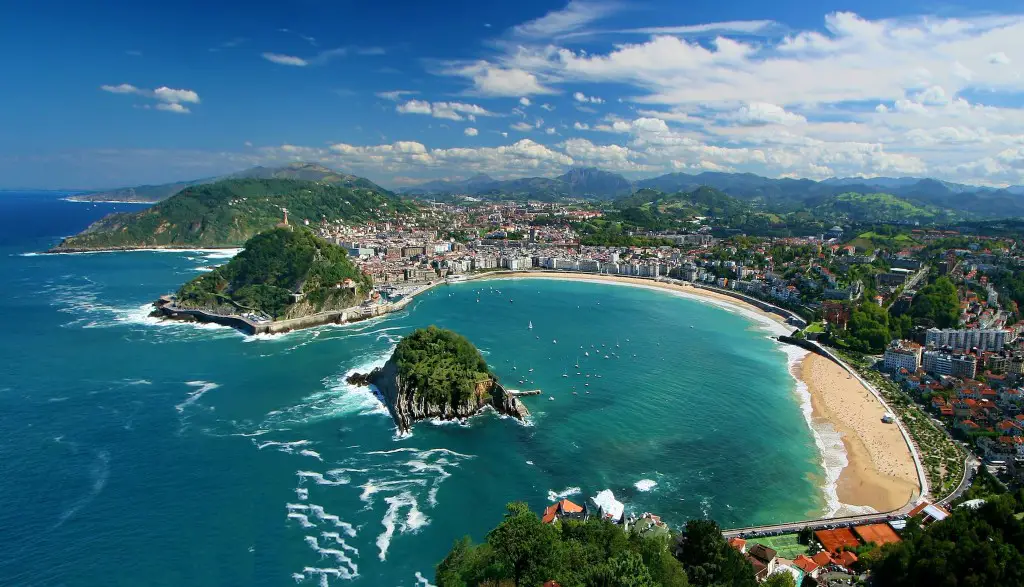
Weather in Northern Spain in July
The weather in Northern Spain offers a reprieve from the intensity of the mainland and the south. Expect typical highs of 79°F (26°C) during the day and 63°F (17°C) in the evening.
The sea temperatures of the north hovers around a pleasant 70°F (21°C), making the coast all the more appealing. With only an average of 2.4 inches (63 mm) of rain spread over nine days, the weather in Northern Spain is ideal for those seeking a more moderate climate for sightseeing and outdoor activities.
Weather in Southern Spain in July
Southern Spain, specifically Andalusia, showcases average temperatures of 86°F (30°C) during the day and 70°F (21°C) at night. While the Mediterranean Sea maintains a warm temperature of 73°F (23°C).
Rainfall in July is minimal, with only about 0.16 inches (4 mm) over a single day. For beach enthusiasts and sun-seekers, this region offers dreamy conditions with sunny days and warm nights.
The south is perfect for visitors looking for endless sun-kissed days on the beach and that iconic party atmosphere present in places like Ibiza and the Costa del Sol.
Where to Go in Spain in July
July marks one of the busiest and most expensive months to explore Spain. Coastal areas and beaches become prime destinations, providing relief from the heat.
Alternatively, heading inland or to the north offers a more temperate climate and a chance to escape the crowds — as well as milder temperatures and cloudier days.
Now, let’s take a look at some of the most visited areas in Spain and how they differ.

Madrid in July
Madrid’s temperature in Spain in July generally sees highs of 88°F (31°C) and lows of 66°F (19°C). The city’s humidity consistently remains low at 35%, promising a dry heat. Consider taking a dip in public swimming pools or visiting any of the capital city’s historical attractions to escape the afternoon heat.
Visit the iconic Plaza Mayor — Madrid’s main square in its old town. Other noteworthy attractions you should see include the Paseo del Arte, a half-mile stretch with three of the world’s best art museums , including the Prado Museum .
Be sure to visit the area, especially attractions like Retiro Park, during the cooler mornings. In the evening, meander along Gran Via to peruse the shops, unwind at movie theaters, and treat your tastebuds at restaurants.
Barcelona in July
When you visit Barcelona in July , you’ll find the weather sits at average highs of 84°F (29°C) during the day and 73°F (23°C) in the evening. The chance of rain is, on average, minimal at only a 9% chance of rain or 0.8 inches (20mm).
The city can get hot and humid, prompting some locals to seek cooler retreats up north. Hydration is key for daytime explorations, and arriving early at popular spots helps beat the crowds.
See beloved Catalonian attractions like the La Sagrada Familia or wander the Barri Gothic — Barcelona’s iconic medieval historic center full of Gothic architecture and stunning mosaics.
Tip: If you’re headed to beaches such as Barceloneta Beach, be sure to secure your beach spot as early as possible to avoid the crowds.

San Sebastian in July
You’ll find great weather on the northern Atlantic coast in the Basque Country. In San Sebastian, for example, the average high is a perfect 73°F (22°C) during the day and comfortable lows of 63°F (17°C) at night.
The sea temperature hovers around 70°F (21°C), inviting refreshing swims. Thanks to its sunny days and cool evenings, San Sebastian is a top pick if you’re seeking moderate summer temperatures.
You’ll want to spend your days at La Concha beach — a crescent-shaped bay that is symbolic of a relaxation haven with exquisite views and cool waters. Aside from the beachside activities you’ll undoubtedly enjoy, explore the Plaza de la Constitución in the heart of the old town or visit the San Sebastian Cathedral.
Malaga in July
Malaga, situated in Andalusia, sees temperatures soaring above 88°F (31°C) in the day and around 70°F (21°C) at night. The sea breeze keeps the humidity at a manageable 54%, creating an ideal setting for enjoying local cuisine with the pleasurable temperature.
Check out the best tapas bars in Malaga or indulge in seafood paella and refreshing sangria to beat the summer heat. But there are plenty of other things to do in Malaga, Spain , aside from eating and drinking. Visit the Museo Picasso or see the Alcazaba Fortress.
If you fancy the old-world charm of Andalusian architecture, as well as its proximity to Costa del Sol or “the Sun Coast”, Malaga might be your July destination.

Wrapping Up Spain’s Weather in July
When planning your July trip to Spain, prepare for the heat and vibrant atmosphere. Whether you opt for balmy beaches or cooler inland adventures, Spain in July promises a journey packed with coastlines, sightseeing, food, fiestas, and siestas .
To enhance your holiday, we’ve prepared a seven-day Spain itinerary so you can venture forth to Hispania with peace of mind.
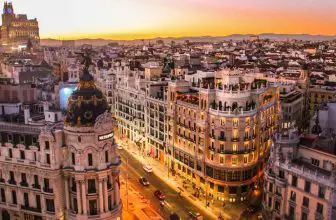
Spain in February: Weather & Things to Do in Spain

Spain in December: Weather & Things to Do
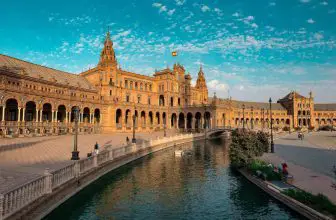
Spain in March: Activities, Climate, and More
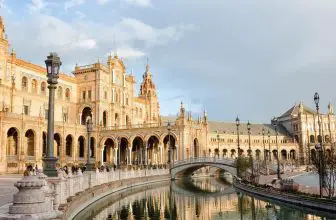
Spain in April | Weather, Festivals & Things to Do When Visiting
Leave a reply cancel reply.
Save my name, email, and website in this browser for the next time I comment.
- 8 Luxury Hotels in Gran Canaria | Boutiques, 5-star, & Resorts
- Málaga To Ronda Day Trip | Is It Better By Train, Plane, or Car?
Traveling in Spain aims to help tourists and locals find the best adventures, and tours in Spain. We collect live prices from trusted tour and ticketing operators. We’ll sometimes link out to our affiliate partners, such as Amazon LLC, and make a small commission at no extra cost to you.
Privacy Overview

Shopping cart
Spain in July Travel: Everything You Need to Know
The month of July is what Spain’s famous for—clear, summer sky, and vibrant local scenes. It’s definitely hotter than the previous months, and there are endless opportunities to make fun out of the beautiful weather. Spain in July is a good time to explore the southernmost regions, metropolitan cities , and secluded villages.
This time of the year is definitely crowded, especially in coastal cities where beaches are located. People head to the summer destinations to swim, unwind, and experience the sunny weather.
More than the beaches , visitors are in for remarkable experiences discovering the depths of Old Towns, medieval villages, lively plazas in different cities, and some hidden gems.
Best of all, traveling in July in Spain opens up opportunities for cultural explorations while celebrating local festivities. A host of events are happening at this time, from music festivals, stilt dances, and fishermen’s festivals . There’s a lot going on left and right, and visitors can jump in the fun with locals and have a remarkable holiday.
Table of Contents
July Weather in Spain
The gates of summer finally opened and the whole country’s experiencing intense heat and humid weather. As the days unfold, the temperature pushes at around 90 degrees Fahrenheit, leading locals away from the streets.
During this time of the year, visitors are spilling from literally everywhere—malls, plazas, narrow alleys, attractions, and others.
By July, Madrid is already insanely humid at around 95 degrees Fahrenheit in most days, and in some extreme circumstances, the temperature pushes to 100 degrees Fahrenheit. Locals are leaving the capital city for a while, going to the cooler climate on the Atlantic coast.
The Mediterranean coast is experiencing higher temperatures than the rest of Spain at 110 degrees Fahrenheit. A terral also happens by the latter part of July, going August , blowing a warm breeze down the villages.
At this rate, locals are avoiding the outdoors, staying mostly at home. However, tourists can still head to the beach and enjoy the sunshine.
The popular coastal city, Barcelona , is slightly cooler at 80 degrees Fahrenheit, but as travelers head south, the temperature’s going up.
However, going to the Atlantic coast in the Basque Country, the temperature is comfortable at 73 degrees Fahrenheit. Walking tours are doable as Spain in July weather is downright great, with lots of sun.
Must-See Summer Destinations
Knowing that July is peak season in Spain, all famous destinations and attractions are surely packed. From the Ibiza summer capital, to Barcelona, Costa Brava, and Madrid , the crowds are never-ending and travelers can find it harder to find a spot on the beach.
The must-see summer destinations are away from the crowd, leaning more on the distant side of the country. For those who want a refreshing summer holiday , get to the lesser-known locations like La Palma, Asturias, and Ávila.
Ávila

If passing by Madrid, don’t miss Ávila. It’s a city of three cultures and a notable birthplace of Santa Teresa, which is a notable pilgrimage location. Although the place has a rich cultural significance, not a lot of people go here, so it’s a perfect day trip destination from the capital city.
Boasting stunning brick and stone walls, the city is one of the most picturesque places in the whole of Spain . The medieval walls look a straight cut from a fairytale book, complete with the towering cathedral. Those who are after cultural tours can find delight in the city’s marvelous architectural structures and remains.
Along the Basilica de San Vicente, other points of interest in Ávila is the 15th-century monastery that served as a resting place for dead monks. The structure is rather interesting with arched hallways and whitewashed exterior.
For nature lovers, the best hideout is probably the Gredos Mountains, which is 2,500 meters in height, nestled on the far end of the city. It’s dappled with birch and oak forest, which looked greener in summer. Underneath the foothills is a vast glacial erosion separating Duero and Tajo rivers.
FIND HOTEL DEALS: Best hotels in Ávila.

A precious gem of the Canary Islands group , La Palma is a tropical paradise surrounded by lush forests and volcanoes. Although it’s located farther in Santa Cruz, the location has breathtaking landscapes and starry skies.
With lesser pollution, La Palma is a famous hideout of astronomers and stargazers. At night, the skies are clearer than in other parts of Spain , mesmerizing visitors with stars. The pristine island also has fine, sandy beaches, which is probably the highlight of the summer holiday.
The staggering surrounding teamed with stunning views, La Palma is no doubt a dreamy destination. July in Spain is the best time to visit this incredible island, running through the sands and rolling hills.
Other than swimming and sightseeing, visiting La Palma also means discovering the cobbled streets at Santa Cruz de la Palma. The streets are populated by century-old buildings with flowers spilling from the balconies. Aside from the colorful sights, there are impressive salt pans on the southern tip of the island.
When visiting, make sure to come here to witness the natural salt formation against the black volcanic rock. The production is small but it’s still a beautiful sight.
FIND HOTEL DEALS: Best hotels in La Palma.

Asturias is a mountainous region located in the northern coast of Spain . It’s the only part of the country that has never been conquered by the Moors. With gorgeous scenery and hiking trails, it’s undoubtedly one of the best places to visit for a laid-back holiday.
White cliffs and emerald water can be seen from a distance, highly endorsed by the sunbathers. Yearly, the place attracts surfers as strong waves are evident here. Small villages are also dotted across the city, offering cheap accommodation with beautiful views.
Never leave Asturias without trying the excellent Spanish cider or sidre. The taste isn’t sweet and freshly pressed from the apple juice. The capital of cider is in sidrerías, where a number of cider houses can be found. It’s where visitors can taste the flat version of the normal cider.
Festivals in July
Spain in July is popping with lots of colors, music, and fun. Because the weather’s good, everyone can have fun and enjoy a handful of parades, musical festivals, and other celebrations.
Día de la Virgen del Carmen
Spain is known as a religious country but locals especially know how to have fun. After the religious procession of the Virgin of Carmen to the sea, a party follows. This festival is celebrated to honor the Virgin, which protects the locals from coastal cities and towns.
It happens every July 16 and is celebrated not only by communities in Andalucia but also in Valencia, Puerto de la Cruz, and Granada province.
Days before Día de la Virgen del Carmen, devotees refuse to swim the waters until the prayers are made on the day of the festival. Following the religious practices, locals prepare a feast on the beach, complete with fireworks.
Danza de Los Zancos Festival

The festivals in Spain are totally unique and fun, and Danza de Los Zancos Festival is a testament to this. Every year on July 21 to 23, the locals of Anguiano in the La Rioja region celebrate a lively festival honoring Mary Magdalene.
Streets become wild and colorful with the dancers on wooden stilts about 50 centimeters in height. The catch is, these dancers aren’t women but eight local young men dressed in traditional wide skirts in white, blue, and yellow.
These stilt dancers come from the oldest families of Anguiano, and the tradition is passed down to children for hundreds of years. The appearance of these dancers also happens in September during the Ascension Day.
Guitar Festival
Music plays a huge role in the lives of Spaniards, that’s why music festivals are everywhere. Cordoba’s very own Guitar Festival is huge, featuring renowned flamenco artists, jazz musicians, and even dancers.
This festival is among the highlights of summer, which gathers thousands of tourists yearly. The prestigious festival also provides a stage for international talents who want to participate in playing the guitar.
Different shows take place all over Cordoba including the Grand Theatre, Plaza Capuchinos, the Congress Palace, and many more. Indeed, Spain in July is colorful, lively, and fun for tourists who want to see lots of acts and parades .
Check out these activities in Spain

Evan Kristine a.k.a Pretty Wild World is a professional travel blogger with over 10 years of experience in content creation. Originally from the Philippines, she's been living in Finland for 15+ years working as a chef and entrepreneur in Tampere, Finland.
She's an expert in Finland travel and explores the country often sharing her insights and tips in this blog and social medias. She also splits her free time either going for weekend getaways in Europe or galavanting to different European destinations on her holidays. All her useful Europe travel guides are also in this blog!
Evan Kristine is also the food blogger behind at The Kitchen Abroad and on her free time, she enjoys decorating her 75m2 apartment and shares her experience over at Solía Avenue .
A true master of her own life and despite her busy schedule juggling life as a chef, blogger, and entrepreneur, she still finds time to read 50+ books a year and indulge in several hobbies like hiking, working out, yoga, and painting.
Sharing is Caring
Help spread the word. You're awesome for doing it!

Journey Pursuits
July Weather in Spain: A Comprehensive Guide
As a travel enthusiast, you may be wondering about the weather in Spain during the month of July. Spain is a popular destination for travelers from all over the world, and for good reason. The country has beautiful beaches, vibrant cities, and a rich cultural heritage. However, before you pack your bags and head out to explore Spain, it’s important to understand what the weather will be like.
Temperature and Humidity in Spain during July
Spain is known for its warm and sunny climate, and July is no exception. During this month, the average temperature in Spain is around 28°C (82°F). However, temperatures can vary depending on where you are in the country. Coastal areas tend to be cooler, with average temperatures ranging from 22°C (72°F) to 26°C (79°F). Inland areas, on the other hand, can be much hotter, with temperatures reaching up to 40°C (104°F) in some places.
In addition to temperature, humidity is another factor to consider when planning your trip to Spain in July. The humidity levels in Spain can vary depending on the region you are in. Coastal areas tend to have higher humidity levels, while inland areas can be much drier. If you’re sensitive to humidity, it’s best to avoid the coastal areas and stick to the inland regions.
Rainfall and Sunshine in Spain in July
July is one of the driest months in Spain, with very little rainfall. However, there may be occasional thunderstorms in some regions, particularly in the afternoons. In general, the northern regions of Spain tend to be wetter than the southern regions, so if you’re looking for a drier climate, it’s best to head south.
In terms of sunshine, July is one of the sunniest months in Spain. The country sees an average of 11 hours of sunshine per day, making it a great time to explore the outdoors. However, it’s important to protect yourself from the sun’s harmful rays by wearing sunscreen, a hat, and sunglasses.
Best Places to Visit in Spain in July for Good Weather
Spain has many beautiful regions to explore, but some are better than others when it comes to good weather in July. Coastal areas such as the Costa del Sol and the Costa Brava are great options if you’re looking for a beach vacation. These regions have warm temperatures, low humidity, and plenty of sunshine.
If you’re looking for a city break, Barcelona and Madrid are both great options. While they may be slightly hotter than the coastal regions, they offer plenty of indoor activities to escape the heat. Plus, the nightlife in these cities is vibrant and exciting.
For a more cultural experience, consider visiting Andalusia. This region is known for its stunning architecture and historical landmarks, such as the Alhambra in Granada and the Mezquita in Cordoba. The region also has plenty of outdoor activities, such as hiking and horseback riding.
Packing Tips for Visiting Spain in July
When packing for your trip to Spain in July, it’s important to pack for the warm weather. Bring lightweight clothing made from breathable fabrics, such as cotton and linen. Don’t forget to pack a hat, sunglasses, and sunscreen to protect yourself from the sun.
It’s also a good idea to pack a light jacket or sweater for cooler evenings, particularly if you’re staying in the northern regions of Spain. If you plan on doing a lot of walking, bring comfortable shoes that are suitable for the terrain.
Safety Precautions for Traveling to Spain in July
While Spain is generally a safe country to visit, there are a few safety precautions you should keep in mind when traveling in July.
First, be aware of the heat. Stay hydrated by drinking plenty of water and avoid spending too much time in the sun during the hottest part of the day. If you start to feel dizzy or lightheaded, find a shaded area to rest.
Second, be aware of pickpockets, particularly in crowded tourist areas. Keep your valuables close to you and avoid carrying large amounts of cash.
Finally, be aware of the potential for wildfires. Spain is prone to wildfires during the summer months, particularly in the drier regions. If you’re planning on hiking or spending time in the countryside, be sure to check for any fire warnings or restrictions before heading out.
In conclusion, Spain is a beautiful country to visit in July, with warm temperatures, plenty of sunshine, and a wealth of cultural and outdoor activities. By packing appropriately, staying hydrated, and being aware of potential safety risks, you can have a safe and enjoyable trip to Spain.
Similar Posts
Insights on expat life in ghana, aviation jobs available in germany, exploring germany’s scenic routes by train, expat jobs in madagascar: opportunities for travelers, discover bird island mexico: a haven for avian enthusiasts, explore visa’s traveler benefits.

Weather in Spain in July (2024): The Ultimate Guide
The weather in Spain in July is all about sunshine and making the most of the long, warm days. The country really heats up, making it perfect for beach lovers and sun worshippers.
But if you’re thinking, “Is it too hot or just right?” you’re not alone in wondering. I’m not the biggest fan of the heat and humidity you get here this month but, living here in Spain, I’ve learned to navigate the July heat with a few tricks.
Whether you’re planning to enjoy the lively festivals of Barcelona or chill in the lesser-known, breezy spots of the northern coast, there’s a way to stay cool and have fun. Keep reading to find out the best places to visit and how to keep comfortable in the Spanish summer.
Table of Contents
Weather in Spain in July
Spain’s weather in July is typically hot and dry, especially in the southern regions, with quite high humidity. You’ll find much warmer temperatures inland compared to the coast. Most areas of the country experience little to no rainfall during this summer month.
Northern Spain enjoys milder temperatures and is generally more humid than the south. Cities like Bilbao and A Coruña on the Atlantic coast present pleasant conditions.
On the other hand, southern Spain, including Andalusia with cities like Seville and Granada, can get quite warm, with average highs either at or in excess of 34°C (93.2°F).
The Costa del Sol and surrounding coastal areas offer some respite from the heat, with sea breezes moderating the temperatures. That said, coastal average highs are still at least 30°C (86°F).
Throughout Spain, days are characteristically sunny, making it a popular time for beach holidays and outdoor activities. However, it’s a good idea to schedule outings for the morning or late afternoon to avoid the peak heat.
Not sure exactly when you’re coming to Spain? If you might be coming slightly earlier, take a look at what the weather is like in Spain in June .
Maybe planning to visit a bit later? Check out the weather in August in Spain to see what you can expect.
How Hot Is Spain in July?
In July, you’ll find that Spain’s weather is typically hot, especially in the southern regions. Average temperatures hover around 28°C (82°F), but they can peak much higher. It’s also a time when the heat is accompanied by a rise in humidity, making it feel warmer.
Southern Spain gets particularly warm during July, with cities like Seville and Cordoba experiencing higher temperatures than others. The coastline, on the other hand, including Costa del Sol, can be slightly cooler due to sea breezes, with temperatures often ranging from 24°C (75°F) to 29°C (84°F).
Northern Spain is less intense in terms of heat, with more moderate temperatures. It’s often the preferred destination for those who want to enjoy the summer without the extreme heat found in other parts of the country.
Keep in mind that these temperatures are averages and can fluctuate. Also, the heat is often most intense in the afternoon, while evenings can be considerably cooler, providing some relief from the daytime temperatures.

Which Part of Spain Is Warmest in July?
July in Spain means you’re greeted with abundant sunshine and high temperatures. The warmest part of Spain during this month is typically Andalusia, particularly the inland areas away from the coast. Seville often records some of the highest numbers, with average highs around 36°C (96.8°F).
Andalusia is a region that really heats up in July. Cities like Seville and Granada bask in the sun, with Seville leading the temperature charts. The Costa del Sol , while also quite warm, benefits from the Mediterranean breeze which makes the heat more bearable.
That said, some areas may not have the high temperatures seen in the south of Spain, but the humidity makes it seem much hotter. For instance, Barcelona and Valencia can often have stifling humidity levels thanks to their locations on the coast, so it’s a good idea to check beyond the actual temperatures when seeing what you may be comfortable with.
Which Part of Spain Is Coldest in July?
In July, the northern parts of Spain are generally cooler than the southern regions. If you’re looking for milder temperatures during this summer month, you should consider the Atlantic coast. Places like A Coruña in Galicia often have the lowest temperatures, making them a pleasant escape from the heat.
A Coruñ a is located in the northwest of Spain and city experiences July temperatures that are lower compared to the rest of the country. You’ll find the climate is influenced by the Atlantic Ocean, which brings cooler air and some rain, with an average of 30ml (1.18 inches) during the month.
A nother area with cooler temperatures is the Basque Country . Here, cities like Bilbao have an average maximum temperature much lower than other parts of the country. Though warmer than A Coruña, it’s still more comfortable compared to the scorching heat found in southern Spain.
Fortunately for your plans, July is one of the driest months in northern Spain, although occasional rain showers can happen. This means that, given these areas are cooler overall, they offer a great opportunity to explore the natural and cultural beauty of Spain without the intense heat found in other parts of the country.

Weather in Different Regions of Spain in January
Weather in southern spain in july.
In July, southern Spain is hot and dry, with long sunny days. You’ll find that temperatures often soar above 30°C (86°F), particularly in cities like Seville and Granada. It’s a perfect time for beach-goers seeking sun and sea on the Costa del Sol or Costa de la Luz.
- Temperature: Daytime highs often reach around 35°C (95°F), with nighttime lows averaging 20°C (68°F), leading to hot days and warm evenings.
- Average days of rainfall: Rainfall is rare in July, typically less than 1 day of rain.
- Average amount of rainfall: The region usually sees less than 10 mm (0.39 inches) of rain, indicating very dry conditions.
- Sea temperature: The sea temperature averages a warm 24°C (75°F), ideal for swimming and water sports.
- Number of hours of sunlight: Expect about 11 to 12 hours of bright sunlight per day in July, providing ample time for outdoor activities.
- Average humidity percentage: Typically ranges from 45-65%, with drier conditions inland and slightly higher humidity along the coast.
Weather in Northern Spain in July
July in northern Spain offers warm temperatures and generally dry conditions. You’ll find that it’s a popular time to visit due to the pleasant weather, given that it offers the perfect climate for exploring the region’s diverse landscapes and cultural attractions this month.
- Temperature: Average temperatures range from highs of around 25°C (77°F) to lows near 15°C (59°F), which is comfortable for outdoor activities.
- Average days of rainfall: There are around 5 to 7 days of rain in July, with occasional showers.
- Average amount of rainfall: The region receives about 40 mm (1.57 inches) of rain, maintaining a balance between sunny and rainy days.
- Sea temperature: Sea temperatures average around 19°C (66°F), which is refreshing for swimming and beach activities.
- Number of hours of sunlight: Northern Spain experiences approximately 9 to 10 hours of daylight per day in July, with extended evening light.
- Average humidity percentage: Generally ranges from 60-80%, reflecting the region’s more humid climate, especially near the coast.

Weather in Barcelona in July
You’ll find that July in Barcelona is typically warm and sunny, with very little rainfall. Average daytime temperatures hover around 28°C (82°F), ideal for exploring the city or relaxing on the beach, although be careful of the often overwhelming humidity. Evenings are milder, at least, making it a nice time to enjoy the city’s nightlife.
- Temperature: Average daytime temperatures rise to about 28°C (82°F), while nighttime temperatures stay around 20°C (68°F). The climate is ideal for both daytime adventures and evening excursions.
- Average days of rainfall: Expect approximately 2 days of rain in July, with brief and sporadic showers.
- Average amount of rainfall: Rainfall averages around 20 mm (0.79 inches), mostly in the form of short showers, leading to predominantly sunny and dry conditions.
- Sea temperature: The sea temperature in July averages about 23°C (73°F), which is quite inviting for swimming and other beach activities.
- Number of hours of sunlight: Barcelona enjoys around 10 to 11 hours of sunlight per day in July, with long and sunny days.
- Average humidity percentage: Ranges from 60-70%, with coastal humidity contributing to milder mornings and evenings.
Weather in the Canary Islands in July
The Canary Islands in July offer you warm temperatures and low rainfall. It’s the perfect time for sunbathing and swimming, as the sea temperature is also pleasant. You’ll find that the weather varies slightly across the different islands but, overall, it’s the ideal time for beach vacations and outdoor activities.
- Temperature: Average temperatures range from highs of around 28°C (82°F) to nighttime lows of 21°C (70°F), offering warm and comfortable conditions.
- Average days of rainfall: Rainfall is extremely rare in July, with an average of less than 1 day of rain.
- Average amount of rainfall: The islands receive an average of about 5 mm (0.20 inches) of rain, ensuring mostly dry and sunny days.
- Sea temperature: The average sea temperature is around 23°C (73°F), which is pleasant for swimming and water sports.
- Number of hours of sunlight: The Canary Islands enjoy about 10 to 11 hours of sunlight per day in July, benefiting from long, sunny days.
- Average humidity percentage: Typically around 65-75%, with the oceanic influence maintaining a consistent humidity level.

Weather in Mallorca in July
July in Mallorca is peak summer time, with the island enjoying hot temperatures and a lot of sunshine. This month is ideal for beach activities, water sports, and exploring the island’s natural and historical sites. You’re less likely to encounter rain, as July is one of the driest months with minimal precipitation.
- Temperature: The average high temperature is around 31°C (88°F), while the lows at night hover around 20°C (68°F), creating perfect conditions for enjoying the island’s beaches and nightlife.
- Average days of rainfall: Rainfall is scarce in July, with about 1 to 2 days of rain typically.
- Average amount of rainfall: The rainfall averages around 10 mm (0.39 inches), with occasional light showers.
- Sea temperature: The sea temperature averages a warm 25°C (77°F), which is very inviting for swimming and other beach activities.
- Number of hours of sunlight: Mallorca enjoys about 11 hours of sunlight per day in July, ideal for making the most of the long summer days.
- Average humidity percentage: Generally between 50-70%, with coastal areas experiencing higher humidity levels.

What’s your perfect destination for your dream trip to Spain?
Want to discover a city or live your island dreams?
Embrace the food scene or step through the pages of history?
Whatever your travel style, discover the perfect Spanish city to add to your trip here!
Weather in Ibiza in July
In July, Ibiza offers warm, sunny weather perfect for enjoying the island’s famous beaches. It’s for this reason that July in Ibiza marks the height of the summer season, with the island bustling with tourists enjoying the warm weather, vibrant nightlife, and beautiful beaches.
- Temperature: Average temperatures in Ibiza during July range from highs of 30°C (86°F) to lows around 22°C (72°F), providing a hot and sunny climate suitable for summer festivities.
- Average days of rainfall: The island typically experiences less than 1 day of rain in July.
- Average amount of rainfall: Ibiza receives an average rainfall of about 5 mm (0.20 inches), leading to mostly sunny and dry conditions.
- Sea temperature: The average sea temperature is around 25°C (77°F), perfect for swimming, boating, and enjoying the island’s famous beaches.
- Number of hours of sunlight: Expect about 11 hours of sunlight per day in Ibiza during July, with long, sunny days ideal for beach and outdoor activities.
- Average humidity percentage: Ranges from 60-80%, with the island’s location contributing to higher humidity, especially at night.

Weather in Madrid in July
Madrid in July is typically very warm and dry. You’ll find that the Spanish capital is sunny most days of the month. This is an excellent time for exploring the city’s cultural offerings, though the heat may require some midday breaks.
- Temperature: Daytime highs average around 33°C (91°F), while nighttime temperatures can drop to about 19°C (66°F), resulting in very warm days and mild evenings.
- Average days of rainfall: Expect about 2 days of rainfall in July, though these are usually brief and not significant.
- Average amount of rainfall: Rainfall averages around 10 mm (0.39 inches), indicating very occasional showers amid mostly sunny conditions.
- Number of hours of sunlight: Madrid experiences approximately 11 to 12 hours of sunlight per day in July, with long, sunny days ideal for sightseeing and outdoor dining.
- Average humidity percentage: Typically ranges from 30-50%, with lower humidity levels due to Madrid’s inland location.
Weather in Tenerife in July
July in Tenerife continues to offer stable, pleasant weather, making it a popular choice for those seeking a beach holiday and outdoor adventures. The island enjoys a mostly sunny climate with very little rainfall.
- Temperature: Average high temperatures are around 29°C (84°F), with lows at night around 21°C (70°F).
- Average days of rainfall: Rainfall is minimal with about 1 to 2 rainy days in the month.
- Average amount of rainfall: The island receives an average of about 5 mm (0.20 inches) of rain, ensuring mostly dry and sunny days.
- Sea temperature: The sea temperature averages around 23°C (73°F), which is warm and inviting for swimming and water sports.
- Number of hours of sunlight: Tenerife enjoys about 10 to 11 hours of sunlight per day in July, benefiting from long, sunny days.
- Average humidity percentage: Generally around 70-80%, influenced by the Atlantic Ocean and the island’s topography.

Weather in Costa del Sol in July
July in Costa del Sol is the epitome of a Mediterranean summer, with hot temperatures, clear skies, and plenty of sunshine. You also won’t have to worry about rain in July here. This month is perfect for enjoying the region’s famous beaches, outdoor dining, and various summer festivals.
- Temperature: Average temperatures range from highs of about 31°C (88°F) to lows of 20°C (68°F), offering ideal conditions for summer activities and beach life.
- Average days of rainfall: Rainfall is very rare in July, with typically less than 1 day of rain.
- Average amount of rainfall: The region sees an average rainfall of about 5 mm (0.20 inches), indicating predominantly sunny days.
- Sea temperature: The average sea temperature is around 24°C (75°F), which is great for swimming, snorkeling, and other beach activities.
- Number of hours of sunlight: Costa del Sol enjoys about 11 to 12 hours of sunlight per day in July, with the days being long and sunny, perfect for making the most of the region’s attractions.
- Average humidity percentage: Ranges from 60-70%, with coastal areas experiencing higher humidity due to sea breezes.
Weather in Valencia in July
July in Valencia offers excellent summer weather, with hot temperatures and a high likelihood of sunny days. This month is ideal for enjoying the city’s beaches, festivals, and vibrant street life. Just be wary of that ever-present humidity and perhaps schedule your activities in early morning or the evening.
- Temperature: The average high temperature is around 30°C (86°F), while the lows at night can drop to about 21°C (70°F), offering a comfortable climate for both daytime beach activities and evening outings.
- Average days of rainfall: Valencia experiences less than 1 day of rain in July, with rain being a rare occurrence.
- Average amount of rainfall: The average rainfall is about 10 mm (0.39 inches), ensuring that there are plenty of dry days to enjoy outdoor activities.
- Sea temperature: The sea temperature averages about 25°C (77°F), which is pleasant for swimming and enjoying the city’s beaches.
- Number of hours of sunlight: Expect around 11 to 12 hours of sunlight per day in Valencia during July, with the long days providing ample opportunity for exploring the city and its surroundings.
- Average humidity percentage: Typically between 65-75%, with the coastal location contributing to higher humidity, especially in the mornings and evenings.

Is July a Good Time to Visit Spain?
July is one of the warmest months in Spain, making it an ideal time for those who love summer weather. You’ll find the country’s coastal regions perfect for beach activities. Inland cities get quite hot, but this is also when Spain’s lively festivals burst into action.
However, keep in mind that July falls within the high season for tourism, meaning popular destinations can be quite crowded. You should anticipate higher prices and book accommodations in advance.
If you’re not a fan of the heat, that shouldn’t stop you from coming to Spain. Instead, for cooler temperatures, consider visiting national parks like Picos de Europa or Ordesa y Monte Perdido.
Which Part of Spain Is Best to Visit in July?
July is a hot month in Spain, and you might wonder where to catch the best vibes and scenes. In Northern Spain, you’ll find milder temperatures, making it a comfortable region for sightseeing. For beach lovers, the Mediterranean coast offers clear waters and vibrant nightlife.
- Northern Spain: Coastal regions such as Galicia, Asturias, and Cantabria present a cooler climate than the south of the country. You’ll enjoy the green landscapes and milder weather, perfect for hiking and exploring historic sites.
- Mediterranean Coast: If you’re keen on sunbathing and coastal towns, places like Costa Brava and Costa del Sol are ideal. Alternatively, Barcelona provides both cultural experiences with its famous landmarks and beach relaxation, while Valencia also has amazing beaches alongside its July Fair with concerts, fireworks, and markets.
- Andalusia: Expect warmer weather in the south than you’ll find further north. Seville, Granada, and Cordoba are richer for their Moorish architecture and vibrant festivals, though they’re hotspots for heat.
- Balearic Islands: For island getaways, Mallorca and Ibiza are your go-to destinations with a perfect mix of serene beaches and lively nightlife this month, including famous beach clubs for you to cool off.

Is it hot in Spain in July?
Yes, it’s generally hot in Spain in July. You can expect high temperatures, especially in the inland areas and the south, as well as high humidity in certain parts of the country. Coastal regions may offer slightly cooler conditions due to sea breezes.
In July, Spain experiences its summer season with warm weather dominating most of the country. The daytime temperatures often rise above 30°C (86°F), making it a perfect time for beach activities if you’re near the coast.
Nighttime in Spain brings little respite from the heat in July, with temperatures often remaining above 20°C (68°F). You’ll find that air conditioning is common in many hotels and rental properties, which can be a relief after a hot day exploring.
Remember to stay hydrated and apply sunscreen regularly if you’re out and about. The UV index is high in July, so it’s crucial to protect your skin.
Is it cold in Spain in July?
No, it’s not cold in Spain in July. In fact, July is one of the hottest months across the country. You’ll experience warm to hot temperatures depending on the region you visit, as well as high levels of humidity in many popular destinations.
In the coastal regions, like Barcelona and Valencia, daytime temperatures average around 28°C (82°F), providing a perfect beach climate. Southern Spain, particularly Andalusia, sees even warmer weather, with cities like Seville and Granada averaging around 36°C (96.8°F), which can be quite hot for sightseeing.
You should also be prepared for occasional (although getting more frequent with climate change) heatwaves where temperatures can surge above 40°C (104°F), especially in the interior and southern parts of Spain. Nighttime in most areas, except for the North, remains warm, and you won’t need more than a light jacket or nothing at all.
Keep in mind that while the overall precipitation levels are low, the exact amount varies by region. However, you won’t usually encounter more than 10 ml (0.4 inches) of rain during this period.

What to Pack When Visiting Spain in July
When you’re planning a trip to Spain in July, you’ll need to pack light and breathable clothing. Spain’s summer is typically hot, with temperatures averaging around 30°C (86°F). You should also bring sunscreen and a hat to protect yourself from the strong sun.
Consider this general packing guide to consider when preparing for the weather in Spain in July:
- Shorts and skirts: To keep cool during the heat of the day.
- T-shirts and tank tops: A variety of colors will help you mix and match.
- A wide-brimmed hat: To shield your face from sun exposure.
- Comfortable walking shoes for daytime activities as you’re likely to do a lot of walking, especially if you plan to visit cities like Barcelona or Madrid.
- One light jacket for evenings, as it can get cooler, especially in the northern regions of Spain or by the coast.
- Sunglasses , sunblock and a hat for that all important sun protection
- Reusable water bottle to stay hydrated.
- Beach towel
Main Events in Spain in July
July in Spain is a time of vibrant festivities and cultural celebrations. You’ll find an array of events ranging from traditional festivals to contemporary social gatherings. One of the most renowned events is the San Fermín festival in Pamplona.
- San Fermín (Pamplona): From July 6th to 14th, the city of Pamplona hosts the San Fermín festival. You’re likely to know it for its famous running of the bulls. Beyond that, there are parades, fireworks, and a party atmosphere that fills the city.
- Festival Internacional de Benicàssim (FIB): Enjoy one of Spain’s biggest international music festivals. It usually occurs in mid-July and features a lineup of popular bands and artists.
- Jazzaldia (San Sebastián): If you’re a jazz fan, this is for you. Late July brings the longest continuously running jazz festival in Europe to the beautiful city of San Sebastián.
- La Tomatina (Buñol): Although it happens in August, preparation for this world-famous tomato fight begins in July. It’s a unique event that’s part of a week-long festival with music, parades, and dancing.
- Festival Grec de Barcelona: A celebration of performing arts throughout July, this festival offers theatre, dance, music, and circus acts.
- Fiesta de la Virgen del Carmen: On July 16th, coastal towns and villages honor the patron saint of sailors with processions and floral offerings at sea.
- La Semana Grande (Bilbao): Starting on the last Saturday of July, Bilbao turns into a week of concerts, street theatre, and traditional Basque cultural events.
- Fiesta de Santiago (Santiago de Compostela): July 25th is the feast day of St. James, with religious ceremonies, pilgrimages, and festivities in his honor.
- Starlite Festival (Marbella): Running from July to August, this boutique festival combines music, culture, and gastronomy in a natural amphitheater setting.
- Málaga Fair: Though primarily in August, the preparation and pre-festival events start in July. It’s a mix of traditional and modern fun, with flamenco, wine, and tapas.
- Fiestas del Apóstol (Santiago de Compostela): Coinciding with the feast of St. James, it includes religious, cultural, and musical activities.
- Pirineos Sur (Huesca): This international music festival in the Pyrenees focuses on world music and culture, held in the second half of July.
Each of these events showcases a different facet of Spanish culture, from the deeply traditional to the delightfully contemporary. They offer rich experiences where you can witness the customs, tastes, and sounds of Spain during the balmy summer month.

Where to Go in Spain in July
Visiting Spain in July means you’re in for warm weather and a lively cultural experience. You can find festivals and outdoor dining everywhere, although also expect a lot of tourists as this is peak season. Beaches and historic cities offer you an array of activities.
- Barcelona : The city’s beaches and the bustling La Rambla street are perfect for summer days. You can visit Gaudí’s architectural wonders like Sagrada Familia and enjoy the vibrant nightlife.
- San Sebastián : Known for its cuisine and beautiful La Concha beach, it’s ideal for food lovers and beachgoers. The weather is cooler, and you can also hike Mount Urgull for panoramic views.
- Granada : Explore the Alhambra palace without the chill of winter. The city is hot, but evenings are cooler – perfect for wandering through the historic Albaicín neighborhood.
- Seville : Although it’s hot, Seville’s historic center, filled with UNESCO sites, is mesmerizing. Sip on cold gazpacho and watch flamenco dancers in the Triana district.
- Costa Brava : Discover hidden coves and crystal-clear waters perfect for swimming and snorkeling. The coastal paths offer scenic walks by the sea.
- Madrid : Spain’s capital has long, warm evenings ideal for terrace dining and visiting El Retiro Park. Museums like the Prado offer a respite from the midday sun.
- Ibiza : Not just for party-goers, Ibiza also offers tranquil villages and family-friendly beaches. Diving and boat trips are popular daytime activities.
- Mallorca : The island combines beach life with mountainous terrain for hiking and biking. Palma de Mallorca has rich history and shopping.
- Valencia : Famous for paella and the City of Arts and Sciences, it provides a mix of beach and city life. The Turia Gardens are great for an evening stroll.
- Bilbao : Moderate temperatures make exploring the Guggenheim Museum and old town comfortable. Nearby beaches offer relaxation after city sightseeing.
Each destination provides a unique blend of climate, culture, and activities. Whether you prefer sunbathing on southern beaches or exploring northern green landscapes, Spain caters to your summer vacation needs.
What to do in Spain in July
Spain in July offers you warm, sunny weather with temperatures, making it the perfect time to explore outdoor activities and enjoy the country’s vibrant culture. Be prepared for minimal rainfall, allowing for uninterrupted adventures, although you may want to schedule your activities around the hottest parts of the day.
- Beach hopping: Spain’s coastlines are famous for their golden sands and clear waters. You can relax on the beaches of Costa del Sol or experience water sports in the Costa Brava.
- Visit national parks: Spain’s diverse landscapes provide rich environments in places like Picos de Europa and Sierra Nevada, where you can hike and enjoy nature.
- Take a city tour: Explore historic sites in cities like Madrid, Barcelona, and Seville. Each city offers unique architecture and cultural experiences.
- Enjoy local festivals: Summer is festival season in Spain. Witness the Running of the Bulls in Pamplona or the vibrant La Tomatina in Buñol.
- Sample local cuisine: Savor traditional dishes such as paella, gazpacho, and tapas in local restaurants and outdoor terraces.
- Wine tasting: Visit the famous Rioja region or the Penedès for a wine-tasting experience and learn about Spanish winemaking.
- Attend a Flamenco show: Experience the passion of Flamenco, a traditional Spanish dance, live in Andalusia.
- Explore UNESCO sites: Spain boasts numerous UNESCO World Heritage Sites, from the Alhambra to the historic center of Córdoba.
- Road trip: Rent a car and drive along the scenic routes that Spain offers, including the rugged coastline of Asturias or the dramatic landscapes of Castile.
- Go to a football match: For sports fans, attend a world-class football match and feel the excitement amongst local supporters.
- Nightlife: Experience Spain’s nightlife with its many bars and clubs that stay open till the early morning hours.
- Sailing: Charter a boat or join a sailing tour to fully appreciate the beautiful Mediterranean or Atlantic coastlines.
- Museum hopping: Use the cooler indoor environments to enjoy Spain’s rich art collections in museums like the Prado or the Guggenheim.
- Shopping: Visit local markets and boutique stores to find unique Spanish goods and souvenirs.
July’s weather allows for a mix of relaxation on the beaches, exploration in the cities, and indulgence in local festivities. With the sun shining and a multitude of activities, you’re sure to find something that fits your pace and interests.
Anna is the founder of Spain Inspired, where she shares insider tips and hidden gems to inspire thousands of visitors each month to take the road less traveled and explore Spain like a local. Having lived in Spain for some time now, Anna's made it her mission to help fellow travelers experience the very best of this stunning country - with some great wine and tapas along the way, ideally!
Anna, I’m a solo traveler (woman age 56) Looking to explore Spain, would very much like your assistance to plan my trip. Would July and August be too hot? My email address is [redacted].
Look forward to connecting with you.
Hi Mercy – thanks for your message! I’ve just sent you an email with some thoughts on this 🙂
Leave a Reply Cancel reply
Your email address will not be published. Required fields are marked *
Save my name, email, and website in this browser for the next time I comment.
- Travel to Spain Seasons
Best Time to Visit Spain: Monthly Guide & What to Expect

Win a FREE Trip to Spain!
Exciting Announcement! For the first time, we're thrilled to offer exclusive trips to the heart of Spain - an experience like no other. This isn't your typical tourist journey; it's a unique opportunity to immerse yourself in authentic Spanish culture, alongside real locals and our passionate team.
But there's more! Simply by requesting information about this amazing trip, you'll be entered into a special draw to win a Fully Paid Trip to Spain for Two. And that's not all - everyone who inquires will receive an exclusive bonus gift, valued at $500, available only now.
Click Here ↑ to Request Information & Enter the Draw!
Depending on your cup of tea, your journey through Spain can lead you to explore hidden coves while scuba diving, discover the Pyrenees’ snowy slopes, hike mountain peaks, see volcanic landscapes, or savor the view of spring flowers to the beat of Flamenco. You might even contemplate the bold tradition of running with the bulls among thousands of others!!
So I’m ready to share all my insights about the best times to visit Spain. Whether you’re seeking favorable weather, smaller crowds, or unique experiences, let me guide you to make the most of your trip planning.
Oh, and Spain’s diversity guarantees it’s a destination for everyone any time of the year!! (You’ll soon discover why.) There’s no such thing as a “once in a lifetime” place, well, maybe a few experiences. But Spain will keep calling you back, and you’ll want to return and see it through new eyes every time.
By now, you might swear I am biased (I may be a little) But, as a proud Spaniard and having lived in other countries like Iñigo, I can confirm that Spain ranks among the world’s top-tier destinations, so let’s get into it!
Rating (5 stars = an excellent month to visit, 1 star = consider another time)
Here’s our guide by season , in case you need more especific information:
- 🌸 Spring: 10 Best Spring Destinations in Spain: Weather & Fun Activities
- 🏖️ Summer: Summer in Spain: 10 Best Places To Visit & Weather Info
- 🍂 Autumn: 5 Best Autumn Destinations in Spain: Weather & Fun Activities
- ❄️ Winter: Spain in Winter: Weather, Destinations, Tips & more
Table of Contents ▼ ▶
Spain in January

First, you should expect the weather to change considerably depending on where you travel. Spain’s climate varies significantly from region to region.
- Most of the country has cold temperatures in January, especially in the northern and central areas. If you come to Madrid, for example, it can be pretty cold, with daytime temperatures from 41°F (5°C) to 54°F (12°C). I mean, this is the coldest month after February!
- On the other hand, southern cities in Andalucia, like Málaga Cádiz, enjoy more favorable temperatures, with highs ranging from 59°F (15°C) to 63°F (17°C).
- Also, rainfall is very common, especially in the northern regions along the Atlantic coast, while the south tends to be drier overall.
📌 Read Full Article: Spain in January: 9 Travel Tips, Activities & Weather
As for the activities in that month, the highlight is celebrating the Epiphany, known as “Dia de los Reyes Magos” (or Three Kings’ Day) on January 6th. You have to try the traditional sweet called Roscón de Reyes. It’s delicious!
Lastly, January is one of the lowest seasons for tourism, and prices are usually lower. So you can take your time to get great deals around the country.
Rating: ⭐⭐ (sorry but Spain can do better)
Spain in February

If you plan to visit Spain in February, you’ll take advantage of the off-peak tourist season, which can be better for your sightseeing experience.
However, the weather can be somewhat unpredictable, and cooler temperatures are the norm in the country. So, be prepared for chilly evenings and occasional rainfall, particularly in the northern and coastal regions.
- Southern regions like Andalusia enjoy milder temperatures with daytime highs around 59°F (15°C) to 63°F (17°C)
- The Northern and central parts of Spain are cooler, with daytime temperatures ranging from 41°F (5°C) to 54°F (12°C).
However, January is a beautiful time for winter activities, and prepare to indulge in local flavors such as Fabada Cocido Madrileño, which are enjoyed hot, so it’s worth waiting for this time of year to savor these traditional dishes!
While February may not be the most common time to travel to Spain, it’s a month known for hosting one of the most renowned carnivals in the world (after Rio de Janeiro in Brazil), the Carnaval of Cádiz! ( read more )
📌 For other activities and celebrations, read here: Spain in February: 8 Travel Tips, Activities & Weather
Rating: ⭐ (nope, still not there)
Spain in March
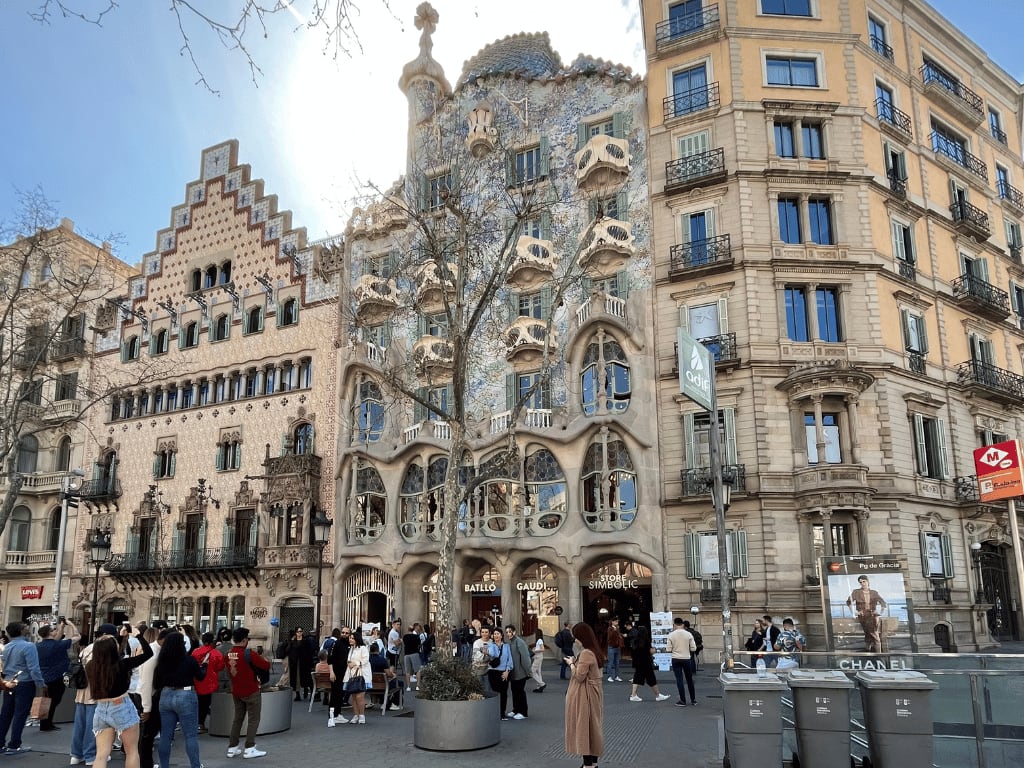
Spain transitions from Winter to Spring in March. This means it dawns much earlier, the nights are longer, and joy returns to the big cities, becoming an ideal destination. But the weather still varies depending on the region:
- Southern Spain enjoys milder temperatures, with daytime highs ranging from 59°F (15°C) to 68°F (20°C).
- The northern and central areas experience cooler temperatures ranging from 48°F (9°C) to 59°F (15°C).
I mean, it is “still winter” until late March, so crowds are not high, and flight prices and hotel rates are usually lower than in the April-May shoulder season.
You can save lots of money on flights and hotels, and it’s a great time to visit the big cities as the crowds for main attractions and landmarks are less packed than in Summer.
Overall, late March marks the beginning of the best months to come to Spain.
📌 Read Full Article: Spain in March: 8 Travel Tips, Activities & Weather
Rating: ⭐⭐⭐⭐ (Almost getting there!)
Spain in April

Traveling to Spain in April is a fantastic decision since you’ll experience pleasant weather, lively festivals, and stunning landscapes. It’s perfect: Spring is blooming, you’ll find almond and cherry trees peaking, the weather is increasingly warm as the months go by, and more daylight hours!
- Northern Spain can still be cool in April. It experiences daytime temperatures from 54°F (12°C) to 61°F (16°C). You should expect occasional rain showers.
- Southern Spain enjoys warmer and sunnier weather. Daytime temperatures range from 63°F (17°C) to 72°F (22°C) (or even higher in some towns). Expect sunny days, blue skies, and less rainfall overall.
📌 Read Full Article: 10 Best Spring Destinations in Spain: Weather & Fun Activities
Also, you should note that April in Spain is a desired month since the famous tradition of Semana Santa (Holy Week) and the renowned April Fair in Seville takes place. Learn more about it:

Overall, April is more relaxed than the peak summer months, but it is still a popular time for tourists, so book in advance, and you won’t have any trouble. This month offers a lot of fun days and exciting events for visitors!
Rating: ⭐⭐⭐⭐⭐ (Just fantastic!)
Spain in May
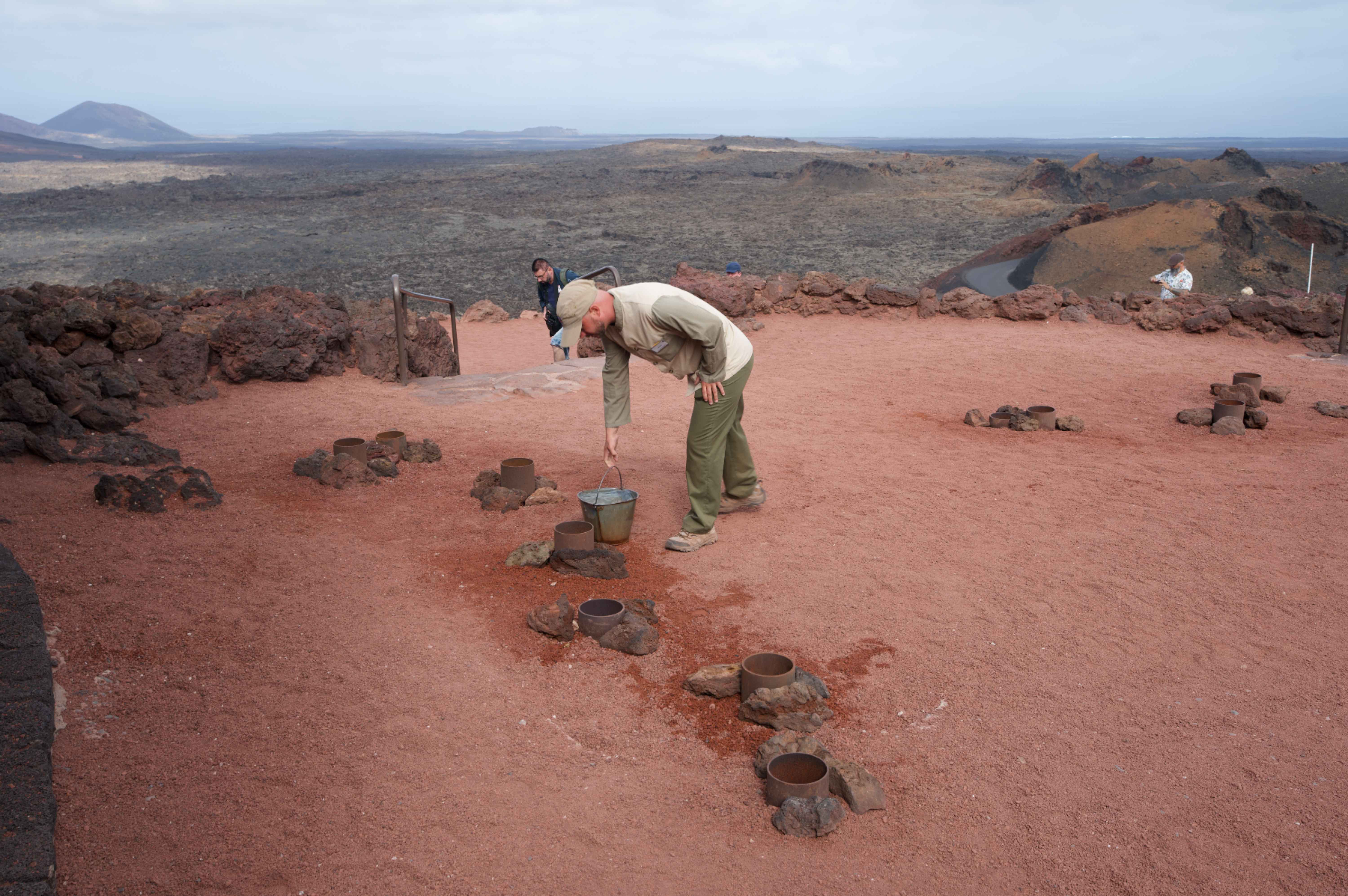
May is also one of the best months to travel to Spain. The weather is delightful, perfect for strolling the streets in warm temperatures without sweating. It is a great time to hit the Mediterranean coast and explore natural landscapes, as Spring will have them blooming!
You should expect longer days, cooler mornings, warmer nights, and festivities, so pack light, breathable clothing but light jackets for evenings.
📌 Read Full Article: Spain in May: 7 Travel Tips, Activities & Weather
Also, I recommend going on weekend getaways to nearby towns, which are also perfect for these dates, as most of the country experiences delightful weather during this month.
- In the north, cities enjoy mild and pleasant weather, with daytime temperatures ranging from 61°F (16°C) to 68°F (20°C). Central Spain is a bit warmer but pretty similar.
- Southern regions experience warm and sunny weather, with daytime temperatures ranging from 77°F (25°C) to 81°F (27°C).
May is the last month to take advantage of lower flight tickets before the Summer prices arrive, so book everything in advance so you can get great deals. Nothing to worry about compared to the summer months.
Rating: ⭐⭐⭐⭐⭐ (Perfect time to come!)
Spain in June
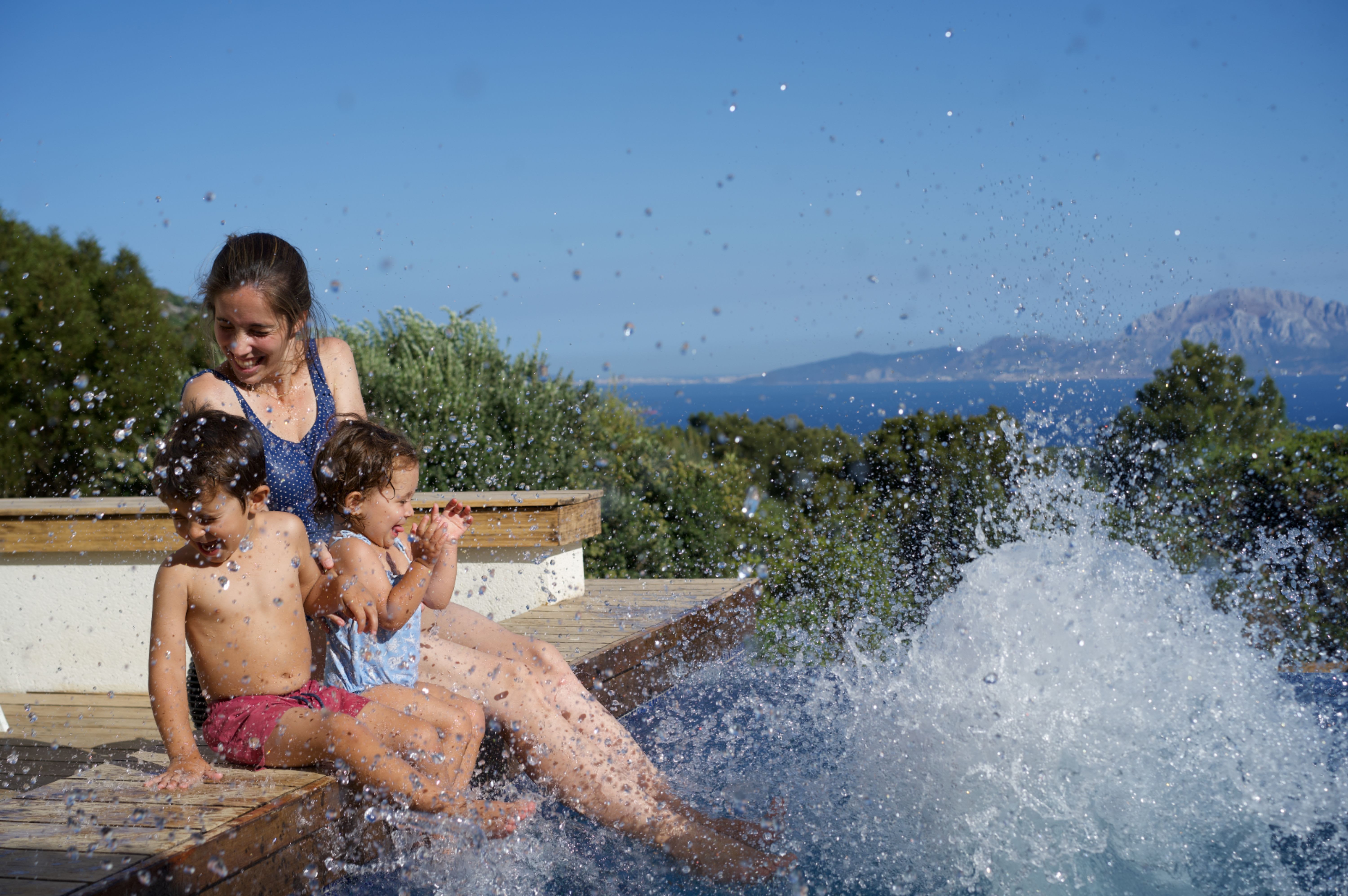
June is the transitional month for Summer in Spain. You should expect longer days of sunny, bright, and warm weather in almost every part of the country. It is also a great time to visit the beaches like Costa Brava, Costa del Sol, and the Islands.
But hear me out: This is the absolute LAST chance to visit the Islands before they get packed with visitors (and party people). Plus, the lower prices than in July and August make June one of the ideal months to travel!
- Temperatures in Northern Spain are more pleasant than in the South. It has daytime temperatures ranging from 64°F (18°C) to 72°F (22°C).
- Central Spain is a bit warmer, 77°F (25°C) to 86°F (30°C).
- Southern Spain will be at 86°F (30°C) or higher most of the time.
📌 Read Full Article: Spain in June: 9 Travel Tips, Activities & Weather
In addition, walking in the middle of the day in inland cities such as Madrid, Córdoba, or Seville in July or August is almost impossible. So June is your last chance to do it.
Festivals, concerts, and celebrations will be all over the place, and the famous “discount season” in sites like Zara, Massimo Dutti, El Corte Inglés, and almost every clothing shop. They begin the last week of June and end in August. ( Read more )
Rating: ⭐⭐⭐⭐⭐ (Amazing, you’ll have a blast)
Spain in July
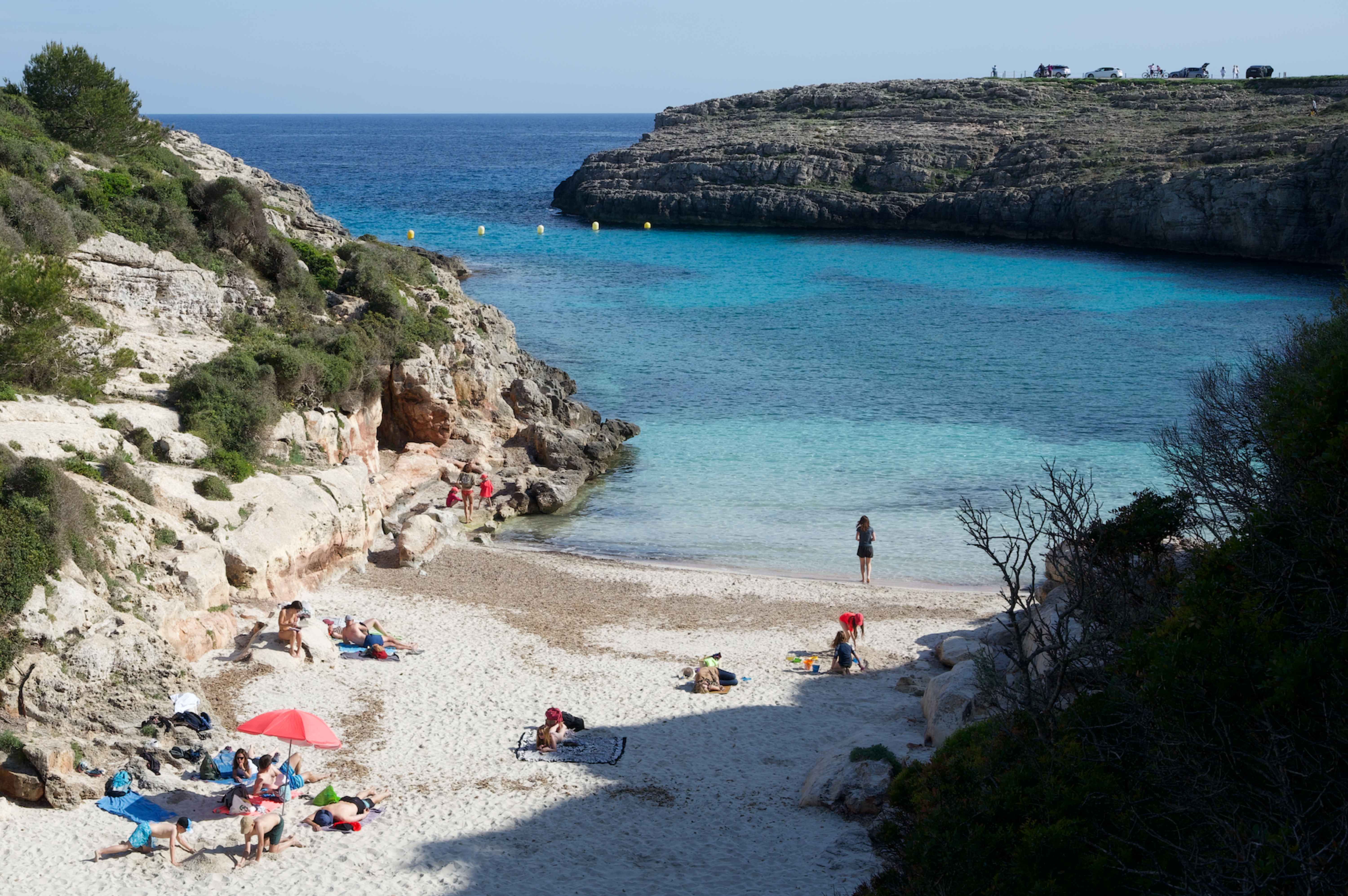
July is the high season in Spain. It is a perfect time to visit to experience the ideal sunny European vacation. The weather is extremely warm, great for visiting our beaches and doing water sports, sunbathing, and swimming, and you’ll find an array of cultural festivals and outdoor activities.
You should expect it to be sunny and warm across Spain, with some variations depending on the city you’re visiting. It is also dry almost everywhere in the country, except the north, which has a few days of rain.
📌 Read Full Article: Spain in July: 7 Travel Tips, Activities & Weather
- Northern Spain has mild and temperate weather with temperatures from 68°F (20°C) to 77°F (25°C). Central Spain, Including Madrid, has temperatures of (30°C) to 95°F (35°C) or even higher. So be prepared for the sun’s intensity because it gets really hot in here!
- On the other hand, Southern Spain is boiling at this point of the year, at 95°F (35°C). Stay away from these cities unless you’ll spend your days at the beach!
Regarding crowds and prices, they typically peak during the summer months. Therefore, if you prefer to avoid large crowds and seek a more budget-friendly experience, consider alternative months for your visit.
Nevertheless, there are multiple ways to make your travel vacation more cost-effective. ( Find out here! )
Rating: ⭐⭐⭐ (too hot & crowded)
Spain in August

Spain in August is one of the most popular months to visit Spain, and it is also high season as the coastal areas are at their prime! Places like the Costa Brava and the Balearic and Canary Islands offer the perfect weather for long beach days. You can also expect local neighborhoods to be less crowded than usual.
While some might call it a “dead month,” Spain still welcomes many visitors, particularly in beach towns and tourist hubs. Also, neighborhoods like Gràcia or Poble Sec in Barcelona are less crowded, and the Barrio de Salamanca in Madrid is also much quieter than usual.
- Northern Spain enjoys pleasant weather, with temperatures between 68°F (20°C) and 77°F (25°C).
- Central Spain, including Madrid, has temperatures ranging from 86°F (30°C) to 95°F (35°C) or even higher! Here’s why locals usually leave the city for vacation.
- Southern regions can get extremely hot, with temperatures exceeding 95°F (35°C) and even higher. You see, that kind of extreme weather is just too much for my liking.
📌 Read Full Article: Summer in Spain: 10 Best Places to Visit & Weather Info
My advice for brave travelers who want to see the hype around the famous Ibiza and Mallorca in the Summer is to book everything in advance and plan your trip well. Always check the weather, pack accordingly, and please use sunscreen and stay hydrated!
You will have a blast! Hot weather is just the perfect excuse for enjoying ice cream and refreshing drinks at any hour. (As if we needed a reason for those activities in the first place!)
Rating: ⭐⭐⭐ (still too hot & crowded. Didn’t remove 1 star because of the famous festivals in the Islands, they’re worth it)
Spain in September
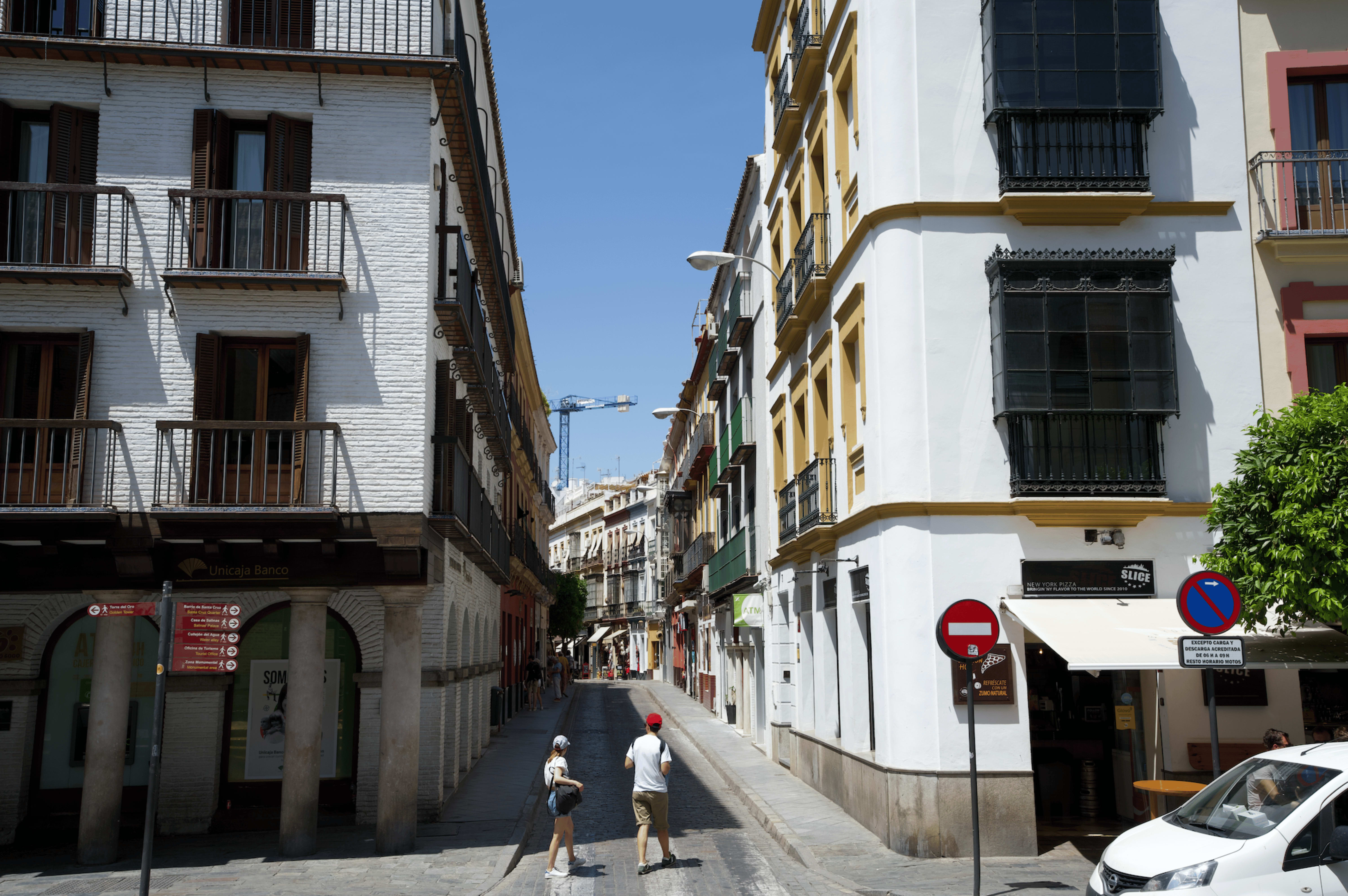
September is an excellent time to visit Spain. It is considered shoulder season after the peak of Summer; the weather is mild and comfortable throughout the country, with wind and occasional rainfall during the nights. Also, the islands and coastal areas are still perfect for going to the beach without extreme heat but way less crowded.
You should expect many cultural events and a great time to visit vineyards as the grapes are at their ripest and the harvest occurs. In Seville, the Bienal de Flamenco is a must-see!
📌 Read Full Article: Spain in September: 9 Travel Tips, Activities & Weather
As the peak tourist season winds down, it’s a great time for touring the big cities.
- Northern Spain has a temperate climate of mild weather; temperatures are from 68°F (20°C) to 77°F (25°C). Although it can be very bipolar…
- Central Spain, including Madrid, enjoys warm and pleasant weather with temperatures from 77°F (25°C) to 86°F (30°C)
- Southern regions continue to have warm and sunny weather with temperatures from 86°F (30°C) to 95°F (35°C).
Rating: ⭐⭐⭐⭐⭐ (10/10)
Spain in October
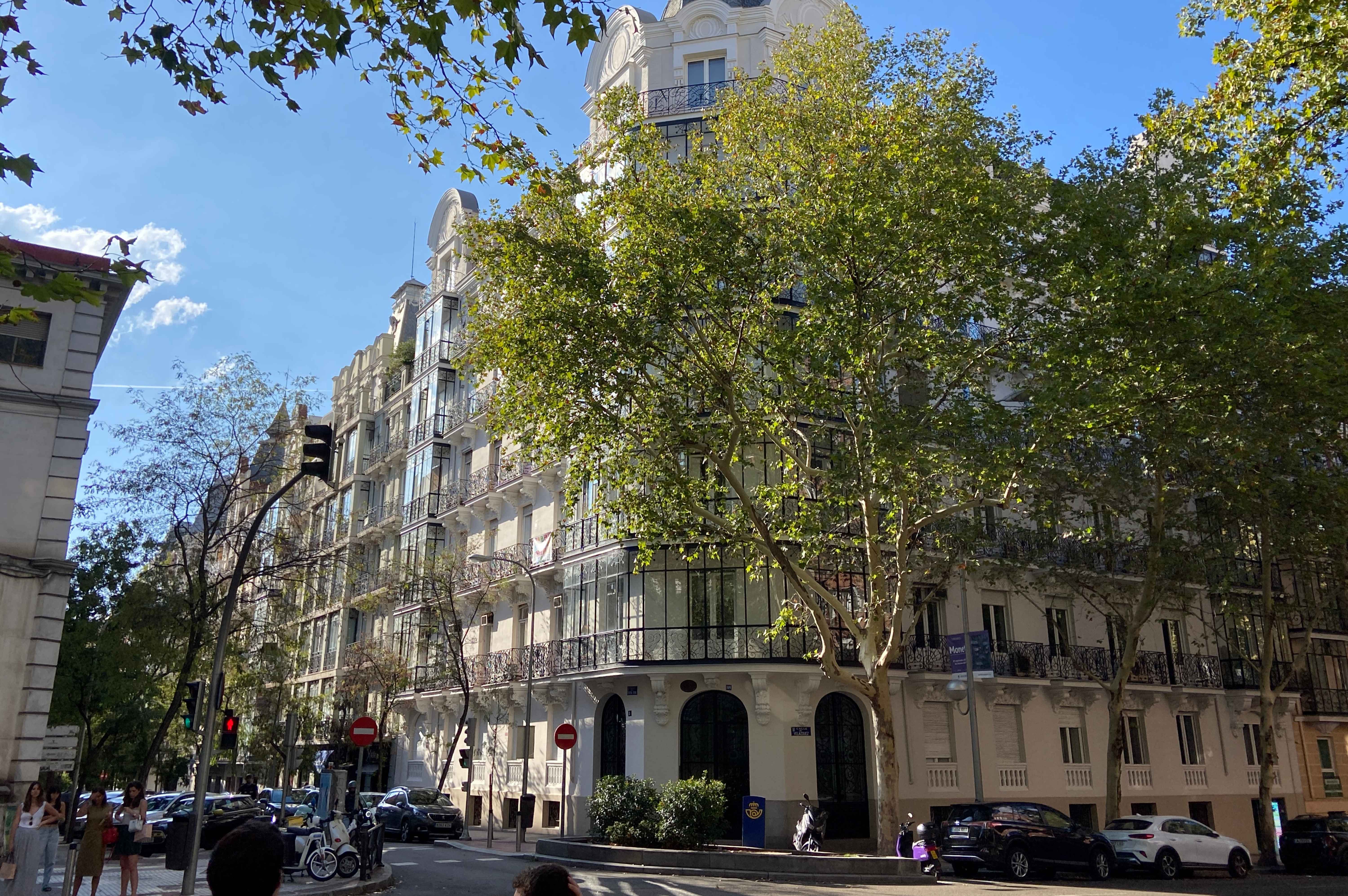
October is a great time to visit Spain, as it is shoulder season, which means you can enjoy more affordable prices and fewer crowds compared to the peak summer months. The weather is cozy in most of the country, and there is still plenty of sunlight to explore attractions without long lines and do fun activities at night!
But take this with a grain of salt since October is still great weather and a month full of activities, making it a relatively popular time for tourists.
- Northern Spain has cooler temperatures, from 59°F (15°C) during the day to cooler evenings, and it does rain.
- Central Spain, including Madrid, enjoys mild temperatures around 68°F (20°C) to 77°F (25°C), and evenings are cooler.
- Southern Spain still has warm and pleasant weather (I know!) with temperatures between 68°F (20°C) and 77°F (25°C). (it seems like the South is often a few months behind the season.)
I think it’s clear by now that my best advice is to book specific activities, flights, or accommodations in advance to ensure a smooth and enjoyable visit.
📌 If you don’t know where to begin, this itinerary can help you: How to spend 2 weeks in Spain? 12 Cities & Activities
Rating: ⭐⭐⭐⭐⭐ (wine & cozy weather. I’m in!)
Spain in November

Visiting Spain in November is perfect for those who prefer a more laid-back and budget-friendly travel experience, as you can take advantage of the low season.
Hotels usually launch weekend offers and discounts. One of the best things is that cities, towns, and villages are less crowded and, as a result, less stressed. You can visit museums, monuments, and restaurants without queuing up.
It is also a great time to do the Camino de Santiago, a pilgrimage route done annually by millions of pilgrims over the centuries. It starts in France and finishes in Galicia, in Santiago de Compostela.
📌 Read Full Article: Spain in November: 9 Travel Tips, Activities & Weather
November is a transitioning month to winter. So you should expect cooler and unstable weather conditions experienced in November.
- In the north, Northern regions experience cooler temperatures and rain, temperatures are from 46°F (8°C) to 59°F (15°C).
- Central Spain enjoys mild weather with daytime temperatures between 48°F (9°C) and 61°F (16°C) and rain.
- Southern regions maintain milder temperatures, ranging from 54°F (12°C) to 66°F (19°C).
It’s best to check the weather in the specific city and your travel days.
Rating: ⭐⭐⭐ (mmm, it begins to get too grey)
Spain in December

Spain in December is a beautiful month to travel to Spain. As a predominantly tradition-based culture, Christmas will be all over the place, creating a lovely atmosphere! While the weather is cold, it’s far milder compared to Northern Europe’s dark and grey winters.
The weather in Spain in December is cold but nothing compared to dark-grey Northern European winter. There are many family-friendly activities, delicious dishes unique to Christmas Eve and New Year’s, and many hidden traditions travelers would love!
December is the beginning of Winter in Spain, but temperatures vary across the country.
- Northern regions have cooler temperatures and rain, and temperatures are 41°F (5°C) to 55°F (13°C).
- Central Spain enjoys cool weather, with temperatures between 36°F (2°C) and 55°F (13°C).
- Southern regions maintain milder temperatures, ranging from 50°F (10°C) to 61°F (16°C).
You should expect popular attractions to be a little busier than in off-season months due to the holiday season, but everything will be alright with some planning.
📌 Read Full Article: Spanish Christmas: How We Celebrate a Merry and Bright Holiday
Rating: ⭐⭐⭐ (Our Chistmas markets hold at least one and a half stars)
What’s the best time to visit Spain?
All things considered, the best times to visit Spain are during Spring (late March, April, May, until mid-June) or Autumn (September, October, and early November). These seasons offer the most favorable weather conditions, many festivals, reasonable prices, and the best overall experience!
Frequently Asked Questions
What is the cheapest month to go to spain.
The cheapest month to visit Spain is January, especially during the final week of the month. You’ll find significantly lower prices during this period compared to the peak tourist season.
People gradually return to their work routines, and the holiday season has ended. The weather tends to be cold and somewhat unpredictable, with fewer festivities occurring in late January and early February compared to Spain’s bustling high-season months.
📌 Read more: How to Travel Spain on a Budget: Cost Guide & Tips

What months are high season in Spain?
The high season in Spain kicks off around mid-June and ends in late August. During this time, you can expect prices to skyrocket, more crowds, and major cities packed with tourists. And let’s not forget the scorching weather – it’s almost unbearable for the locals!
📌 Read more: 15 Best Beach Holiday Destinations in Spain (by season)
What season is best for wine tours in Spain?
The best time to visit vineyards and wine tourism in Spain is between July and October, especially during Autumn. Why? The grapes are at their ripest, and the harvest occurs. These months offer a unique opportunity to experience the process of grape harvesting and wine production, perfect for those interested in gaining deeper insights into the winemaking journey.
📌 Read more: Spanish Vineyards: Insider’s Guide to the Best Wine Tours

What month is the best weather in Spain?
The best weather is relative. One of the most enjoyable months is undoubtedly during the spring season, from April to May. This period offers an ideal blend of pleasant climate conditions where temperatures typically range from around 56.48ºF (13.6ºC) to 80.6°F (27°C), although this can vary depending on the region.
Alternatively, if you savor hot and sunny days, your prime window to experience Spain at its brightest and driest is between June and September when rain is scarce.
📌 Read more: What’s the climate in Spain? Our Real Weather and Temperature

What time of year is best for Spain beaches?
The best time to visit Spain and enjoy the beaches is late Spring and early Fall. In summer, the beaches tend to be crowded, and during Easter, Spain attracts millions of tourists due to the holidays and festivities.
📌 Read more: 23 Best Beaches in Spain: Key Tips to Visit & Videos!
I hope this list has offered you valuable insights to choose the best time for your vacation to Spain!
Please keep in mind that preferences can vary, which is why I included objective arguments before offering my personal rating based on my preferences.
However, I genuinely believe that these are the best months to visit and have an exceptional experience!
Don’t hesitate to ask questions about planning your trip, because we’re here to help you.
Happy travels!
READ NEXT: 33 Best Attractions in Spain Everyone Should Visit
Rating: No ratings yet. Leave a comment!

You might also like...
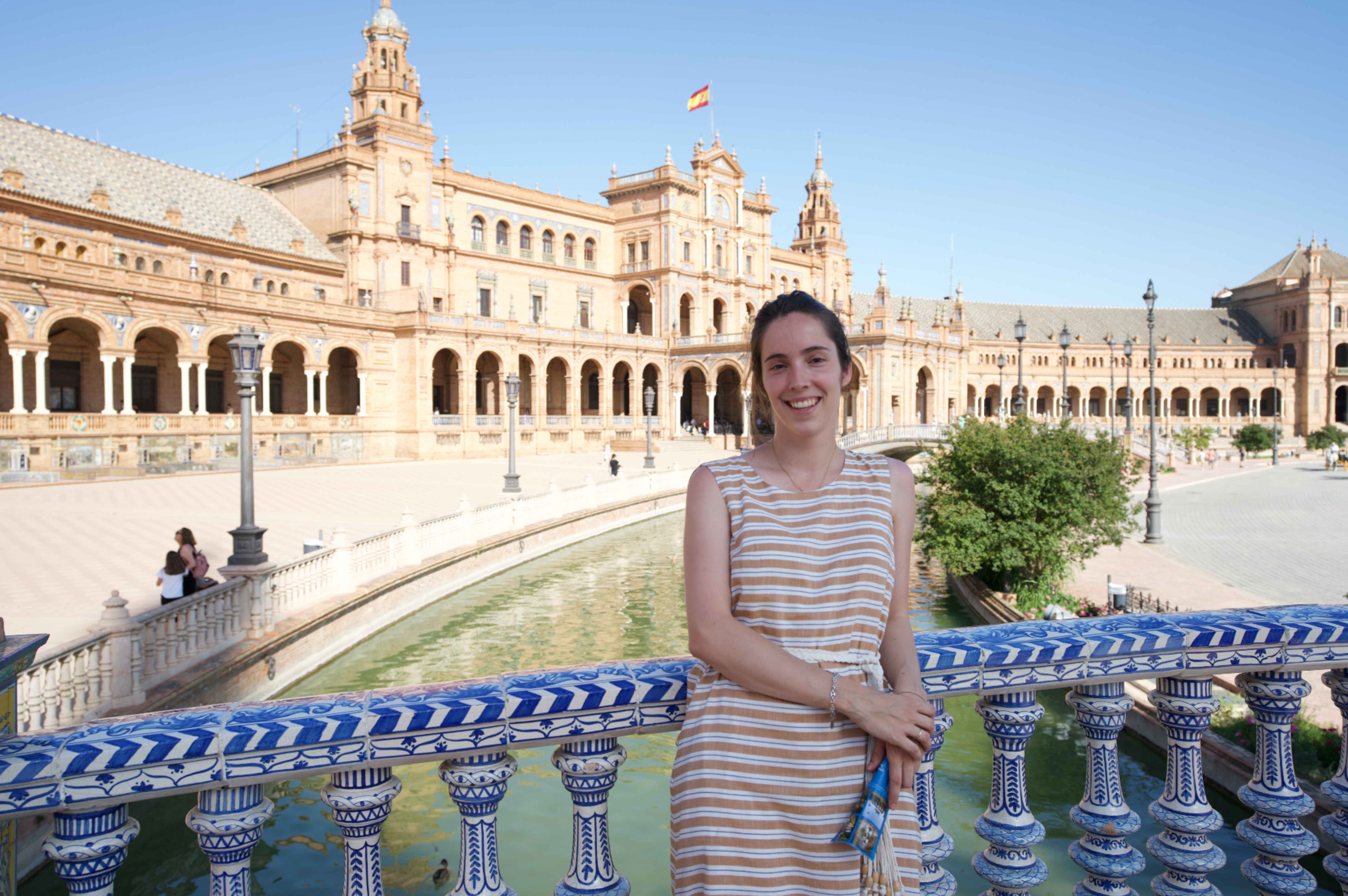
10 Days in Spain: The Best Itinerary to See Everything!
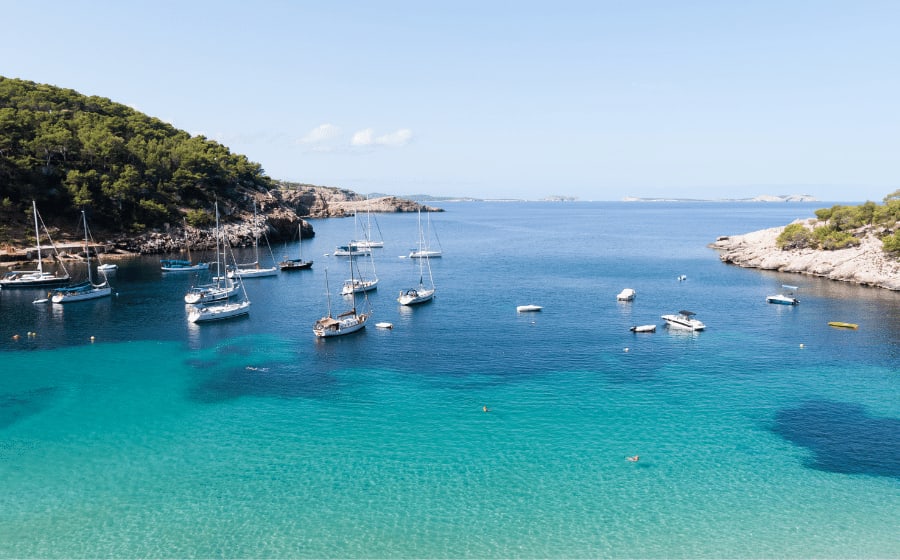
Ibiza vs Mallorca: 5 Key Differences for Tourists!
Email address (optional), star rating (optional).
Be the first to comment!

Millions of people como to Spain every month! But many never get to experience the SENSATIONAL SPAIN!!
We're both born and raised Spaniards and our goal is to give you all the resources to plan a perfect trip to Spain.
Take a look! 👇
FYI! Some affiliate links may be sprinkled throughout the post. We'll receive a small commission when you purchase from our links (at no extra cost to you), which will help us keep creating content.
Join the waitlist
I'm about to release my City Guides for Madrid, Barcelona, Sevilla and Mallorca.
They're going to have everything you need to plan the perfect trip. From hotels and transport, to restaurants, attractions, activities, & a lot (A LOT!) of tips & tricks.

33 Best Attractions in Spain Everyone Should Visit

What do Spanish People Think of Americans?

What Song Are You Listening To? MADRID

What is the Best Show to Learn Spanish?

Things People Should NEVER do Dating in Spain

Can Foreigners Adapt To The Spanish Lifestyle?
- Spain Tours
- Spain Travel Guide
- When to Visit Spain
Spain in July: Great Outdoors and Warm Weather
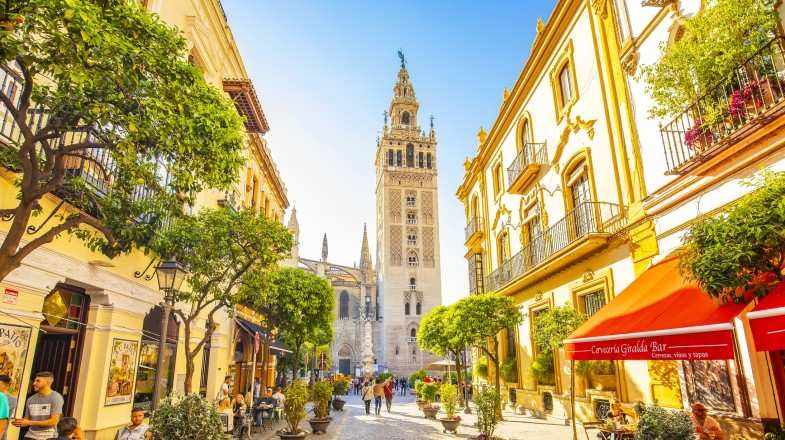
- 1.78K views
- ~ mins read
From the crowded beaches of Tossa de Mar to the crazy adventures in Ibiza , holidaying in Spain in July is perfect for people from all walks of life! The sun hardly gets any break, eliminating most chances of rain. Hiking in one of many national parks, such as the Ordesa y Monte, is ideal during this time of the year. Alternatively, take a stroll around cities like Granada and sample the food and culture. If you’re looking for endless beaches with crystal blue waters, gorgeous festivals, and cultural highlights, then a trip to Spain this month won’t disappoint.
Spain weather in July

Summer in Spain is at its peak in July. You can find the warmest temperatures in inland cities. For instance, temperatures in Madrid average around 25°C with highs of 33°C. The south coast is characterized by hot temperatures frequently reaching 31°C. For this reason, July is the perfect month to organize a trip to soak up the sun at the Balearic Islands where you will also find breathtaking landscapes and wild nightlife!
If you are not a big fan of the summer heat, you can visit the northern cities such as Bilbao or picturesque little towns like Castro Urdiales and Cudillero. Here the weather is slightly cooler with an average of 20°C.
For in-depth information, check out our guide on best time to visit Spain .
Weather in Spain in July - Rainfall and Temperatures
Why visit spain in july.

Thousands of tourists and locals come together to enjoy the best things Spain has to offer during this time of the year.
- Vibrant nightlife: In July most Spanish cities get flooded with tourists from all over the world ready to enjoy the Spanish nightlife and spend lazy afternoons at the beach. Some of the most popular destinations are Barcelona , Granada, and Malaga . You will have a variety of parties to choose from every night and tons of occasions to meet new international friends.
- The beaches: July is the best time to visit Spain for those who want to enjoy a relaxing holiday. There are plenty of beautiful, secluded places where you will be able to lie down on the sandy beach and enjoy the warm sun on your skin, away from the many tourists. The cliffs of Maro-Cerro Gordo or Cala de las Mulas in the Murcia region are great destinations for those who value their privacy and love tranquility.
- National parks: Precipitation in July is extremely rare. You can therefore enjoy a trip to one of the many national parks in the country and be assured that you will find good weather. Enjoy bird watching through the swamps of Tablas De Daimiel or go for a hike in the national parks in the Pyrenees. This is the perfect month to try activities such as rafting, canoeing, and river boarding.
- Festivals: Witness the crazy San Fermín festival in Spain in July. This week-long celebration is held in the historic city of Pamplona in the north of the country. The most famous event at the festival is the running of the bulls in which hundreds of people run in front of six bulls through the narrow streets of the city. If you like music, book a ticket for the Benicàssim Festival held in the north of Valencia . Here you will be able to listen to indie and alternative music.
Where to go and what to do

There are plenty of things to do in Spain . Make sure to spend at least seven days in Spain if you want to make the most of your time. The islands of Ibiza , Majorca, and Minorca come to life and are among the best places to visit in Spain during the summer months. Here you will find the best nightlife and wildest parties. If you want to see the most iconic cities of Spain, opt for a tour of Barcelona , Madrid, or visit Granada during the summer period. For a relaxing option, head north towards the city of Bilbao, the perfect location for those who want a break from the many summer visitors coming to Spain. Here you can explore the Guggenheim Museum, visit the close-by Salt Valley or simply enjoy a swim in one of the many quiet beaches in the area. Another option is to conquer one of the many walking trails present in the country such as the Caminito del Rey or the Picos de Europa.
What to bring

Precipitation is scarce in July so you can leave your umbrella at home. Don’t forget to pack light clothes made of natural fabrics to survive the hot weather. Sunscreen is also a must; the sun here is no joke!
The Spain weather in July is perfect with long sunny days, warm temperatures, and low chances of precipitation. You can enjoy a quiet holiday in the north of the country visiting cities such as Bilbao or exploring one of the many Spanish national parks. If you like partying, you can head towards the Balearic Islands where you can find younger crowds. Cities such as Barcelona and Pamplona are the ideal destination for those interested in Spanish culture as here you will be able to join the San Fermín festival and other cultural events.
If you need help planning your custom trip to Spain, feel free to reach out to our local travel experts . Alternatively, you can also check out trips to Spain in July that we offer.
More Information
Spain in June Spain in August Private tours in Spain Group tours in Spain
Related Articles
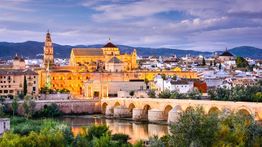
Best Time to Visit Spain
Spain is a country of lovers and adventurers.... read more

Spain in January: Fine Weather, Lower Prices
Spain is a winter paradise as much as it is a... read more
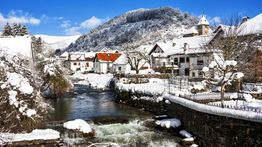
Spain in February: A Unique Perspective
February, most definitely, is an underrated m... read more
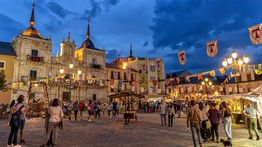

Spain in March: Weather and Travel Tips
Spain comes to life in March after a long win... read more
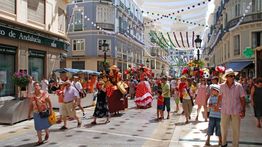
Spain in April: Celebrations and Local Delicacies
As flowers blossom and temperatures rise, the... read more

Spain in May: Weather and Travel Tips
From the beautiful Pyrenees Mountains to the ... read more

Spain in June: All You Need to Know
From the sunny beach of Costa del Sol to the ... read more

Spain in August: Summer Festivities with Fewer Crowds
August sees an uptick in tourist activities i... read more

Spain in September: Fewer Crowds, Better Rates
As September makes way for the cooler Mediter... read more

Spain in October: All You Need to Know
A trip to Spain in October is likely to be a ... read more

Spain in November: Exploring in the Rain
November is rarely taken into account when pl... read more
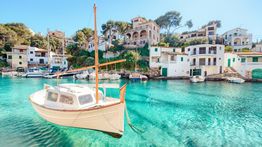
Spain in December: Festivities in Low Season
Spain in December can be a great month to exp... read more
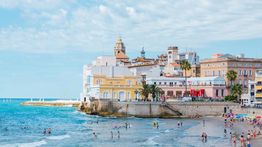
Summer in Spain: All You Need to Know
Boasting a mild, temperate Mediterranean clim... read more
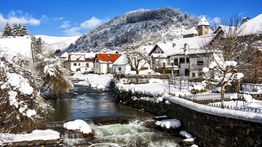
Winter in Spain: Top 5 Destinations
When you think of Spain, you most likely conj... read more
Related Categories
- How Long To Stay In Spain
- Spain Hikes/Treks
- Spain Travel Advice
- Top Spain Attractions
- What To Do In Spain
- When To Visit Spain
- Where To Go In Spain
- Previous Post

Popular Destinations
- Europe Tours
- Everest Base Camp Trek
- Italy Tours
- Argentina Tours
- Canada Tours
- Sri Lanka Tours
- Chile Tours
- Antarctica Tours


Spain In July – Your Guide to an Unforgettable Spain Trip!
As you all know, Spain is undoubtedly one of the most loved European countries. Is Spain your dream destination too? If you are holidaying in Spain in the middle of the Summer season, you will be lucky to enjoy sunshine and parties. There are many happening events in July that will grab your attention and make your holiday the best of your lifetime! In addition to this, the weather also cooperates and makes the country the most appealing. And yes, Isn’t that the best reason to visit Spain in July? Wanna know what you must see and do when you’re holidaying around? Fret not, We are here to help you.
Spain Tour Package Starting @ ₹74,660
Pristine beaches. Exotic Stays. Tapas & wines. Quirky Festivals
July month is indeed a fascinating time to roam around in Spain. You can go on a visit to the beach and sunbathe. Or drop by the world-famous Guggenheim Museum. Or cheer at the legendary bullfight. It’s totally up to you. Here is everything you need to know from the Weather in the month of July to the best things to see and do. All you need to do is plan a vacation to Spain in July. Keep reading.

Also Read: Spain Travel Guide: Top Cities, Places To Visit, Food to Try in Spain
Weather in Spain in July
If you are visiting Spain in July, you will be experiencing the summer season during your holiday. Worry not, it will be bearable only. It is also important to have very few walking tours on your itinerary to escape the heat. The Southern side of Spain experiences Scorching heat. But towards the centre, the temperature is milder and perfect for roaming around carelessly. You can never experience rain during July since it’s very very rare. However, certain cities in Northern Spain might receive light showers. If you love sunshine, Honestly this is the best season to visit Spain for a holiday. In addition to this, this will also be the reason why you can choose coastal cities on your agenda too!
Also Read: Travel Guide To Barcelona In March That Can Leave You Awe-Struck
Festivals and Events in Spain in July
We present to you the top 3 events and festivals celebrated in Spain in the month of July. When you’re holidaying in Spain, do not miss these gala celebrations.
1. Festival of San Fermín/Running of the Bulls
Bull Fighting is a national extravaganza in Spain. No holiday to Spain is complete without witnessing or learning about Bull. And if you are touring Spain in the month of July, you are too lucky as you can be a part of the San Fermín Festival. The Festival takes place between July 6th and 14th every year. The Pamplona city hosts this festival on Saint Fermín’s feast day. Do you ow that they start the festival with the bursting of crackers? Yes, they do! There are several interesting elements in this Spanish festival, but the most interesting one is the running of the bulls. Thousand of people throng in to witness this massive celebration in Spain.
In addition to all of this, several secular events take place. That includes parades, spontaneous parties and religious celebrations.

2. Festival de Granada
If you’re visiting Spain in the month of July, you can be a part of the world-class performing arts festival. If you’re someone who loves theatre, drama and art – You can treat your senses at this grand festival. Every year, the festival is hosted at the Alhambra Palace in Granada, Spain. This legendary yesteryear palace once served as a royal residence. And hence, you can also witness the grandeur of the palace while enjoying the festival. Double Dhamaka, Isn’t it? You can reserve your tickets online and enjoy your favourite show hassle-free. Festival de Granada brings together artists, musicians and dancers from all over the world. This July, don’t miss the Festival de Granada .
3. Córdoba Guitar Festival
The annual International Guitar Festival in Spain is called the Córdoba Guitar Festival . This is a world-famous event that brings together talented musicians and music enthusiasts around the world. The Córdoba Guitar Festival takes place every July, to celebrate guitar music. The festival is broken down into many concerts that are dedicated to guitar music. This event is for all the music lovers out there. You can clap your hands, tap your feet and make some move for the peppy music.
At the Córdoba Guitar Festival , you can also listen to top artists from Spain and other countries. You can groove to Flamenco, Jazz, modern guitar music and more. Interestingly, if you’re someone who wants to learn music? Yes, that’s possible too! The festival also has courses on guitar-making at the venue itself.

Places to visit in Spain In July
You’re in Spain during the peak season and hence, you can simply do everything. Yes, everything! For all those who love culture, there is really a lot to explore. You can visit the world-famous Guggenheim Museum, in Bilbao. The Museum stands as an architectural landmark in the city of Bilbao . Next, you can visit the city of San Sebastián. If you wanna escape the heat, head to this cool city and relax. Go on a round trip to Santa Clara Island. You can swim with your family at the Bahía de la Concha. You can also add Barcelona to your amazing itinerary and enjoy the city attractions.

Travel Tips – If you’re visiting Spain in July
- It’s the peak season for tourism and you can expect crowds when holidaying in Spain. in addition to this, we recommend you book your accommodation as earliest as possible.
- And, you can see people everywhere in July. Hence if you are touring popular attractions, Please reserve them. You can buy tickets online and save time instead of standing in long queues.
- Make sure you pack light, breathable clothes to beat the heat. You will also need a pair of sandals, flip-flops.
- Most importantly, you will need sunscreen. A lot of sunscreens, actually. Also, carry your trendy sunglasses.
Are you planning to holiday in Spain this July? You can check out the super cool Pickyourtrail website right away! Check out the Spain travel packages and customise your dream holiday just the way you like it!
Book a vacation completely online
Our community is growing fast
Sign up for exclusive PYT Club membership and access jaw-dropping deals before the rest of the world!
- Signup with Email
- Facebook community
- Telegram Community
Access exciting travel deals at best prices
- New Zealand
- South East Asia
- United Kingdom
- United States
- Switzerland
- Travelogues
- Travel News
- Guest Posts
- Write for us
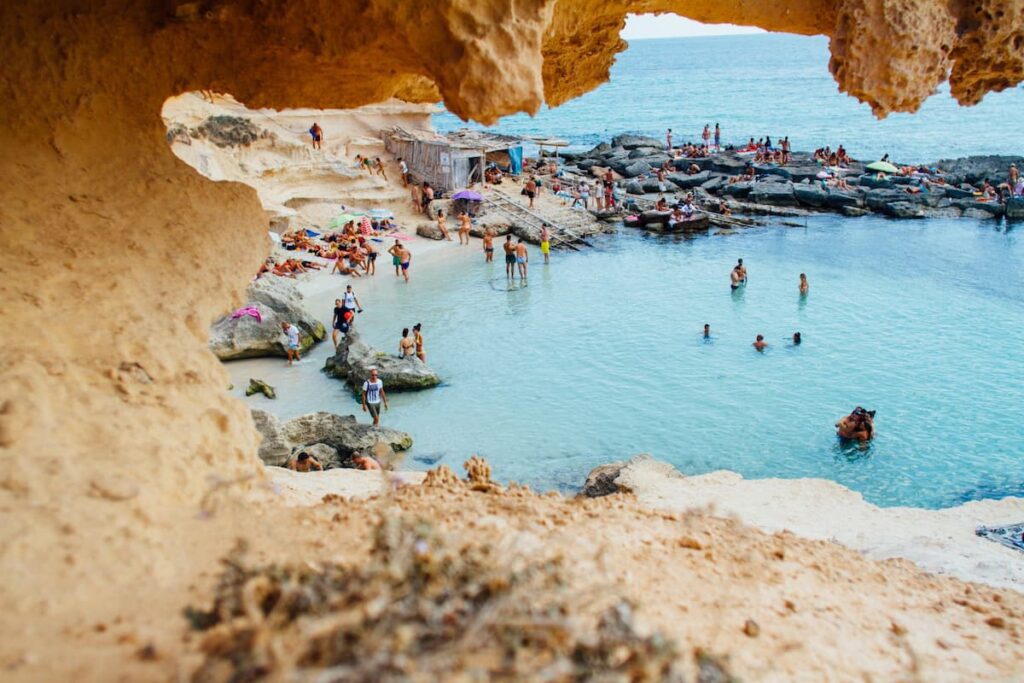
Spain Weather in July: What to Expect During Your 2024 Summer Vacation
This article may contain affiliate/compensated links. For full information, please see our disclaimer here.
Are you planning a summer vacation and wondering what Spain weather is in July? July is one of the hottest months in Spain, making it the perfect time to enjoy the beaches, festivals, and outdoor activities that the country has to offer.
In this article, we’ll take a closer look at Spain’s weather in July and provide some tips on how to make the most of your summer vacation.
Table of Contents
Spain Weather in July: Quick Answer
- You can expect plenty of sunshine and blue skies in Spain in July.
- The daily average temperature in Spain in July is around 26°C (79°F). However, temperatures can vary depending on the specific location within Spain.
- Andalucia, located in the south of Spain, is known for having the warmest July weather, with temperatures from 24°C (75°F) to 28°C (82°F) in cities like Seville, Córdoba, and Granada.
- Spain in July is one of the best times to visit for a beach getaway with temperatures ranging from 24°C (75°F) to 28°C (82°F) along the Spanish coast.
- The weather in Madrid and Barcelona is pleasant in July with an average temperature of around 24°C (75°F).
- For cooler weather, Galicia in the north of Spain is a good option. In this region, the average temperature ranges from 18°C (64°F) to 22°C (72°F) in July.
Read on to learn more about Spain in July so that you can be prepared and have an awesome trip!
Spain Weather in July: What to Expect
Summer has well and truly arrived in July so be ready for hot and dry weather throughout Spain!
It’s important to note that July is the peak tourist season in Spain, so you can expect many popular destinations to be crowded during this time. However, the warm weather and abundance of outdoor activities make it a great time to explore the country.
Here’s what you can expect from the weather in Spain in July.
Spain in July: Average Temperature
Is it too hot to visit Spain in July? Well, it depends on where you’re visiting.
Spain’s varied climate means that there’s still a lot of variance in temperature even though it’s generally warm. In July, the average temperature in Spain ranges from 21°C to 25°C (low 70s°F) to a high of 32°C (low 90s°F) in some areas of Andalucia.
Inland Andalucia tends to be hotter (e.g cities like Seville and Cordoba) while coastal areas tend to be slightly cooler. Madrid, which is also located inland, can reach around 32°C (90°F) during the day. The nights are generally mild, with temperatures dropping to 18°C to 19°C (mid-60s°F) in many places.
Precipitation in Spain in July
July is typically a dry month in Spain, with little to no rainfall in most areas. However, some mountainous regions like Formigal can receive moderate precipitation, averaging around 65mm (2.5 inches). The coastal areas of Spain are usually drier, with almost no rainfall in places like Playa Blanca.
Humidity in Spain in July
The humidity in Spain during July is generally low, making the hot temperatures more bearable. However, the coastal areas can be more humid than the inland areas, especially during the early morning hours. It’s a good idea to stay hydrated and wear lightweight, breathable clothing to stay comfortable during your trip.
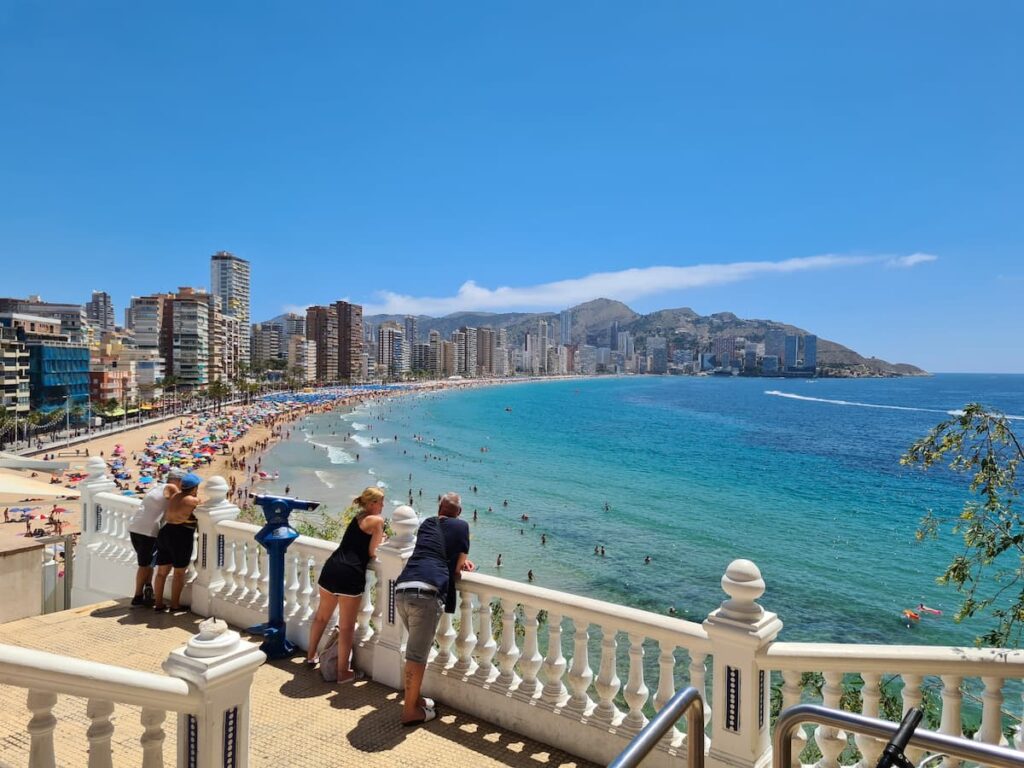
Best Things to Do in Spain in July
Spain in July attracts many visitors and it’s no wonder why! The weather is warm, the sun is shining, and there are plenty of things to do. Whether you prefer relaxing on the beach, attending festivals and events, or trying outdoor activities, there is something for everyone.
Here are some ideas for the best things to do in Spain in July.
Soak in the Sun at Spain’s Best Beaches
With almost 5km of coastline, there’s no shortage of seaside destinations in Spain and it’s no surprise that the country is famous for its beautiful beaches. July is the perfect time to enjoy them. The water is warm, and the sun is shining, making it the ideal time to swim, sunbathe, and relax.
The hardest decision is picking your beach destination!
If you need some help, check out our guides to the most beautiful beaches in Spain:
- Best Beaches in Southern Spain
- Best Beaches in Alicante
- Best Beaches in Cadiz
- Best Beaches in Costa Blanca
- Spain’s Best Beach Towns
- Best Spanish Holiday Islands
Enjoy’s Spanish Festivals and Events in July
There’s always something fun happening in Spain and July is no exception! Local festivals and events are an awesome way to spice up your vacation and experience something new.
Here are some notable festivals and events in Spain in July:
- Running of the Bulls in Pamplona (July 6-14): This iconic festival is world-famous and it’s definitely a unique experience to have in Spain in July! Experience the adrenaline rush and watch as brave runners sprint through the streets, pursued by bulls. The festival also offers music, fireworks, and traditional celebrations so that you can soak in some Spanish culture. This festival is super popular and booking with a tour operator is a great way to ensure you have the best experience.
- Festival Internacional de Benicassim in Benicassim (July 15-18): If music festivals are your thing, then don’t miss this four-day music extravaganza on the stunning Costa Azahar. The Benicassim Festival attracts top international artists, creating an unforgettable experience of live music, camping, and beach parties.
- Fiesta de la Virgen del Carmen in Malaga (July 16): Get a taste of Spanish traditions and join the maritime procession honoring the patron saint of fishermen. Celebrate in Malaga with vibrant parades, floral offerings, and a procession of beautifully adorned boats along the coastline.
- Festival de la Guitarra in Cordoba (July 1-14): Immerse yourself in the enchanting sounds of the guitar in the captivating city of Cordoba. The festival showcases world-class guitarists, flamenco performances, and concerts in historic venues.
Get Active & Spend Your Time Outdoors
If you prefer a more active holiday, there are many fun options in Spain. And thanks for the perfect weather in Spain in July, this is undoubtedly one of the best times to enjoy outdoor activities in Spain!
Some of the best outdoor activities to try in Spain in July include:
- Hiking in the Pyrenees: July is a fantastic time to explore the majestic Pyrenees mountains. The weather is generally warm and pleasant, allowing for enjoyable hikes amidst stunning landscapes. There’s a variety of trails that cater to different difficulty levels and preferences so you can enjoy the outdoors no matter your skill or fitness level!. Admire breathtaking views, lush valleys, and charming villages along the way. Don’t forget to pack proper hiking gear, sunscreen, and plenty of water to make the most of your outdoor adventure.
- Cycling in the Basque Country: The Basque Country offers a paradise for cycling enthusiasts in July. A cycling trip here will take you through picturesque coastal roads, challenging mountain routes, and charming countryside. The region’s well-maintained cycling paths and diverse terrain cater to all levels of cyclists. Enjoy the cool breeze and immerse yourself in the region’s rich culture and delicious cuisine during well-deserved rest stops.
- Rock climbing in El Chorro: El Chorro, located in the Andalucian province of Malaga, is a renowned destination for rock climbing enthusiasts. In July, the weather is generally warm and dry, providing excellent conditions for climbing. The area boasts an impressive limestone gorge with countless routes suitable for climbers of varying skill levels. Take in breathtaking views as you conquer challenging routes, and enjoy the camaraderie of the climbing community in this beautiful natural setting.
- Surfing in Tarifa: Tarifa, located on the southern coast of Spain, is a paradise for surfers, particularly in July. With its ideal wind conditions and long stretches of sandy beaches, Tarifa is a hotspot for wind and kitesurfing. Ride the waves, feel the exhilaration, and embrace the thrill of the sport. Whether you’re a beginner or an experienced surfer, Tarifa offers a range of surf schools, equipment rental options, and surf-friendly beaches, making it a must-visit destination for water sports enthusiasts.

What to Pack for Spain in July
When packing for Spain in July, it’s important to keep in mind the hot and dry weather.
Here are some tips on what to pack for your trip
Pack light, breathable clothing made of natural fibers such as cotton or linen. Opt for loose-fitting clothes to allow air to circulate and keep you cool. Don’t forget to pack a hat to protect your face and head from the sun. Sunglasses and sunscreen are also essential to protect your skin from UV rays.
Here’s a list of clothing items to pack:
- Dresses or skirts
- Light pants or capris
- Sandals or comfortable walking shoes
- Swimsuit and cover-up
Accessories
Accessories can make a big difference in your comfort level during your trip to Spain in July. Consider packing a lightweight scarf or shawl to cover your shoulders when visiting churches or other religious sites.
A reusable water bottle is also a must to stay hydrated throughout the day. Don’t forget to bring a small backpack or crossbody bag to carry your essentials while exploring the city.
Here’s a list of accessories to pack:
- Lightweight scarf or shawl
- Reusable water bottle
- Small backpack or crossbody bag
- Camera or smartphone for taking pictures
- Power bank to keep your devices charged
Other Essentials
In addition to clothing and accessories, there are a few other essentials you should pack for your trip to Spain in July. Consider bringing a small first-aid kit with band-aids, pain relievers, and any prescription medications you may need. A phrasebook or language app can also be useful to communicate with locals who may not speak English.
Here’s a list of other essentials to pack:
- First-aid kit
- Phrasebook or language app
- Travel adapter and converter (if necessary)
- Cash and credit cards (most places take cards these days but it’s still handy to have some cash on hand!)
- Passport and travel documents
By packing the right clothing, accessories, and other essentials, you’ll be prepared to enjoy your trip to Spain in July without any discomfort or inconvenience.
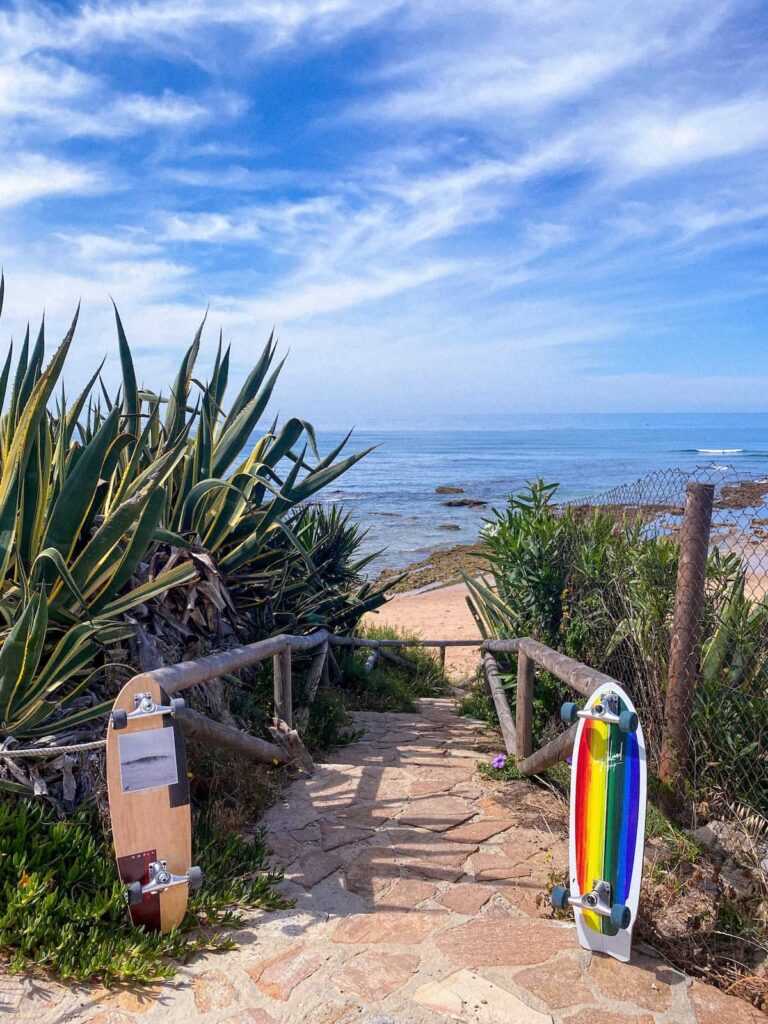
Tips for Traveling to Spain in July
If you’re planning a trip to Spain in July, there are a few things you should keep in mind to make your trip as smooth and enjoyable as possible. Here are some tips to help you plan your trip.
Book Accommodations in Advance
July is peak tourist season in Spain, so it’s important to book your accommodations as early as possible to ensure availability and avoid inflated prices. Consider staying in less touristy areas or booking accommodations outside of major cities to save money.
I usually use Booking.com to search for the best deals. Input your travel dates below and see what’s available for your trip:
Make Use of Spain’s Excellent Public Transportation
Spain has an extensive public transportation system, including trains, buses, and metros. If you’re staying in one city for more than a few days, consider purchasing a transportation pass or card to save money on transportation costs.
For inter-city travel, I love Spain’s railway system which covers pretty much all the major cities. There are even some highspeed trains that cut down travel time and make it easy to string together an itinerary that includes a few cities. It’s worth it to do your research on the Renfe website and to book your train tickets in advance in July as it’s peak travel season. Do it too late and you might be faced with higher fares or even no tickets left!
Buses are a cheaper option compared to the train and they might even be a more convenient option depending on the route. ALSA covers most of Spain and I’ve found their services to be comfortable and reliable.
To compare different modes of transport for your inter-city travel, I recommend using Omio. It’s super convenient to see all possible routes in one place and compare prices and schedules!
Simply input your travel destinations and dates below to get started.
Rent a Car for the Ultimate Flexibility
Whether you’re traveling in a group or simply prefer to have more flexibility, renting a car in Spain in July is affordable and easy. Spain’s infrastructure is quite developed so you can confident that their roads and highways are well-maintained and have good signages.
If you plan on renting a car https://www.discovercars.com/spain?a_aid=alwaysinspain , be aware that traffic can be heavy in major cities and parking can be difficult to find. I recommend doing a bit of legwork before you arrive in a city to find cheaper parking options.
Car Rental Recommendation
If you’re looking for the best prices for car rental during your stay in Spain, check out Discover Cars . Just plug in your location and dates and you’ll get the best deals available. Super convenient and easy!
Staying Safe
Spain is a safe country, but like any place, it’s important to take precautions to avoid becoming a victim of crime especially since Spain in July is peak season. Keep your valuables close to you at all times, especially in crowded tourist areas. Be wary of pickpockets and scams, such as people offering to help you with your luggage at train stations or airports.
In case of emergencies or unexpected incidents, I never leave home without travel insurance. I’ve been using SafetyWing when I travel as I can get insured even if I’ve already left my home country and it’s super easy to purchase and renew my policy.
In addition to these tips, it’s important to stay hydrated and wear sunscreen to protect yourself from the intense summer heat. Keep in mind that many locals take siestas during the hottest part of the day, so plan your activities accordingly.
I hope this post on Spain weather in July and what to expect has been helpful. With a little planning and preparation, you can have a wonderful trip to Spain in July. Buen viaje!
For all things summer, check out our Summer in Spain guide to help you plan the perfect holiday!
Recommended Spain Travel Resources
Travelling to/around Spain and need help planning your dream trip? Here are my favorite travel resources.
- I usually use Booking.com to look for hotels or apartment rentals. It’s easy to use, with lots of choices… and you can unlock more discounts with their Genius loyalty programme!
- To research transportation options around Spain, I use Omio which lets me compare different modes of transportation and prices in one place.
- For the ultimate freedom, rent a car in Spain. Check prices on DiscoverCars to find the best deals (you’ll be surprised at how affordable it is!).
- For activities and tours, Get Your Guide is my trusted platform. Viator also has a big catalog of activities!
- I love free walking tours and usually use Guruwalk to find and book tours I like.
- An easy way to stay connected while travelling is to use an eSim. Airalo offers various eSim choices so that you’re already connected the moment you arrive in Spain!
- Say goodbye to carrying loads of cash or paying huge transaction fees when using a card in a foreign country! Wise is my borderless banking service of choice and I’ve used their debit card everywhere in Spain without any issues.
- I never travel without SafetyWing travel insurance in case of emergencies or unexpected incidents. Get an obligation-free quote here.
For more on Spain travel planning
- Spain Weather in June: What to Expect, Best Places to Visit, and More
- Spain Weather in August: What to Expect, Where to Go, What to Do
- Spain Weather in September
- Spain Weather in October

Liza’s love affair with Spain began when she started taking Spanish language classes. Since then, she regularly travels to Spain to explore new places and discover new things to love about this gorgeous country. This travel blog is her way of sharing her love of Spain and helping you plan your dream Spanish holiday!
Leave a Comment Cancel Reply
Your email address will not be published. Required fields are marked *
Save my name, email, and website in this browser for the next time I comment.
Protect Your Trip »
Best places to visit in spain.
Spain's dynamic metropolises, breathtaking beaches and cultural offerings are second to none, making the country an undisputed stop on many travelers' European vacation itineraries. With so many varied destinations, each with its own celebrated sites and unique hidden gems, it may be hard deciding which cities are worth visiting. U.S. News factored in sights, culture, seasonality and expert opinion to come up with the best places to visit in Spain for all types of travelers – from city slickers to beach bums to outdoorsy types. Have an opinion? Vote below to influence next year's ranking.
Santiago de Compostela
Costa brava, san sebastian, canary islands.

In addition to being one of Europe's top travel destinations , Barcelona is without a doubt Spain's cultural capital. The Catalonian city's urban sprawl is dotted with Antoni Gaudí's whimsical architecture, including Basílica de la Sagrada Família and Park Güell, as well as museums carrying world-renowned artists, such as the Picasso Museum. You can also explore centuries-old neighborhoods like Barri Gòtic, which dates back to the Roman Empire. Don't forget to take advantage of the city's equally magnificent outdoor offerings, too, including La Barceloneta beach.

The final stop on an ancient pilgrimage route called Camino de Santiago (or Saint James' Way), this medieval city in northwestern Spain attracts hundreds of thousands of travelers every year. With centuries-old architecture and a UNESCO World Heritage-listed Old Town, Santiago de Compostela is an ideal destination for history buffs and culture hounds. First up on your to-do list should be a tour of the awe-inspiring Santiago de Compostela Cathedral, a massive Romanesque structure said to house the remains of Saint James the apostle. Then, take advantage of the city's number of beautiful parks, museums, restaurants and nightlife.

You won't want to skip this romantic Spanish city about 55 miles northwest of Madrid on your next trip to Spain. See for yourself what makes Segovia special while you stroll through the enchanting Plaza Mayor, home to a mix of restaurants and shops, or soar high above the city on a hot air balloon ride. Can't-miss sights include the two-tiered Aqueduct of Segovia, one of the world's best-preserved Roman aqueducts, and Alcázar De Segovia, a massive, fairy-tale fortress dating back to the 12th century.

Stretching from the idyllic resort town of Blanes all the way to the French border, this coastal region in northeastern Spain offers miles of shoreline along the Mediterranean Sea. After spending the day with your toes in the sand at one of Costa Brava's gorgeous cove beaches, indulge in a delicious dinner at one of the region's many seaside restaurants. But Costa Brava is not just for beach bums. Whether you're touring the unique Dalí Theatre-Museum in Figueres or exploring the Santa Clotilde Gardens in Lloret de Mar, Costa Brava is a can't-miss destination on any Spain itinerary.

The UNESCO-listed historic center of Cordoba is the stuff of Spanish dreams. Its winding, compact cobblestone streets are lined with whitewashed inns, shops, restaurants and homes that feature stunning Andalusian accents, including wrought-iron balconies, bright blue planters and painted archways. Visitors can also enjoy all of the city's famous historical sites, such as the Castle of the Christian Monarchs and the Mosque-Cathedral of Cordoba, commonly referred to as the Great Mosque, which is one of the best-preserved structures in Spain.

Mallorca's smaller sister island is a solid option for travelers wanting to visit the Balearic Islands without the crowds of Ibiza and Mallorca. Menorca offers the same kind of jaw-dropping beaches (think: white sands overlooking clear turquoise waters) you'd expect to find on other Balearic Islands – travelers say Cala Mitjana, Cala Macarelleta, Cala Turqueta and Cala Pregonda are some of the island’s most popular shorelines. You'll also discover several architectural marvels throughout Menorca. Head to Ciutadella (the island's original capital) to see old-world structures like the Catedral de Menorca and the Convent of Sant Agusti, which houses the Diocesan Museum.

Travelers who want to experience small-town Spain without venturing far from a big city will love visiting Toledo. This UNESCO World Heritage-listed city, which sits 45 miles southwest of Madrid, is breathtaking thanks to its location on a hilltop overlooking the Tagus River and its historical architecture. For the best views, visit Mirador del Valle, a scenic overlook boasting breathtaking panoramic vistas. Then, get a sense of Toledo's rich history by checking out attractions like Catedral Primada and San Juan de los Reyes Monasterio. Don't forget to try some of the city's famous marzipan before you leave.

Of all the cities in Spain, Madrid is the one that knows how to show travelers the best time. The city's party-hard reputation is really all it's cracked up to be, but that's not all Spain's capital has going for it. Madrid is filled with varied, vibrant neighborhoods, plus stunning parks, enviable shopping and some of the best art institutions in Europe, including the world-renowned Prado Museum and the Thyssen-Bornemisza National Museum. Not to mention, the city’s grandiose architecture – showcased by structures like the Royal Palace and Plaza Mayor – makes the perfect backdrop for a romantic getaway.

Mallorca is easily one of Spain's greatest assets. This dreamy island getaway features sun-kissed beaches, picturesque small towns and outdoor pursuits that draw tourists and lovebirds in droves. Revel in the see-through blue waters of Playa de Muro and Cala Llombards, then hop in a car and drive around the striking mountains that make up Serra de Tramuntana, a UNESCO World Heritage Site. Make sure you spend your downtime taking leisurely strolls along the darling streets of Alcúdia's old town and by the water to admire the awe-inspiring Palma Cathedral (La Seu).

This beautiful Andalusian city in southern Spain is awash with romantic allure. During the day, you'll find outdoor cafes along cobblestone streets and horse-drawn carriages meandering through pastel-colored plazas. And when night falls, flamenco dancing comes out in full force. Seville is the kind of place you should allow yourself to get lost in, but don’t forget to carve out time for must-see sites such as the Plaza de España, the Real Alcázar and the Catedral de Sevilla, the largest Gothic cathedral of its kind in the world.

Situated along Spain’s northern coast in Basque Country, San Sebastian is one of the most underrated destinations in Spain. Locals understand its majesty and every summer flock to this beach destination for its breathtaking shorelines, hiker-friendly mountains and unmatched foodie scene. For a quintessentially Basque experience, travelers suggest pintxo bar hopping in San Sebastian’s city center, Parte Vieja, or signing up for a pintxos (Basque tapas) food tour. Don’t leave without taste testing San Sebastian’s world-famous anchovies and txuleta, a specialty steak that is made from aged grass-fed beef.

Granada's Arabic influence makes this destination different from the rest of Spain. Thanks to its history as part of the Moorish Empire, Granada is home to tapas bars and flamenco venues that rub elbows with Moroccan tea cafes and Arab bathhouses. This confluence allows you to experience two cultures simultaneously. And you must make time to behold the breathtaking local treasures, including the Alhambra, the white-washed caves of the Sacromonte district and the snow-capped mountains of Sierra Nevada National Park.

A popular daytrip destination for travelers visiting Barcelona, Girona stands out for its medieval architecture and wealth of attractions. From the magnificent Girona Cathedral to the city's famous 12th century Arab baths, travelers are sure to find something to suit their interests in this Spanish city. Spend some time in La Devesa Park, one of the largest green spaces in Catalonia. Don't forget to pack your walking shoes – whether you're exploring the winding, cobblestone streets of Girona's Jewish Quarter or strolling the Passeig de la Muralla path atop Girona's ancient city walls, the best way to enjoy this historic city is on foot.

Rioja is Spain's wine country. Like France's Champagne, winemakers can't label a wine "Rioja" unless it is produced and distributed from the Spanish region of La Rioja. As such, you'll want to sample plenty of vino while you visit, which will be pretty easy to do since there are more than 500 wineries plus many restaurants that serve large selections of Rioja wine. If you're looking for other things to do, take advantage of Rioja's Michelin-starred restaurants and lively tapas bars when you're not hiking or skiing its surrounding mountains.

This northern city in Spain’s Basque Country sits in the middle of a beautiful valley, affording incredible views of the city and its rolling hills. Visit Casco Viejo (the city's old town) for authentic pintxos and to explore Parque Etxebarria, where you'll find some of Bilbao's best vistas. Or, ride the Funicular de Artxanda for even more spectacular panoramas. No visit would be complete without checking out the world-renowned Guggenheim Museum Bilbao and other local cultural institutions, such as the Museo de Bellas Artes de Bilbao.

Plan a trip to this small Andalusian town if you enjoy visiting destinations with unique geography and stunning architecture. Ronda sits atop a striking gorge that separates the town. To cross the gorge, walk across the Puente Nuevo, a beautiful bridge built in the 18th century. Below, you'll get an eyeful of El Tajo canyon and the Guadalevín River. After admiring your surroundings from the Puente Nuevo, visit the Plaza de Toros de Ronda, the historic old town and the Baños Árabes, well-preserved 13th- and 14th-century Arab baths.

Spain’s third-largest city stands out for offering a little taste of both the old and the new. You'll get to experience classic architecture at the Gothic-style Valencia Cathedral and the Plaza del Ayuntamiento, as well as modern sites like the City of Arts and Sciences and the Valencia Institute of Modern Art. After you've gotten your fill of city life, take a detour to breathe in some fresh air at the Albufera Natural Park or unwind at nearby beaches. What's more, with plenty of free attractions to choose from, Valencia is one of Europe's most affordable travel destinations .

If you live to party, Ibiza is a great place to dust off your dancing shoes. This Spanish island is known worldwide for its nightlife scene, so much so that people often say you must visit during the peak summer months. However, one look at Ibiza's natural offerings and you'll understand how this island stands on its own outside of its party-hardy reputation. Beaches here are so clear that you can see your feet touch the sand as they enter the ocean. Plus, the historical charm found in Dalt Vila, Ibiza's old town, will certainly stop you in your tracks.

This cluster of Spanish islands located off the northwestern coast of Africa is one of Spain's premier beach destinations. In addition to picturesque shorelines, the Canary Islands are also teeming with outdoor attractions that will make any adventurer swoon, including four national parks. In between hiking and relaxing on the beach, take some time to stroll the neighborhoods of Santa Cruz de Tenerife, located on the largest of the Canary Islands, or Las Palmas de Gran Canaria, the archipelago's most populated city, to get a taste of local life.

Situated in southwestern Spain, Cádiz is one of the country's most underrated travel destinations. As one of the oldest inhabited cities in Europe, travelers can expect a bevy of historic attractions, from the Torre Tavira watchtower to the grandiose Cádiz Cathedral. Plus, there are several beautiful outdoor spaces to explore, including Genovés Park and the laid-back beaches of La Victoria and La Caleta. When you want to wind down, Plaza de España and Plaza de San Juan de Dios are excellent places to people-watch.
Vote to Add these Destinations to the Rankings

Costa del Sol

You May Be Interested In

Best Places to Visit in Europe for 2023-2024
Best places to visit in france.

Best Cheap European Vacations for 2023-2024

Best Honeymoons in Europe for 2024

Best Beaches in Portugal

Best Beaches in Spain
If you make a purchase from our site, we may earn a commission. This does not affect the quality or independence of our editorial content.
Recommended
The 25 Best Beaches on the East Coast for 2024
Timothy J. Forster|Sharael Kolberg April 19, 2024

The 50 Best Hotels in the USA 2024
Christina Maggitas February 6, 2024

The 32 Most Famous Landmarks in the World
Gwen Pratesi|Timothy J. Forster February 1, 2024

9 Top All-Inclusive Resorts in Florida for 2024
Gwen Pratesi|Amanda Norcross January 5, 2024

24 Top All-Inclusive Resorts in the U.S. for 2024
Erin Evans January 4, 2024

26 Top Adults-Only All-Inclusive Resorts for 2024
Zach Watson December 28, 2023

Solo Vacations: The 36 Best Places to Travel Alone in 2024
Lyn Mettler|Erin Vasta December 22, 2023

26 Cheap Beach Vacations for Travelers on a Budget
Kyle McCarthy|Sharael Kolberg December 4, 2023

The 50 Most Beautiful White Sand Beaches in the World
Holly Johnson December 1, 2023

The 26 Best Zoos in the U.S.
Rachael Hood November 16, 2023


Spain in June: Weather, Where to Go, & What to Do
Disclaimer: Links on this page may be affiliate links. If you make a purchase after clicking a link, I may receive a small compensation to help power my site at no cost to you.
With summer just around the corner, June is an excellent time to visit Spain.
The long sunny days, festivals, and low-ish crowds are just a few of the reasons Spain is one of the hottest destinations in Europe in June — something I’ve learned from spending half a dozen summers in Spain.
June is an ideal time to travel to Spain to go to the beach, visit hot tourist spots like the Sagrada Familia in Barcelona, or head to the mountains before the high season (and hot weather) begins.
In this guide, I’ll break down everything you need to know about going to Spain in June — June weather, the best places to go and things to do in Spain in June, Spain’s best festivals in June, June travel tips, things to pack in June, and more!
TABLE OF CONTENTS
Is June a Good Time to go to Spain?
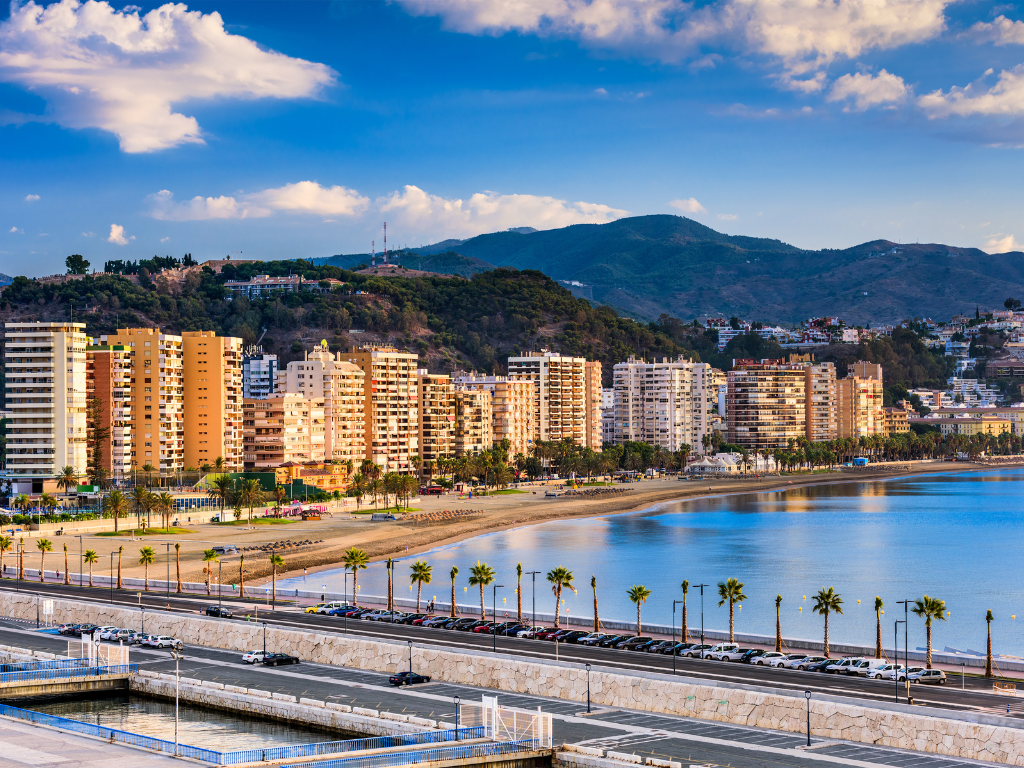
Yes, June is a good time to visit Spain. Being the start of the summer season, the weather isn’t too hot in June. Plus, the worst of the rainy season has passed.
Plenty of fun summer activities like public festivals, sunbathing, hiking, and watersports are also already underway.
Lastly, visiting Spain in June is the last chance to avoid the crowds in Spain’s hottest destinations before the high season sets in during July and August.
What’s the Weather Like in Spain in June?
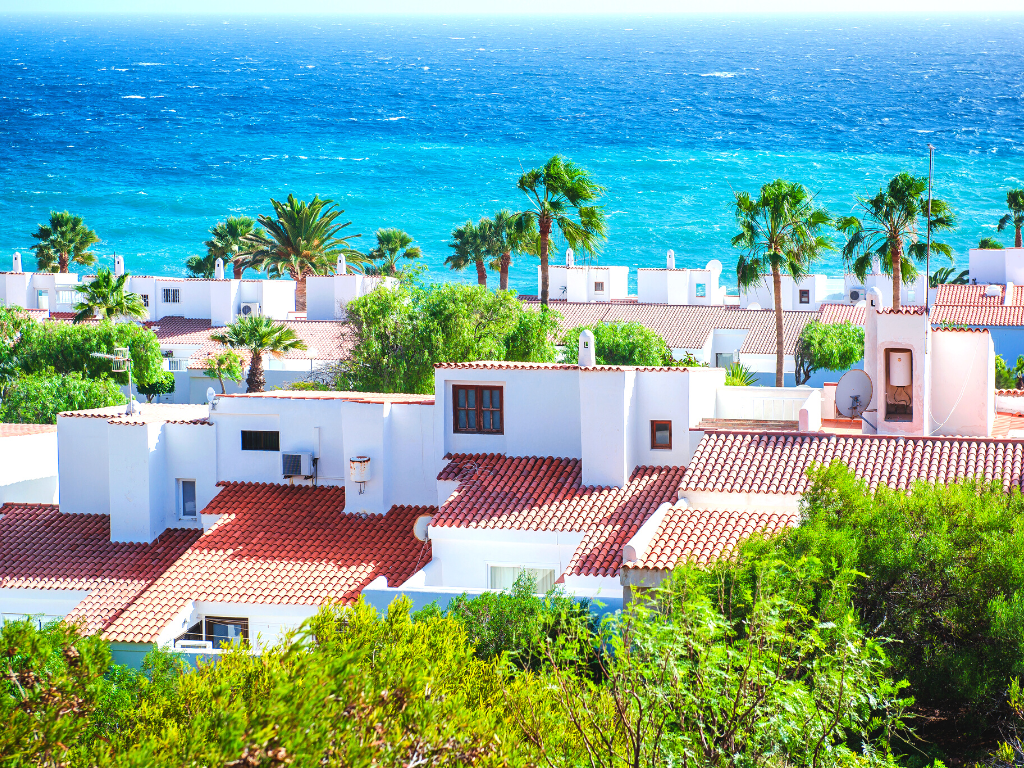
On the whole, temperatures in Spain in June are comfortable for walking around for hours exploring. You can expect an average range between 70 °F (21 °C) to low 80s °F (25 °C).
However, you can expect some variations in temperature between the northern region, interior, and coasts during the month of June.
For example, you may find warmer weather inland and in Andalusia, Spain’s southernmost region. Temperatures near Madrid can reach the low 90’s °F (32 °C).
On the other hand, the northern region is typically a bit cooler, around 65 °F (18 °C). The coasts are slightly cooler as well.
Luckily, rain is unlikely in June in Spain, especially after June 9. The Spanish actually have a saying, “ Hasta el cuarenta de mayo no te quites el sayo,” which means “Don’t put your rain gear away until May 40.”
Weather in Barcelona in June
If you’re interested in visiting Barcelona, June is a great time to schedule a vacation. On average, the temperature in Barcelona in June is 80°F (26°C ) — but it can also drop into the low 60s (16°C ).
Another good thing about traveling to Barcelona in June is that the days will be about nine hours long. So, you’ll have plenty of time to sightsee!
Weather in Madrid in June
Madrid is typically hot in June with average temperatures reaching 86°F (30ºC) — the typical high is 82°F (28°C).
Fortunately, there are plenty of indoor activities you can do during the hottest time of the day like visiting Madrid’s “big three” art galleries.
Weather in Seville in June
Seville is fun to visit in the summer, but at 90°F (32ºC), plan to pace yourself while visiting the main attractions. Long lunches under cafe umbrellas are a must!
Where to Go in Spain in June
With its sandy beaches, dazzling cities, resort towns, and everything in between, Spain is an extremely popular summer destination. While some of the best places to visit in Spain in June involve cities to visit before they get too crowded, others are lesser-known gems.
1. Alicante
Consider heading to Alicante for some sun and sea in June. The Mediterranean port city is worth a stop for a day or two to enjoy the city beach and take a trip to the Santa Barbara Castle, which sits atop a massive rocky peak.
Once you’ve explored the city, June may be your final opportunity to get a deal on a resort stay on the coast before the prices go up and the crowds settle in for the summer.
You can even take in some adventures like parasailing in Alicante !
Alternatively, rent a car and head to a Spanish villa on the Costa Blanca for the week. Spend your time away from the crowds searching for hidden gems like the Playa de la Granadella.
2. Barcelona
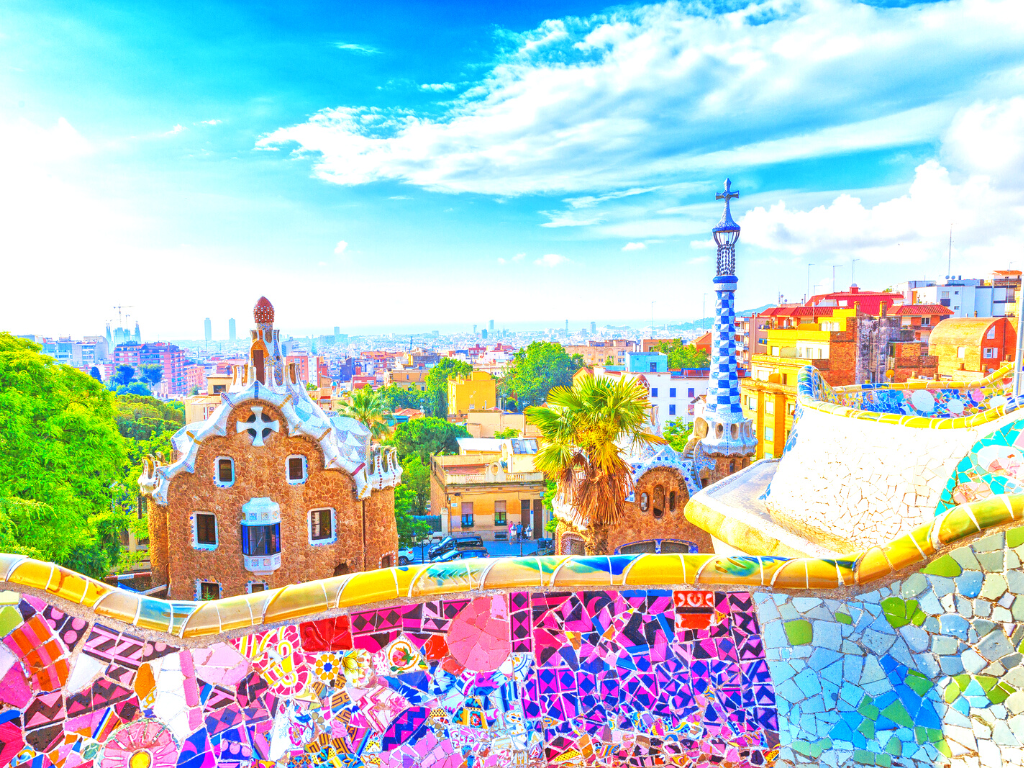
If you have your heart set on Barcelona, visit in June before the city gets too hot and crowded.
Of course, Parque Güell is always worth the trip. Visiting the cool interiors of the La Sagrada Familia , Casa Batlló , and La Pedrera-Casa Milà is wise during the heat of the day.
You can also visit Barcelona’s city beach for a few hours to cool down.
If you have time, we suggest exploring outside of Barcelona, too. The Costa Brava has small, tranquil bays that are perfect for swimming.
Or, head south to Sitges, just an hour from Barcelona by train — you’ll love the relaxing vibe, whitewashed houses near the port, and the lush landscape surrounding this seaside town.
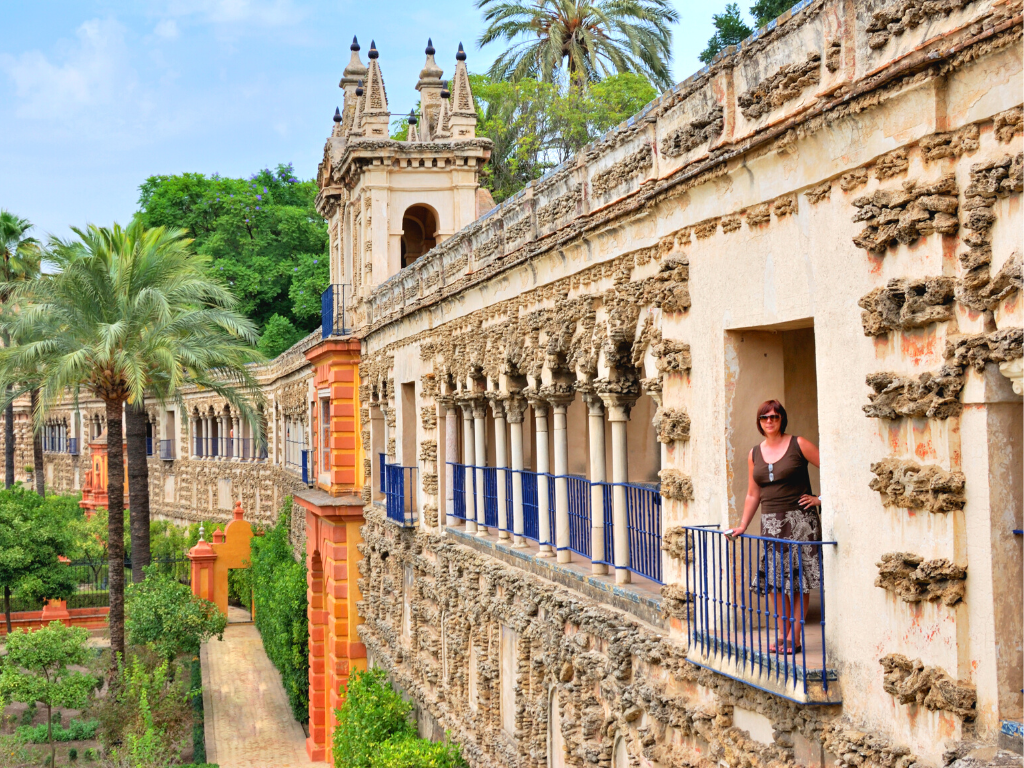
Andalusia’s capital Seville (Sevilla) is a fabulous destination year-round. Yet, it does get swelteringly hot in the height of summer!
Visit in June where you can take a trip to Alcazar , a well-maintained example of Mudejar architecture, go to the top of the Cathedral, and cruise the Guadalquivir River .
When you’re ready to head indoors, consider a flamenco show with dinner (or a flamenco class!).
4. Mallorca

It’s easy to see why Mallorca (Majorca) is one of the most popular holiday destinations in Mediterranean Europe. This perfect Spanish island has it all: sandy beaches, limestone mountains, and a rich culinary and cultural heritage.
Head to the beach before it gets too hot and crowded later in the summer. Beach resorts or villa rentals are both great options, depending on your preference.
When you’re ready to hit the water, Mallorca has a ton of watersports on offer like windsurfing, parasailing , and scuba diving.
Of course a catamaran tour with tapas is the perfect way to spend a sunny summer day! ( See the top boat tours in Mallorca! )
But the beach isn’t all Mallorca is famous for. Feel free to head to the Serra de Tramuntana mountains for hiking and biking, out for a scenic drive along the Cap de Formentor, to Mallorca’s wine region for a winery tour , or to explore the Roman and Moorish ruins by renting a car in Mallorca .
5. Asturias
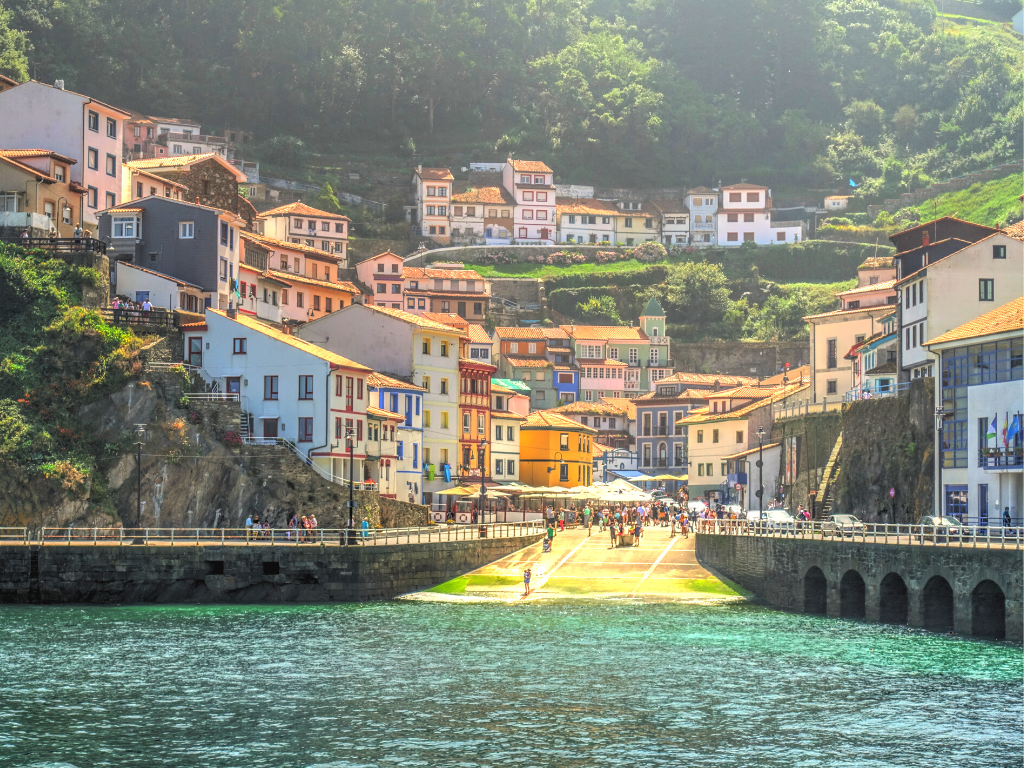
If you really want to avoid the crowds, consider lesser-known beaches in Asturias on the Atlantic coast. Located between the Atlantic Ocean and a mountain range (cordillera Cantabrica), temperatures in summer average around 73 °F (23 °C) with highs around 73 °F (28 °C).
With gorgeous white cliffs, emerald water, and plentiful hiking trails, it’s undoubtedly one of the best places to visit in Spain in June.
If sunbathing is your jam, you’ll find plenty of spots to take in the rays amid the rocky coves. But, if surfing is more your speed, the waves and wind along this part of the Cantabrian coast make it a great spot for surfing.
No visit to Asturias is complete without trying the famous Spanish cider ( sidre) .
Best Things To Do in Spain in June
Spain offers endless experiences with something to see and do and see for every type of traveler. From lazy days in the sun to stuffing your face with tapas, you’ll find plenty of things to do in Spain in June!
1. Go to the Beach
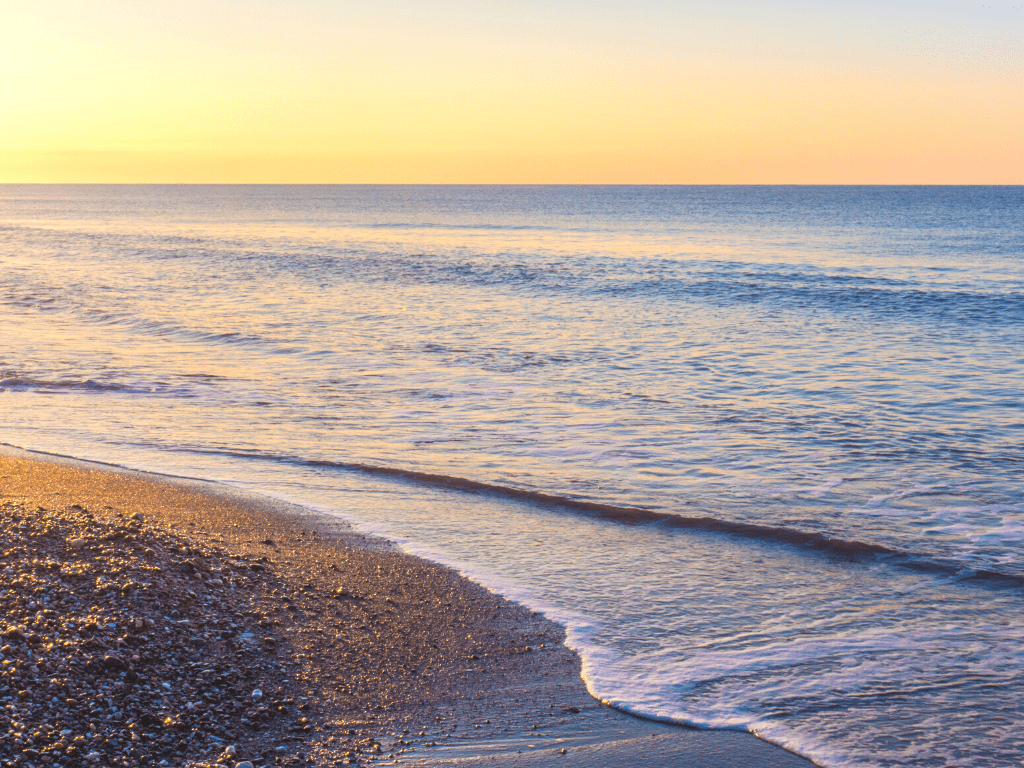
If you’re looking for a relaxing holiday, June is the perfect month to sunbathe at the beach in Spain! Warm and sunny, yet not unbearably hot, some destinations will even provide you with 11 hours of sun!
Expect 79°F (26°C) on average for beaches in Spain in June with some fluctuations. For example, here are the average temps at some of Spain’s most awesome beach destinations:
- Marbella: 82°F (27°C)
- Mallorca: 79°F (26°C)
- Ibiza: 79°F (26°C)
- Canary Islands: 78°F (25°C)
Since peak beach season doesn’t start until July , June’s your last chance to hit popular beaches before it gets too crowded.
2. Participate in Watersports

Swimming and sunbathing are relaxing activities you can enjoy in Spain during the first official month of summer.
However, if you want to get your adrenaline pumping, Spain’s coastal towns and islands offer a vast array of water sports: surfing, parasailing, kitesurfing, kayaking, and scuba diving to name a few.
Tarifa in the southern Cádiz region is especially known for its excellent surfing conditions, propelled by the strong winds in the region. Kitesurfing lessons are extremely popular .
3. Do Outdoor Activities
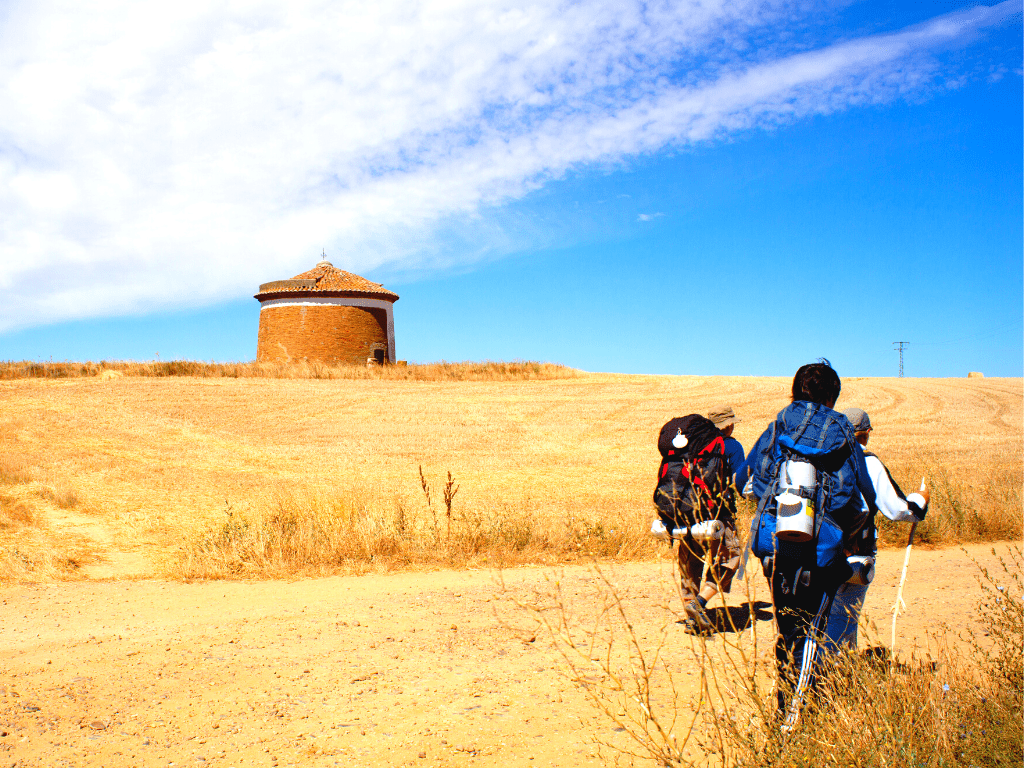
There are many opportunities for adventure travel enthusiasts in Spain.
Whether you’re looking for a day hike or something more strenuous like mountain biking or canyoneering, there are some excellent natural areas and national parks to explore in Spain in June.
For instance, Doñana National Park and Desierto de Tabernas Natural Area are two places worth a visit.
An excellent time to walk the Camino de Santiago pilgrimage trail is the month of June. It’s warm enough to enjoy without having to worry about carrying cool weather gear and likely to be dry after the rainy season. (I walked the Camino in June and July.)
Plus, in July and August, the trails will be more crowded than in June.
4. Learn Flamenco in Andalusia

Flamenco dancing is a vital part of traditional Spanish heritage. With roots in southern Spain, the country’s national dance is now known worldwide as a representation of Spanish life.
When visiting either the interior or southern Spain, we recommend an evening indoors to watch Flamenco dancing with dinner.
Here are the top-rated flamenco shows for popular cities in Spain:
- Barcelona: Flamenco Show at Tablao Flamenco Cordobes (4.5 ⭐, 610+ Reviews)
- Madrid Essential Flamenco Admission Ticket (5 ⭐, 500+ Reviews)
- Seville: Tapas & Flamenco Tour (5 ⭐, 550+ Reviews)
If you prefer to get in on the action, many places offer flamenco dance lessons.
5. Eat Tapas

Tapas are good any time of year. Eating tapas, an array of “small bites” with a group of friends is the ultimate way to enjoy your time in Spain.
Once the sun goes down, set up at an outdoor cafe for the evening. Order a few rounds of shareable tapas and relax the way the Spanish do! Charcuterie boards, patatas bravas , and fresh seafood are all excellent choices
Traveler Tip: Each region in Spain specializes in its own cuisine. If you’re not sure what to order, ask your waiter for recommendations so you can taste the best of each region!
Consider ordering a glass of traditional sangria, too!
Festivals and Events During June in Spain
June is filled with national and regional festivals taking place in Spain. These parties are what Spain is famous for, and getting to experience at least one of them in your lifetime is a must!
Here are some bucket list-worthy events to catch while traveling in Spain in the month of June:
1. Battle of Wine in Haro, La Rioja (June 28-30)
Housing hundreds of vineyards, La Rioja is one of the best (and most famous) wine-growing regions of the country.
But exporting wine isn’t the only thing La Rioja is known for. Each year on June 29th, the town of Haro holds a Batalla de Vino . This epic “wine fight” of Haro should definitely be on your bucketlist!
The Battle of Wine is a celebration in which people drench each other with wine! Of course, there are lots of other celebratory things going on — traditional bullfights and processions, to name a few.
The tasty fight descends down the mountain and moves to the Haro town center for an evening you’ll never forget.
2. The Bonfires of Saint John, Alicante (June 20-29)

Las Hogueras de San Juan (Bonfires of Saint John) is held annually between June 20-29.
The party celebrates the coming summer solstice. Over 200 paper mache monuments are built before being burned to the ground! A number of activities, music performances, fireworks, and other celebrations also take place this week.
On the Noche de San Juan (June 23), families and friends of all ages spend the night at the beach, setting bonfires. Traditionally, the bonfires represent the warding off of evil spirits and the protection of loved ones.
After saying a prayer as the bonfires light up the sky, enjoy barbecues and treats on the open campfire with friends.
3. La Patum de Berga (June 19-23)
This typical Catalan folk festival takes has been taking place since the 14th century in Berga, just 90 minutes drive from Barcelona.
Taking place June 19-23, the streets of Berga become crowded with colorful theatrical performances that include live bands, fire, and lots of dancing.
You certainly can’t miss the fat-headed giants dancing in the streets!
Originally a pre-Christian celebration of the summer solstice, La Patum de Berga now coincides with the Corpus Christi celebrations by the Catholic Church. You will observe all sorts of bizarre-looking characters and intricate symbolism representing Catalan (and Spanish) history.
The festival is an excellent opportunity to enjoy Catalan food, celebration, and unique cultural experiences.
4. Romería de El Rocío, Huelva
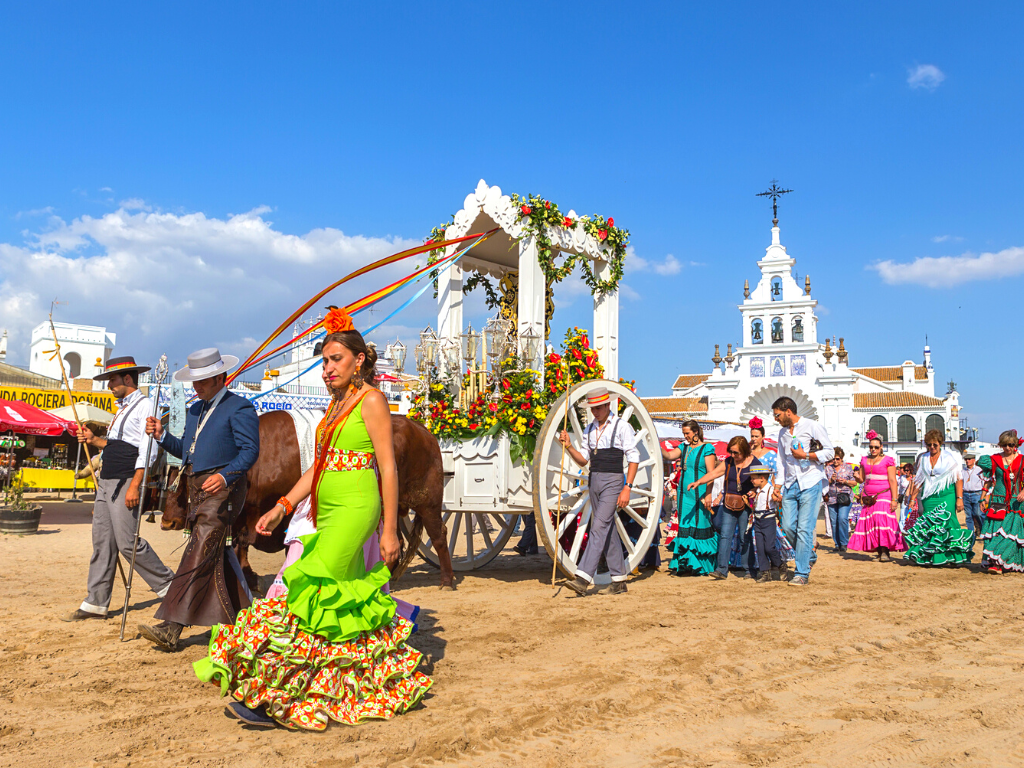
Romería de Rocio is held 50 days after Easter on Pentecost Sunday, typically falling in June.
Held in the southern region of Spain, individuals and families from nearby towns and cities head to El Rocío to pay homage to the Virgen del Rocío.
Townspeople lovingly decorate their horse and carts with bright colors and flowers for the procession.
As for themselves, women dress in gypsy-inspired flamenco dresses while men wear traditional short-cropped jackets and wide-brimmed bolero hats. All the while, they sing traditional folk songs when they travel.
El Rocío Pilgrimage is one of Andalucia’s largest religious festivals and has been celebrated for over 800 years.
5. The Corpus in Toledo
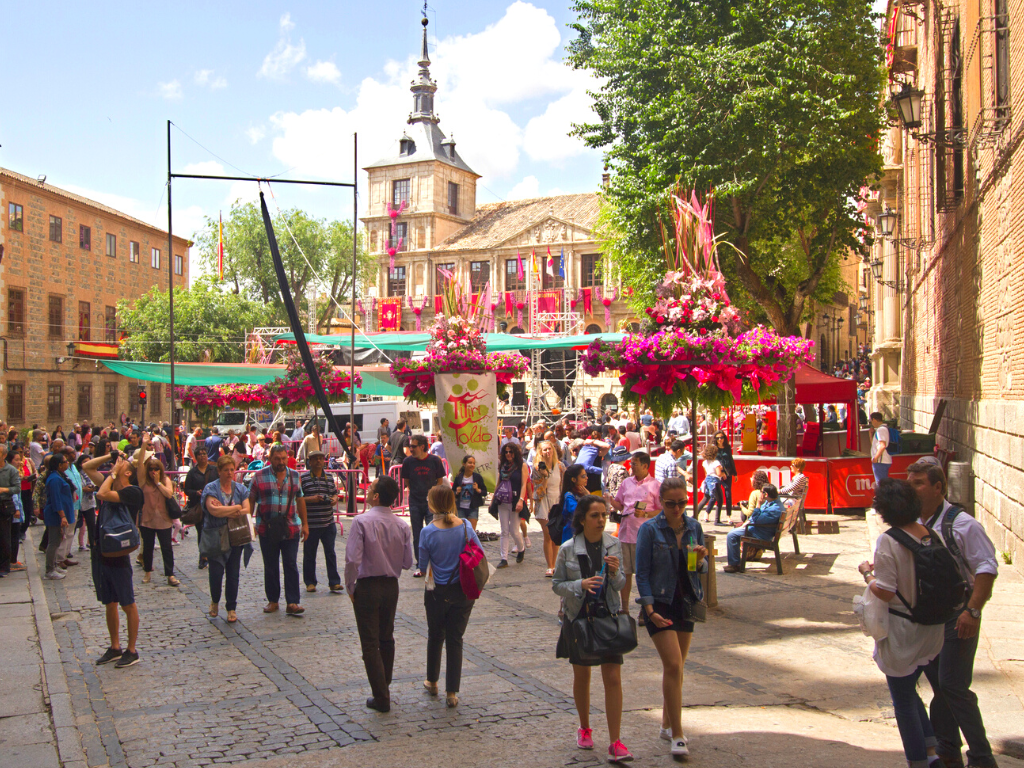
The Corpus Christi festival attracts visitors from all over the world each June.
Although the festival is celebrated in several cities, Toledo is an especially fun celebration to attend.
The procession — which includes military, religious, and civil folk — lasts around three hours, beginning from the Cathedral Primada and winding through some of the most emblematic streets of Toledo.
If you prefer to avoid the crowds during Corpus, we suggest visiting Toledo in the days just before to enjoy the beautiful decorations and flowers that adorn the streets and awnings.
Tips for Visiting Spain in June
Although June isn’t generally considered “high season” in much of Spain, the nice weather, festival calendar, and miles of pristine beaches make it one of the most popular months of the year to visit.
Here are some tips for visiting Spain in June:
- Dress appropriately — Wear light clothes, a hat, and sunglasses as summer in Spain is hot and lines can get quite long to get into some of Spain’s most famous attractions like the Sagrada Familia in Barcelona or Alcazar in Seville
- Wear sunscreen — Whether you’re on the beach, in the city, or in the mountains, the sun is already strong in June
- Attend festivals — There are several festivals that take place in Spain in the summer beyond the ones mentioned in this article
- Book in advance — Accommodation, tickets, and day tours tend to sell out during the summer months. Book in advance so you don’t miss out
Take a siesta — Take a break from being outdoors during the hottest time of the day during the late afternoon siesta from 2-4 pm
What to Pack for Spain in June
When packing for Spain in June, think light, breathable fabrics that can comfortably be layered, especially if you plan on spending most of your day out and about.
Here are some packing essentials for June:
- Lightweight clothes — Pack light clothing that’s moisture-wicking
- Walking Sandals — Get a pair of sandals with a supportive sole that can be dressed up or down for all occasions
- Wide-brimmed Hat — It will protect you from the sun and keep you cool
- Sunglasses — Protect your eyes from the sun in Spain, especially if going out on the water
- Beach gear — Don’t forget to pack your swimsuit and towel for swimming
- Sunscreen — Pack your own as it’s pricey in Spain
- Pashmina and/or lightweight jacket — Early mornings and late nights may still be a bit chilly
- Water bottle — Stay hydrated
While the weather should be nice in Spain in June, always check the weather before your departure and adapt your packing list as needed.
Spain in June: Frequently Asked Questions
Is spain expensive in june.
Yes, June can be expensive in Spain. Peak-season prices for hotels and flights are usually already in effect when you travel to Spain in the month of June. However, you might be able to get a few last-minute deals before July and August, the true peak season for Spain travel.
Is June the best time to visit Spain?
The best time to visit Spain is during the shoulder seasons — Spring (March to May) or Fall (September to November). Yet, June is a good time to visit Spain as it’s relatively sunny and dry. If you’re interested in Spain during the summer, June is an excellent choice since it’s less crowded and less hot than July and August.
How many hours of daylight does Spain get in June?
Parts of Spain get just over 15 hours of daylight in June!
What season is it in Spain in June?
Like the rest of the northern hemisphere, June is the start of the summer tourist season in Spain, which typically lasts from June through August.
Is June summer in Spain?
Yes, June is part of summer in Spain as summer runs from June 21-September 20.
Can you swim in Spain in June?
Yes, it’s warm enough to swim in Spain in June. Alternatively, you can participate in watersports like windsurfing, surfing, or ocean kayaking during the month of June in Spain.
How often does it rain in Spain in June?
Spain is generally dry in June, especially as you get later into the month. However, you may experience some afternoon showers in the northern part of the country.
Is Spain hot in June?
Spain is warm in June. You can expect an average range between 70 °F (21 °C) to low 80s °F (25 °C). However, the interior of the country can push to 90 °F (32 °C).
Is Spain hotter in June or July?
Spain is hotter in July than in June with highs in the 90s °F (32 °C).
Is June too hot to visit Spain?
No, June isn’t too hot to visit Spain. It will be sunny and warm in June. It’s a great time to visit before it becomes sweltering hot in much of the country during the rest of the summer (July and August).
Is Spain humid in June?
June in Spain has some humidity, but not as high as earlier in the year. Here are the average humidity for some popular destinations in Spain (according to currentresults.com):
- Barcelona 72%
- Mallorca 69%
- Santiago de Compostela 75%
- Seville 52%
Is Spain sunny in June?
Yes, Spain is relatively sunny in June with a low chance for precipitation.
Is Spain cold in June?
Spain is not cold in June, with the winter and spring having already passed. However, it can still be chilly in the northern parts of Spain. For instance, in June, Bilbao has highs of 77 °F (25 °C) and an average temperature of only 68 °F (20 °C).
Which part of Spain is warmest in June?
The interior of Spain near Madrid and Andalusia are some of the warmest places in Spain in June, reaching the low 80s (26 °C) most days but with the possibility of getting into the low 90s (32 °C).
What should I wear in Spain in June?
Plan to pack lightweight clothing, walking shoes or sandals, a hat, sunglasses, and sunscreen for Spain in June.
Is Spain crowded in June?
June is a little crowded in Spain, especially in the major tourist areas, but it isn’t as crowded as July and August in Spain .
Is June high season in Spain?
The high season in Spain is from mid-June to early September, with the brunt of tourists flocking the sunny peninsula in July and August.
Is visiting Spain in June Worth it?
In our opinion, yes! It’s totally worth visiting Spain in June. Prepare yourself for long sunny days and moderate summer temperatures, and you’ll absolutely love it!
The great thing about June Spain weather is that you’ll have plenty to do — like visiting the beach, outdoor activities, watersports, or attending a flamenco show.
Another one of the best things about June in Spain is that you’ll likely have smaller crowds since it’s just before the peak season.
Spain in June weather is definitely hot, but if you can plan to be indoors or under an umbrella in the afternoon, the weather is completely bearable.
If Spain in June Isn’t For You…
After reading this, you might have come to the conclusion that visiting Spain in June (or June weather in Spain) isn’t for you. If so, check out these other articles about visiting Spain during other months of the year.
- Spain in the Summer: Everything You Need to Know
- Spain in July
- Spain in August
Spain Travel Guide
🏨 What’s the best site to book accommodations in Spain?
Access a clear and easy hotel booking process that includes hotels, hostels, B&Bs, guesthouses, villas, and more on Booking.com . Or, rent an entire home to live like a local using Vrbo .
🚗 How do I book a train (or bus) in Spain?
Search for the cheapest train and bus tickets to make the most of Spain’s excellent transportation network on Omio ( See Is Omio Legit? ).
🚗 Do I need to rent a car in Spain?
If you want to get off the beaten path, we recommend renting a car via Discover Cars .
📱 Where can I get cellular data for Spain?
Try using Airalo , the world’s first eSIM store! Download, and install your eSIM, and get connected as soon as you land .
💃 Where do I find the best tours in Spain?
Search for top-rated Spain city tours (with reviews!) on Viator and/or Get Your Guide .
📃 Should I buy Spain travel insurance?
Yes! Protect your investment from anything from trip interruptions to unexpected injuries; compare rates on Travel Insurance Master and SafetyWing (which has some of the cheapest insurance for Spain travel when you subscribe to a 1+ Month plan).
✈ What are the best sites to book flights to Spain?
Search Skyscanner for best flights that other search engines miss !
🎒 What should I pack for Spain?
Head to the Ultimate Europe Packing List for Women to get all the info you need on packing for Europe.
Go to our resources page for more booking tools we use to plan our trips.
Blogger & Ex-Spanish Teacher
Tristina Oppliger has traveled to 35+ countries on five continents. Having previously lived in Spain, she loves studying foreign languages and cultures. In fact, she has a Master's in Foreign Language Education and is a former Spanish Teacher! Tristina is passionate about living free—remote work, exploring the world, and finding adventure wherever she goes.

Travelling Without a Passport

Italy vs Spain: Which Trip Should You Take?

Sun, sea, siestas, mouthwatering food, unspoiled landscapes, beautiful towns and easy Mediterranean living is what you can expect from a holiday in Spain and Italy. Both of them make for wonderful getaways from the daily hustle thanks to their idyllic styles of living.
But, if you can only visit one it can be hard to choose between Italy or Spain so allow us to make this easier for you.
We love Italy and Spain, and we know you will too! Take a look at the most popular tours for Italy and tours for Spain for your next adventure.
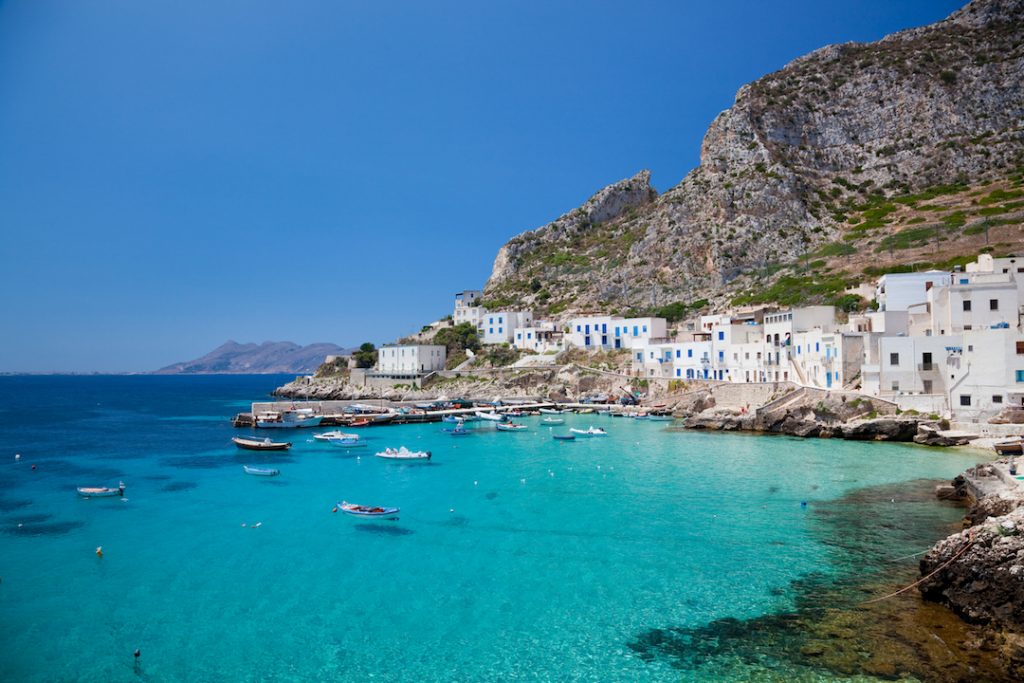
Both Italy and Spain are Food Heavens
Let’s start with the cuisine as this is one of the main reasons why people travel to Italy and Spain. Both are a foodie paradise, each different but equally delicious!
Everyone loves wine, pizza and pasta and Italy happen to be the world’s headquarters for these delicious culinary experiences. Italian cooking is an art that we try but fail to replicate at home. Pure, basic ingredients such as fresh tomatoes, basil leaves, oregano, pine nuts, pesto and parmesan cheese are used to serve up high-quality cuisine, cooked to perfection. It doesn’t get better than this!
See Also: Italy For Every Budget
But wait, we can’t forget dessert! Chocolate mousse and Italian homemade tiramisu will make those with a sweet tooth go wild. Of course, any good meal deserves a good glass of wine, which will be no problem in Italy. Don’t forget to try the local aperitivo as well; classics like a glass of the almond-flavoured amaretto, limoncello or the world-famous sambuca are not to be missed. Do remember, that it is a no-go to order a latte or cappuccino after dinner – this is something you only drink at breakfast. Mamma Mia!
No one can resist the tapas delights of Spain. Take a seat at one of many charming Spanish restaurants (but not before 8:00 pm) and spend a long evening tasting all of the flavours of Spain. Your table will be laden with little bowls of delicious traditional food such as patatas bravas (potatoes), albondigas (meatballs in tomato sauce), deep-fried calamari rings, garlic shrimp, stuffed olives and bread served with aioli.

Also be sure to try the Spanish gazpacho soup, best enjoyed for lunch with a carafe of homemade sangria – the delicious fruit punch wine that was invented here. Or how about a big portion of home cooked paella with freshly caught gambas, topped off with some squeezed lemon juice?
For breakfast, you can have a slice of tortilla de patatas, the traditional Spanish omelette. Yes, it is all mouthwatering and you won’t get enough of it!

Spain is a very large country with many things to see and do, so I recommend focusing on a specific region rather than ‘doing’ the whole country in a couple of weeks. Galicia, Costa Brava and Andalusia are some of my favourite parts of Spain, perfect for road-tripping and enjoying foodie experiences! Food is definitely a highlight of any Spanish experience – for instance, Costa Brava has some of the best restaurants in the world and lots of exciting local eateries, while the seafood in Galicia is second to none. Spain also has some wonderful nature – hiking in the Pyrenees is one of my favourite activities. Any time of the year is a good time to travel to Spain, depending on where you want to go. Summer is lovely in northern Spain, but it can be unbearably hot in the south – winter is a much better time to visit Andalusia. Fall and spring are wonderful pretty much anywhere! – Margherita & Nick, The Crowded Planet
Italy vs Spain: Culture
Both Italy and Spain have a rich culture that you will love! Italians are all about food and family with the mother sitting at the head of the table – every Italian’s greatest pride. The heart is on their tongues and they speak with passion, both in their verbal and body language. It may not be surprising to discover that opera originated in Italy!
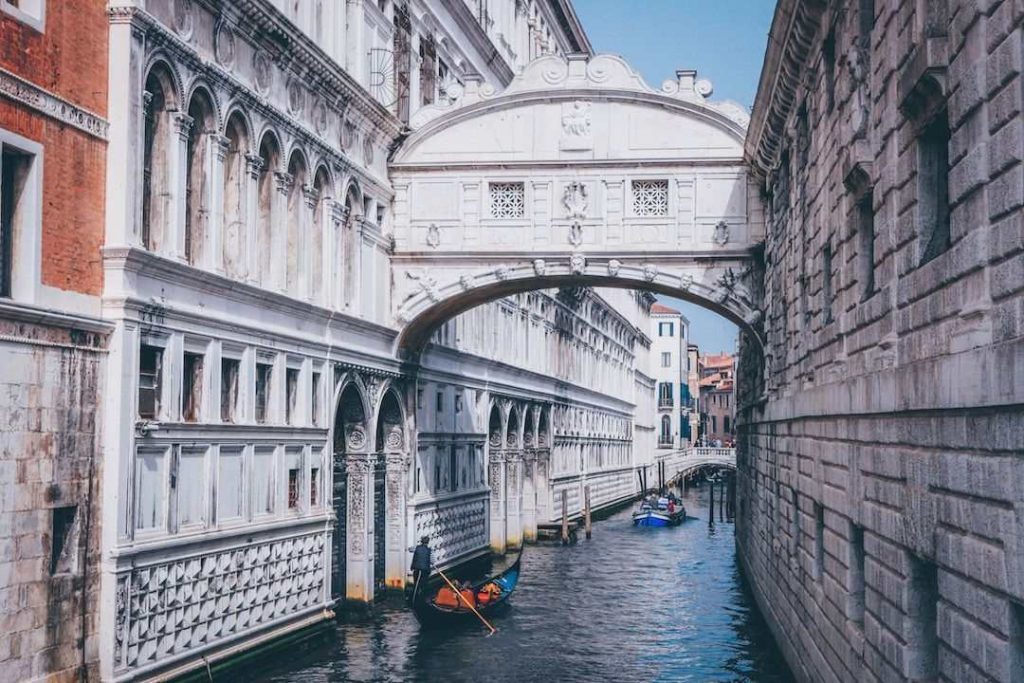
Spain is all about sangria, siestas, and music. The Spanish guitar was obviously invented in Spain, you can enjoy Flamenco music and dances everywhere, food is shared with strangers and there are tons of colourful street festivals waiting to be discovered.
See Also: Spain in Winter: Best Places to Visit
Italy vs Spain: Highlights
Enjoy the food every day during your stay, but be sure to see some of the highlights of these Mediterranean beauties as well.
Rome, Milan, Florence & Venice
Italy is the Roman epicentre and it is home to some of Europe’s most amazing cities with a rich history, archaeological sites, stunning architecture, and museums. You can expect to walk the streets of cities that exude an ancient charm and soulfulness as well as fashion and modern sophistication.
You can see world-famous places like the Colosseum and the Vatican, spot celebrities and get your designer shopping done all on the same day. Rome and Florence feature the most beautiful Roman architecture, while Milan is Italy’s fashion capital and Venice, the one and only ‘floating city’, is one of the most romantic tourist destinations of Europe ruled by endless canals, ancient bridges, and traditional gondola boats.
Travel to: Italy
Don’t miss out on a cultural trip to Pompeii – the sprawling Roman city that got struck by the devastating volcanic eruption of Mount Vesuvius 79 years AD, covering it in layers of ash. Pompeii is an impressive archaeological site, reminding travellers of ancient times and the unstoppable force of nature.
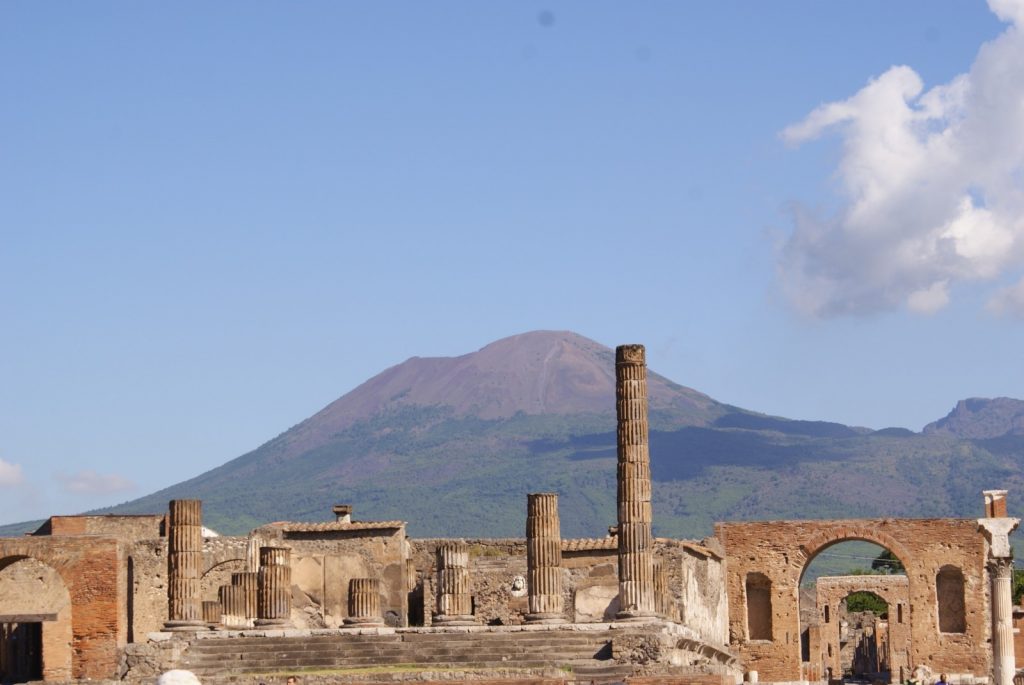
Adriatic coast and Italy’s Islands
We all love the sea and Italy’s rugged rocky eastern coastline, bordering the deep blue Adriatic is breathtakingly beautiful! With the golden sun shining down on you, explore picturesque coastal towns such as Lecce, Polignano a Mare, Trani, Rimini, and Alberobello and dive into the sea as much as you can. You can even go island hopping in Italy, visiting beautiful places such as Sardinia, Sicily, and Capri with their pristine beaches, charming towns and scenic landscapes.
Lake Garda
This is the biggest lake in all of Italy and it’s stunning! A great place to spend a few days, relaxing with your loved ones, enjoying good food and swimming in the lake, taking a break from all the city centres.
For anyone looking to travel to Italy, be flexible about your city of arrival because it’s extremely easy to travel around the country once you’re there (the high speed trains are the best!). Also, remember to bring an empty stomach, an insatiable curiosity and comfortable walking shoes. There is so much to see, do and eat in Italy – and you will love it all! What are the experiences one cannot miss? (foodwise, places to see, events, culture etc.) Everyone should visit Rome and Vatican City at some point. While in Rome, eat cacio e pepe and wander the streets without a destination in mind. For those looking to get away from the hustle and bustle of the city, my favorite destinations in Italy are the Amalfi Coast, Lake Como, Franciacorta, Tuscany and Puglia. Some of these places are on the beaten path and touristy for a reason, while others feel like hidden gems and are well worth discovering. I have traveled to Italy at three different times of the year (January, July and September) and would say that September is my favorite time to travel to Italy. The restaurants are open again after closing down temporarily in August, the air starts to take on a crisp quality as the humidity goes down, and the sea is still warm enough to take advantage of in case you want to go for a swim. – Tausha, The Globe Getter
Barcelona, Madrid, Seville, Granada and San Sebastian
Spain also has beautiful cities that make you stick around for their charm, liveliness and impressive architecture. Barcelona is a top destination in Europe and where you get to admire the stunning lifework of famous artist Antonio Gaudi. Madrid is also artistic and hometown of the Spanish painter Francisco Goya.
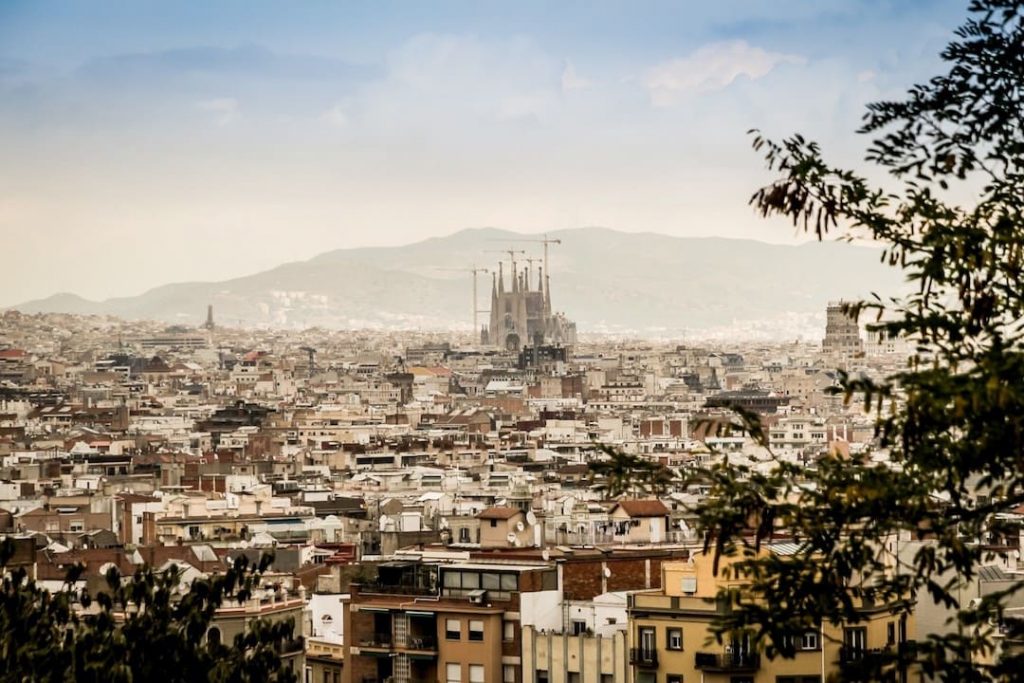
In Granada, you get to enjoy tapas at almost every restaurant or café you stop at for drinks, really giving you a taste of the heartwarming Spanish culture. Seville is another magnificent city and the birthplace of Flamenco music while San Sebastian features a beautiful bay, charming restaurants, and impressive nature.
Do not travel to Spain with a set conceived notions about the country. Spain is much more than the sangrias and tapas. You’ll find out as you travel that Spain is also not all about Sun, Sand and Sea. Beyond the stunning Mediterranean coastline, Spain has a lot more to offer including historic heritage of the Romans in Tarragona, wine trails on the countryside, and plenty of hiking options in the norther mountains of the country. Some of my most special moments in Spain, have come while walking the narrow alleys and exploring the hidden neighborhoods. Exploring street art of Barcelona, taking a walking tour and interacting with some of the artists on Las Ramblas, learning about the architectural god- Antonio Gaudi’s birthplace in Reus, watching Flamenco dancers at one of Seville’s dancing schools are all must on itinerary. Spain is good to visit all time around, but personally I would feel just after Summer (from September to late October), is the right time, when it’s not too cold not to warm. – Deepika, Feet on the Map
Costa del Sol The lively and vibrant Costa del Sol is home to famous beach towns such as Salou, Blanes and Lloret de Mar, much-loved among youngsters because it is all about beaches, the sun, and parties.
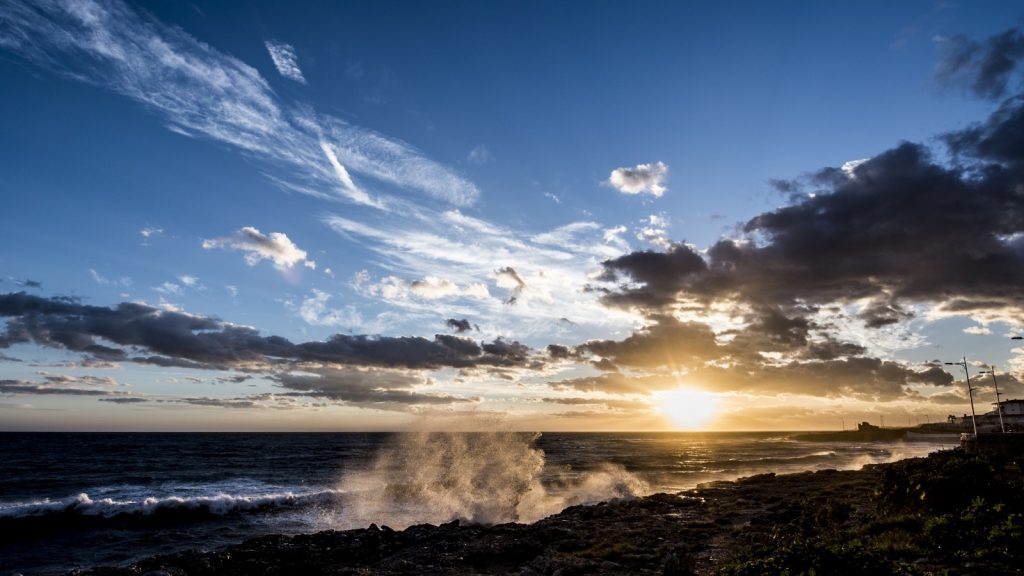
The Pyrenees
The rocky mountains of the Pyrenees are a majestic border between France and Spain. They are also home to amazing hiking trails, national parks, and ski resorts, thrilling any nature lover and adventure enthusiast.
The Islands
Spain boasts many beautiful islands, an attraction to travellers all year round. The Canary Islands, Ibiza, Palma de Mallorca , all are appealing for those seeking nature, as well as for those seeking cultural charm and nightlife.
Travel to: Spain
Italy vs Spain: Getting around
Both Italy and Spain are very tourist friendly when it comes to getting around. There are frequent buses, trains and even planes getting you from one place to another. Prices are affordable and you can get monthly public transport passes as well. Sometimes taking a plane from one city to another is even cheaper than taking the train.

Italy vs Spain: Budget
Both countries have the Euro as their local currency. Spain tends to be a tiny bit cheaper than Italy when it comes to food, accommodation, and alcohol, but overall both countries make affordable holiday destinations, allowing you to see many of the highlights Europe has to offer.
Don’t forget – booking a multi-day group tour in advance to help you manage your travel budget, as a tour often covers the essentials such as local experiences, accommodation and food.
Ciao! or Adiós!
Fallen in love with both destinations but can’t decide? Take a look at the most popular tours in Italy and Spain for your next adventure.

Stephanie P
Stephanie went out to see the world and never came back. From the lowlands of Europe, she traveled eastwards and she is still on the way to seeing the rest of the world. She loves being out in nature, meeting people of different cultures, making music and writing blogs about her travel experiences.
Related Articles
- Food & Drink
Your Guide to Amsterdam’s Secret Bars and Speakeasies
One of the most popular cities in Europe, Amsterdam has no...
- North America
Your Guide to Easter Around the World
Easter is a time to celebrate new beginnings. The symbols and...
- Central America
The Best Spring Break Destinations
As long as academics have been a part of our lives,...

Bali vs. Thailand: Where in Southeast Asia Should You Travel?
Get unlimited access to the world's best travel stories. subscribe now., privacy overview.
The pain in Spain: Where are Brits not so welcome this summer?
- Friday 19 April 2024 at 7:33pm
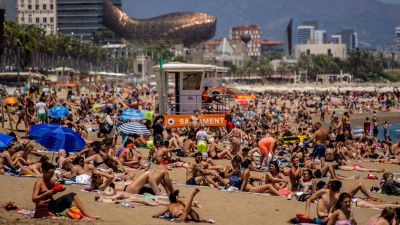
Tourists are facing a backlash from residents in Tenerife as islanders say they are struggling to cope with the influx of visitors, ITV News Europe Editor James Mates reports
Spain is one of the most popular destinations for British tourists, but the country is feeling the backlash of the cheap flights and sunny climes as large numbers of visitors are causing big problems.
A number of provinces have taken matters into their own hands and are providing guidance - and in some case strict rules - for tourists visiting over the summer, as they try and tackle overcrowding and the problems that come with it.
Tourism represents nearly 12% of Spain’s economy but there has been growing pressure from locals for governments to put measures in place to reduce the number of visitors.
So which parts of Spain might not be so keen for Brits to descend this summer?
Canary Islands
Protestors in Tenerife started a hunger strike on April 12 as part of a wider campaign demanding the Canary Islands government tackle the effects of excess tourism in the region.
Hundreds of people linked arms to form a human chain to demonstrate against the building of an additional hotel and beach resort, as well as future projects aimed at attracting more tourists. The hunger strike was still underway on Wednesday at the time of writing.
The wider movement is called Canarias Se Agota, which means 'The Canaries Have Had Enough'.
In an Instagram post the organisation said the Canary Islands are "exhausted" because of the "excessive tourism" and the "lack of attention to the basic needs of the population".
Last year the then-mayor of Barcelona described tourism as a "great challenge" for the city, and suggested there needed to be a way to limit the number of people pouring in during holiday season.
Ada Colau limited the number of hotel beds in the city during her tenure, highlighting that the city needs homes so there is space for residents to live in the busy centre.
Her successor, Jaume Collboni, banned cruise ships from docking at the Muelle Barcelona Norte and the World Trade Centre docks, a mile away from the Gothic quarter, in October.
Now cruises must dock at the Moll d’Adossat pier, which is a 30-minute bus ride from the historic centre.
Meanwhile one neighbourhood went as far as to get a local bus route removed from Google and Apple Maps to discourage tourists from using it as it was often too busy for residents to fit onboard.
“We laughed at the idea at first,” a local activist, César Sánchez, told the Guardian. “But we’re amazed that the measure has been so effective.”
Wider Catalonia region
Barcelona is the largest city in the Catalonia region, but authorities for the entire area are considering imposing water restrictions on tourists if domestic consumption does not decrease.
The Catalan government is considering a restriction of 100 litres of water per day per tourist for hotels for three months as it looks to tackle drought in the area.
According to Barcelona’s hotel guild, the average tourist to Barcelona in 2022 used some 163 litres per day, while the figure rose to over 240 litres for luxury hotels.
The limits for tourists would not include the water used to fill swimming pools.
Majorca has introduced a series of new rules over the last couple of years that aren't explicitly preventing tourists from enjoying the island, but do seek to weed out "drunken tourism".
A number of restaurants banned shirtless, costumed or football-shirt-wearing travellers, according to Juan Miguel Ferrer, the chief executive of Palma Beach.
Swimwear, trunks and novelty accessories bought from roadside vendors - such as gold chains - are also said to be banned.
"Since May 10, we’ve been suffering the arrival of large groups of tourists who are only looking to get drunk in the streets, or on the seafront or even on the beach,” Mr Ferrer said in 2022.
“You’re not going to come here in beach clothes or come straight from drinking in the streets."
Alicante introduced new noise-related restrictions in 2023 in response to influxes of tourists causing disruption for locals.
Rules had originally been put in place in 2019, but they were strengthened last year. The array of noises encompassed by the regulations include open air concerts, use of musical instruments on beaches, and shouting.
The local city council warned of hefty fines for anybody flouting the rules.
Money matters and passport pains
Post-Brexit, Brits are subject to the 'third states' rules Spain imposes on visitors from outside the European Union.
A traveller visiting Spain must "present proof of having sufficient financial means for the proposed stay", or at least the ability to legally obtain that money, according to the Spanish foreign ministry.
In 2023, the minimum amount required was $120 (£97) per person per day, and the traveller had to have at least $1100 (£885) or its equivalent in foreign currency regardless of the length of the stay.
Travellers can show they have enough money by presenting cash, travellers' cheques, a credit card with a bank account statement, an up-to-date bank book or similar. The ministry states that bank letters or online bank statements are not accepted.
Brits flying abroad are also being warned about post-Brexit passport rules , which have landed travellers with hefty fines.
Some families are finding themselves thousands of pounds out of pocket when they have been banned from boarding flights due to the rule changes.
When the UK was a member of the EU, British passports remained valid up to and including their expiry date for travel to other EU countries, but now passports need to be valid for valid for at least three months after the date you intend to leave the EU country you are visiting.
More details of the post-Brexit rules on passports can be found on the ITV News website .
Want a quick and expert briefing on the biggest news stories? Listen to our latest podcasts to find out What You Need To Know…

IMAGES
VIDEO
COMMENTS
The temperature in July in Spain averages range between 70 °F (21) 21 to 25 °C to low 80s °F with relatively low humidity. Chances of rain are rare during July in Spain. The warmest July weather is in Andalusia, Spain's southernmost region. For instance, Seville, Córdoba, and Granada see highs in the 90s (32 °C) in the month of July.
Galicia. Islas Cíes, Galicia, Spain. Galicia is one of the regions of Spain with a temperate and humid climate. Summer temperatures are generally pleasant, with a typical average of 77 ºF (25°C) in July. The maximum temperature varies from place to place but is usually between 86 ºF (30°C) and 95 ºF (35°C).
The main draw in Cordoba in July is the Festival de la Guitarra, featuring flamenco, blues, classical guitar and a host of other styles. Cordoba is also home to Mezquita, one of the largest mosques in Europe. It draws a lot of tourists. especially during the summer months, but is worth a visit if you're in town.
July in Spain (along with August) is the peak of the tourism season. This coupled with the high temperatures means that these two months are the worst time to visit Spain for many people. Average Temperature: Temperatures in Spain in July tend to sit around 30°C (86°F) in the southern/central locations and may see highs exceeding 35°C (95°F ...
Summer in Spain means one thing: heat. By July, Madrid will be hot and dry (temps push around 90°F/32°C), and many Madrileños will have abandoned the city for the relatively cooler climate on the coasts. If you do plan on touring the capital during this month, try to keep your daytime walking tours of the city to a minimum.
San Sebastian is the jewel of northern Spain. It's only a stone's throw form the French border and showcases the cream of Basque Country culture through its unique cuisine (a type of small-dish tapas that's known as pintxos), architecture, and day-to-day life. But we think it's worth a place among the best places in Spain to visit in ...
Grec ( Barcelona, June 26-August 31, 2019): Theater, dance, music, and circus come together to form this colorful festival lasting all summer long. Madrid Orgullo (June 28-July 7, 2019): Spain's largest gay pride event, with a full week of events celebrating love and diversity. Córdoba Guitar Festival (July 4-13, 2019): An epic musical ...
Madrid's temperature in Spain in July generally sees highs of 88°F (31°C) and lows of 66°F (19°C). The city's humidity consistently remains low at 35%, promising a dry heat. ... Other noteworthy attractions you should see include the Paseo del Arte, a half-mile stretch with three of the world's best art museums, including the Prado ...
The popular coastal city, Barcelona, is slightly cooler at 80 degrees Fahrenheit, but as travelers head south, the temperature's going up. However, going to the Atlantic coast in the Basque Country, the temperature is comfortable at 73 degrees Fahrenheit. Walking tours are doable as Spain in July weather is downright great, with lots of sun.
While Spain is generally a safe country to visit, there are a few safety precautions you should keep in mind when traveling in July. First, be aware of the heat. Stay hydrated by drinking plenty of water and avoid spending too much time in the sun during the hottest part of the day.
Temperature: The average high temperature is around 31°C (88°F), while the lows at night hover around 20°C (68°F), creating perfect conditions for enjoying the island's beaches and nightlife. Average days of rainfall: Rainfall is scarce in July, with about 1 to 2 days of rain typically.
Northern Spain can still be cool in April. It experiences daytime temperatures from 54°F (12°C) to 61°F (16°C). You should expect occasional rain showers. Southern Spain enjoys warmer and sunnier weather. Daytime temperatures range from 63°F (17°C) to 72°F (22°C) (or even higher in some towns).
Spain weather in July. July is an ideal time for tourists to enjoy the warm beaches in Spain. Summer in Spain is at its peak in July. You can find the warmest temperatures in inland cities. For instance, temperatures in Madrid average around 25°C with highs of 33°C. The south coast is characterized by hot temperatures frequently reaching 31°C.
In essence, Spain in July is a double-edged sword similar to June in Spain, that appeals to sun lovers, history fans, and travelers equally while wielding both scorching intensity and subtle allure. For a genuinely memorable trip to Spain, visitors should embrace the weather that suits their needs and make sure to pack appropriately.
2. Festival de Granada. If you're visiting Spain in the month of July, you can be a part of the world-class performing arts festival. If you're someone who loves theatre, drama and art - You can treat your senses at this grand festival. Every year, the festival is hosted at the Alhambra Palace in Granada, Spain.
In July, the average temperature in Spain ranges from 21°C to 25°C (low 70s°F) to a high of 32°C (low 90s°F) in some areas of Andalucia. Inland Andalucia tends to be hotter (e.g cities like Seville and Cordoba) while coastal areas tend to be slightly cooler. Madrid, which is also located inland, can reach around 32°C (90°F) during the day.
All of this goes to show that September is a simply magical time to visit Spain. October - Best Time to Visit Andalusia. Average Temperature: 65 - 75°F. Highlights: Way less tourists | Pleasant weather | Good time to visit Andalusia | Surfing in Northern Spain. Festivals: Bienal de Flamenco | Week of Architecture
Bilbao. #15 in Best Places to Visit in Spain. This northern city in Spain's Basque Country sits in the middle of a beautiful valley, affording incredible views of the city and its rolling hills ...
Spain in January: In Barcelona, pack for average temperatures of 5°C (41°F) to 15°C (59°F). On average, January in Barcelona is quite dry with only a handful of rainy days. Madrid will be a bit cooler with temperatures ranging from 1°C to 10°C (34-50°F) with around 9 days of rain.
1. Madrid, Seville, Granada. One of my favorite itineraries for 7 days in Spain! This plan is perfect for a first visit to Spain and those looking to see the TOP sights. 2 NIGHTS MADRID. 3 NIGHTS SEVILLE WITH OPTIONAL STOP IN CORDOBA. 2 NIGHTS GRANADA. Madridto Seville is a quick 2.5 hour journey by high-speed train.
In my opinion, Frigiliana is one of the best places to visit in Spain to get away from it all. You know, when you want to take a trip and have it feel like a completely separate reality. Located near the southern coast just 15 minutes outside of Nerja, the white town of Frigiliana has immaculate mountain town vibes.
On the whole, temperatures in Spain in June are comfortable for walking around for hours exploring. You can expect an average range between 70 °F (21 °C) to low 80s °F (25 °C). However, you can expect some variations in temperature between the northern region, interior, and coasts during the month of June.
Italy vs Spain: Budget. Both countries have the Euro as their local currency. Spain tends to be a tiny bit cheaper than Italy when it comes to food, accommodation, and alcohol, but overall both countries make affordable holiday destinations, allowing you to see many of the highlights Europe has to offer.
Tourism represents nearly 12% of Spain's economy but there has been growing pressure from locals for governments to put measures in place to reduce the number of visitors. Don't let a post ...